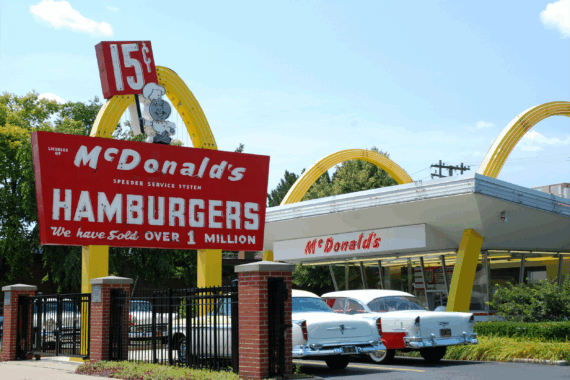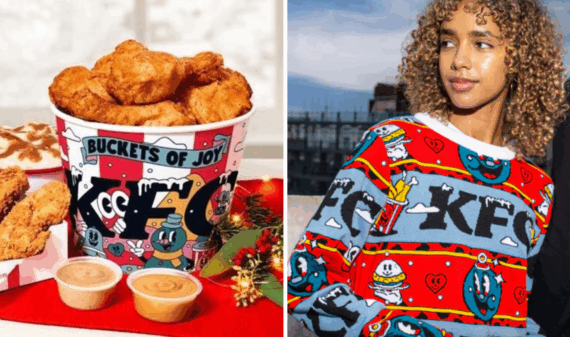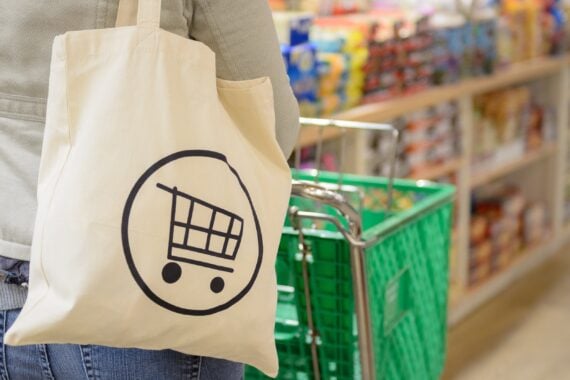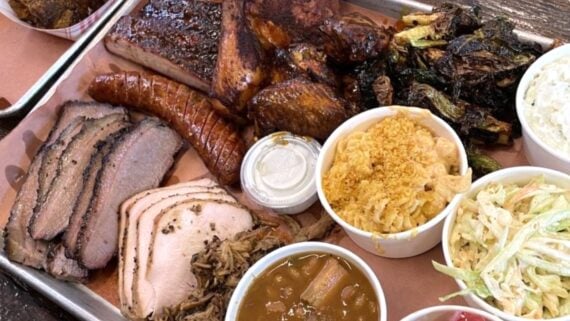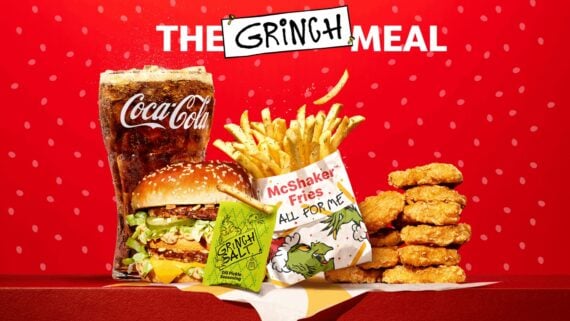Yesterday’s drive-thru windows and super-sized meals are yielding to the self-service kiosks and lighter, snackier diets of today as fast-food chains fight to survive. A look back at restaurants throughout the years reveals significant changes in their appearance and offerings.
How many of these iconic fast food designs and menus do you remember?
McDonald’s Then
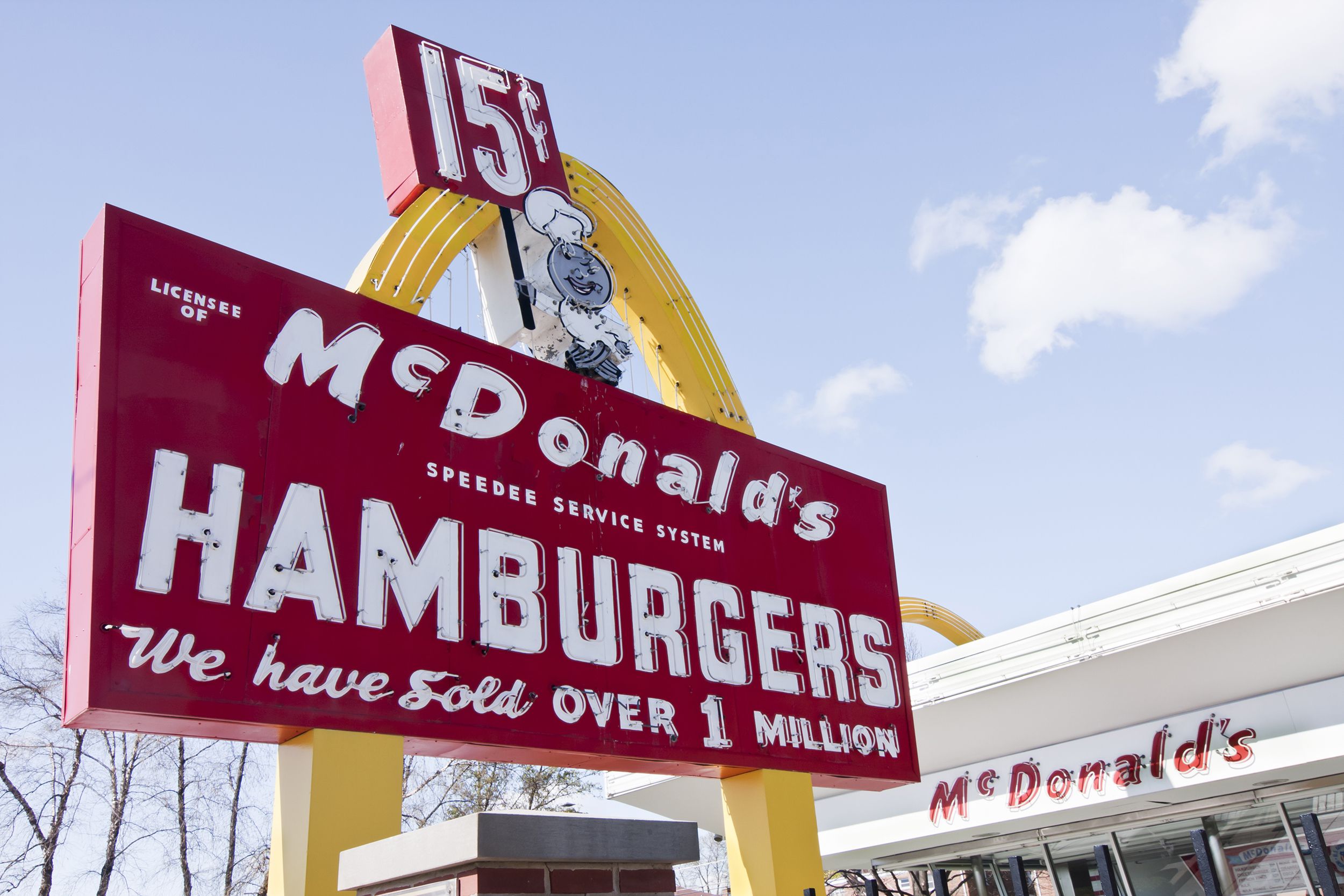
Ray Kroc bought the original McDonald’s from the McDonald brothers after visiting in 1954 and founded McDonald’s as we know it in 1955. The San Bernardino, California, location sold burgers for 15 cents and had the iconic golden arches that yielded the McDonald’s logo.
McDonald’s Now
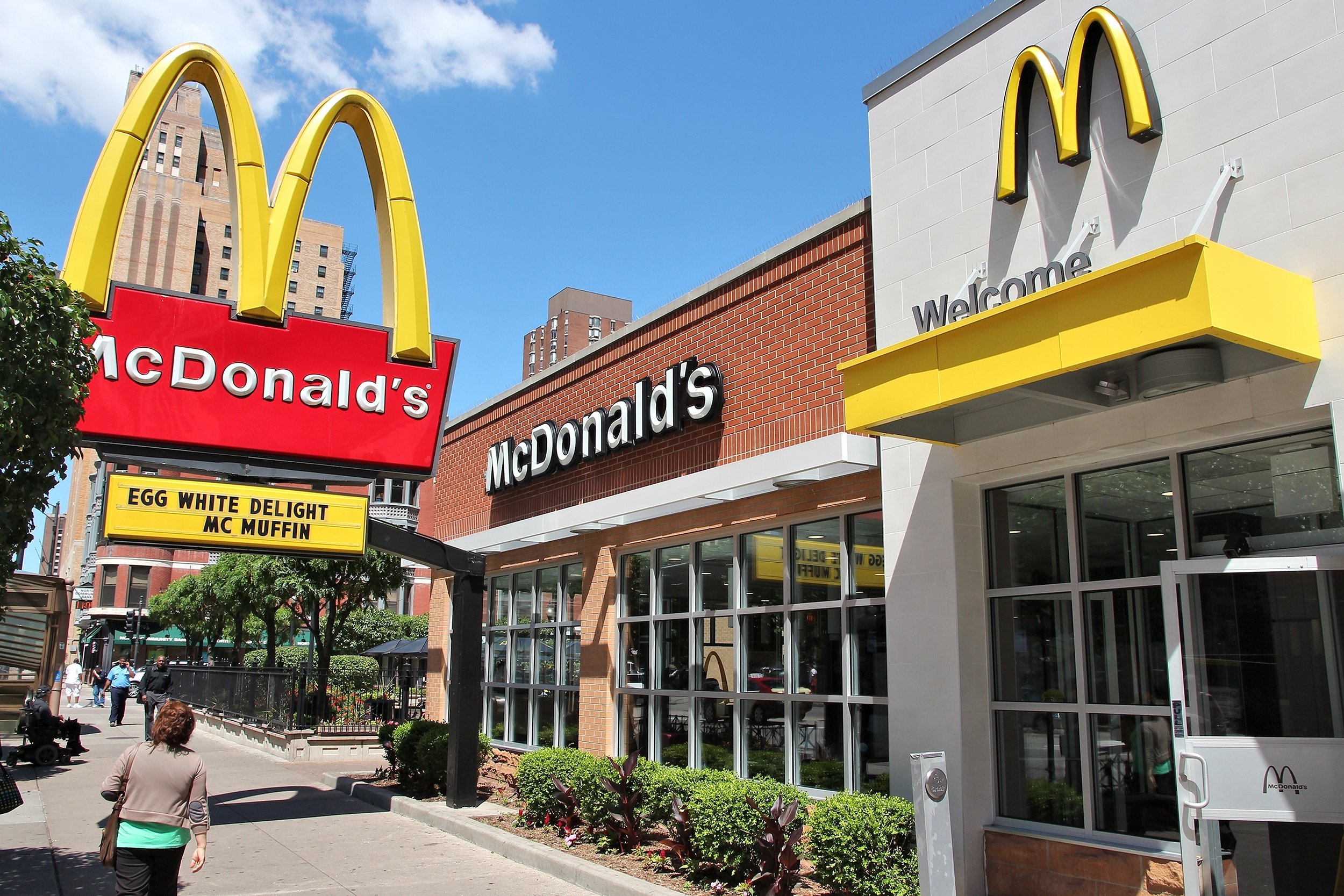
McDonald’s underwent a $6 billion overhaul of its 14,000 U.S. restaurants with new furniture and décor, updated exteriors, table service, and digital kiosks for ordering, customizing, and paying for meals. The menu boards in the restaurants and drive-thru lanes have gone digital, and customers using a mobile app get their own parking spots. McDonald’s also recently partnered with IBM to work on automating its drive-thrus.
McDonald’s Menu Then
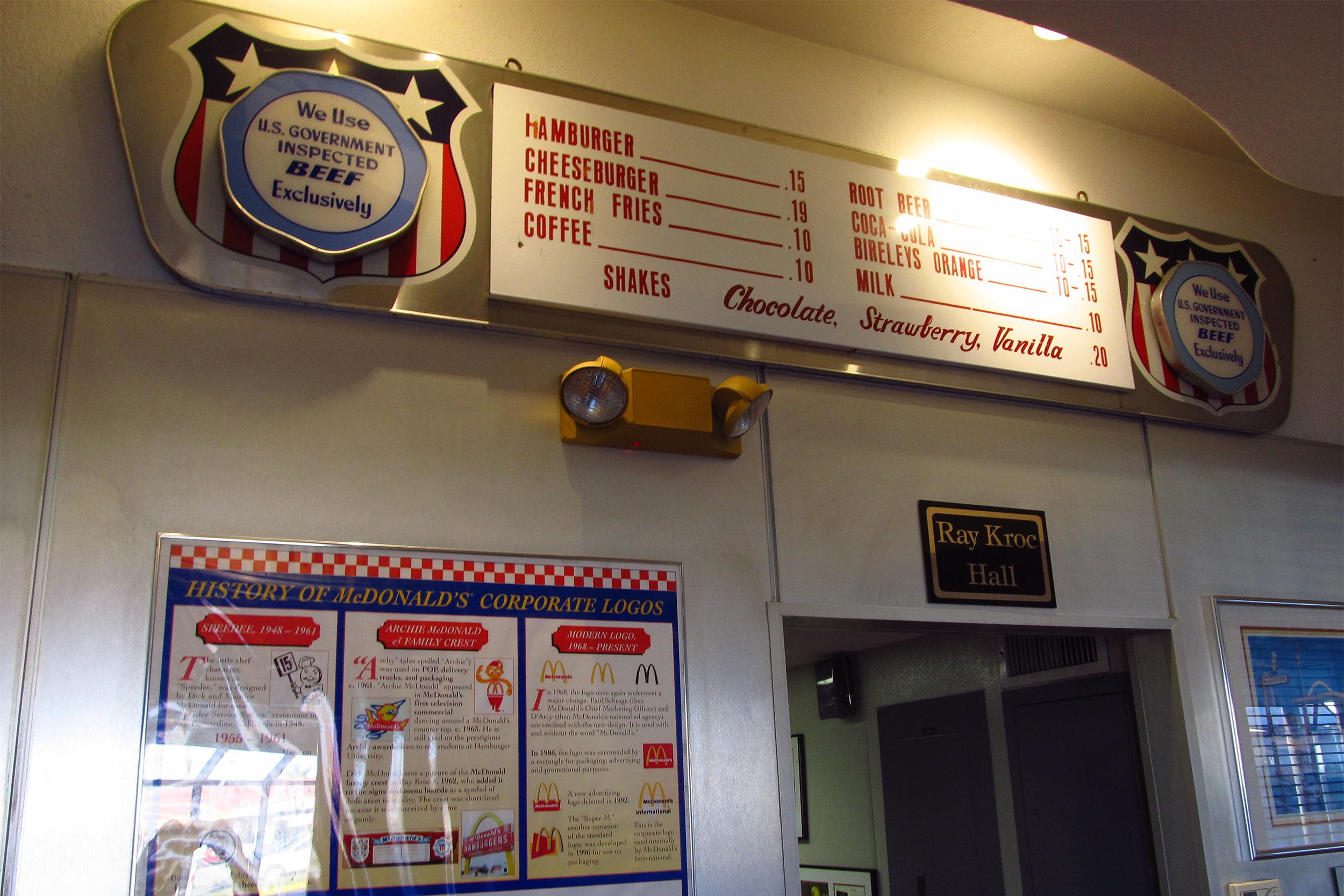
Dick and Mac McDonalds’ menu began with barbecue but was streamlined to hamburgers and cheeseburgers by the time Kroc showed up. Shakes (which cost more than the burgers), fries, and five drinks rounded it out. The Big Mac didn’t show up until a franchisee in Pittsburgh created it in 1967.
Related: 23 Discontinued McDonald’s Menu Items That Most People Won’t Remember
McDonald’s Menu Now
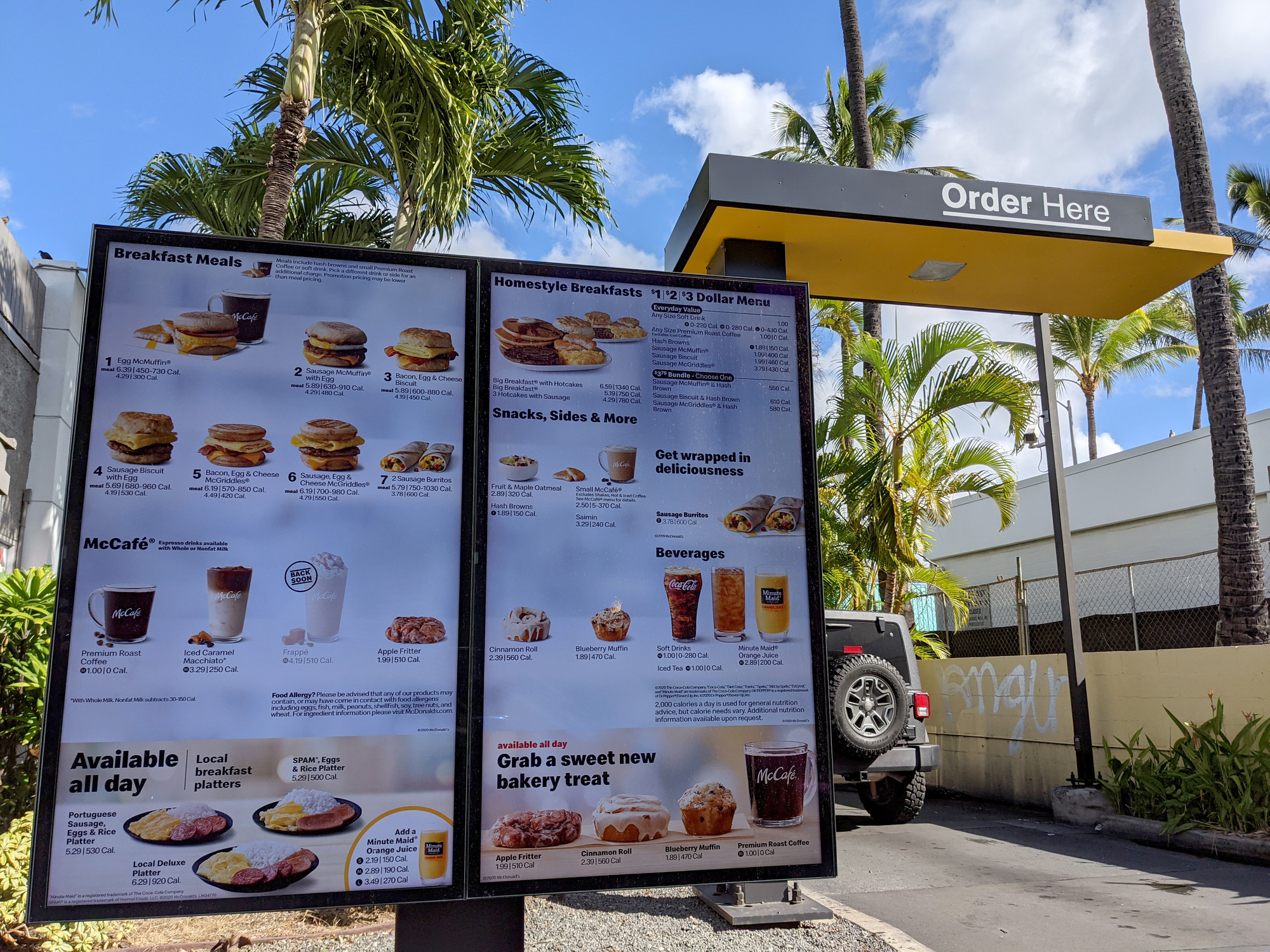
McDonald’s menu has undergone countless menu tweaks over the years, including the most recent addition of a new value menu, which they’ve aptly named the McValue Menu (though we’re skeptical of how much value it actually offers).
While the pandemic ended McDonald’s all-day breakfast (R.I.P.), the chain has just announced that it’s expanding its breakfast menu by bringing back the fan-favorite bagel sandwich nationwide.
If you’re curious about the unique menu items McDonald’s offers at international locations, you might consider a trip to Chicago where you can try some of them.
Taco Bell Then
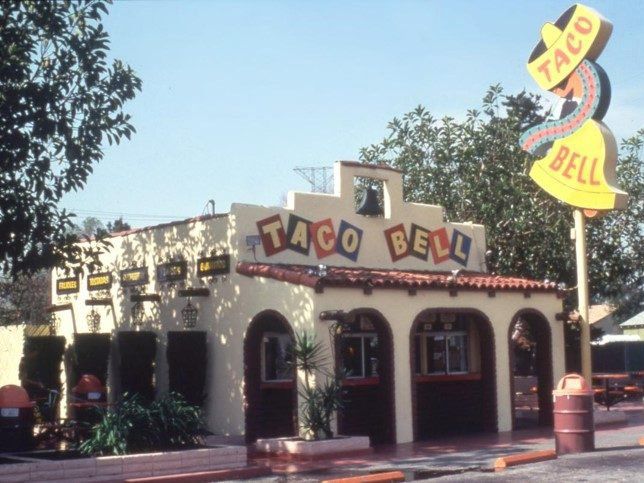
Glen Bell’s first idea wasn’t a taco. He opened a hot dog stand called Bell’s Drive-In in San Bernardino, California, in 1948, but watched customers line up for a Mexican restaurant called the Mitla Cafe and its hard-shelled tacos across the street. Bell shadily got the recipe from the Mitla and opened Taco-Tia in late 1951 or early 1952. The first Taco Bell opened in Downey, California, in 1962.
Related: Live Más: 20 Spicy Secrets Behind Taco Bell’s Success
Trending on Cheapism
Taco Bell Now
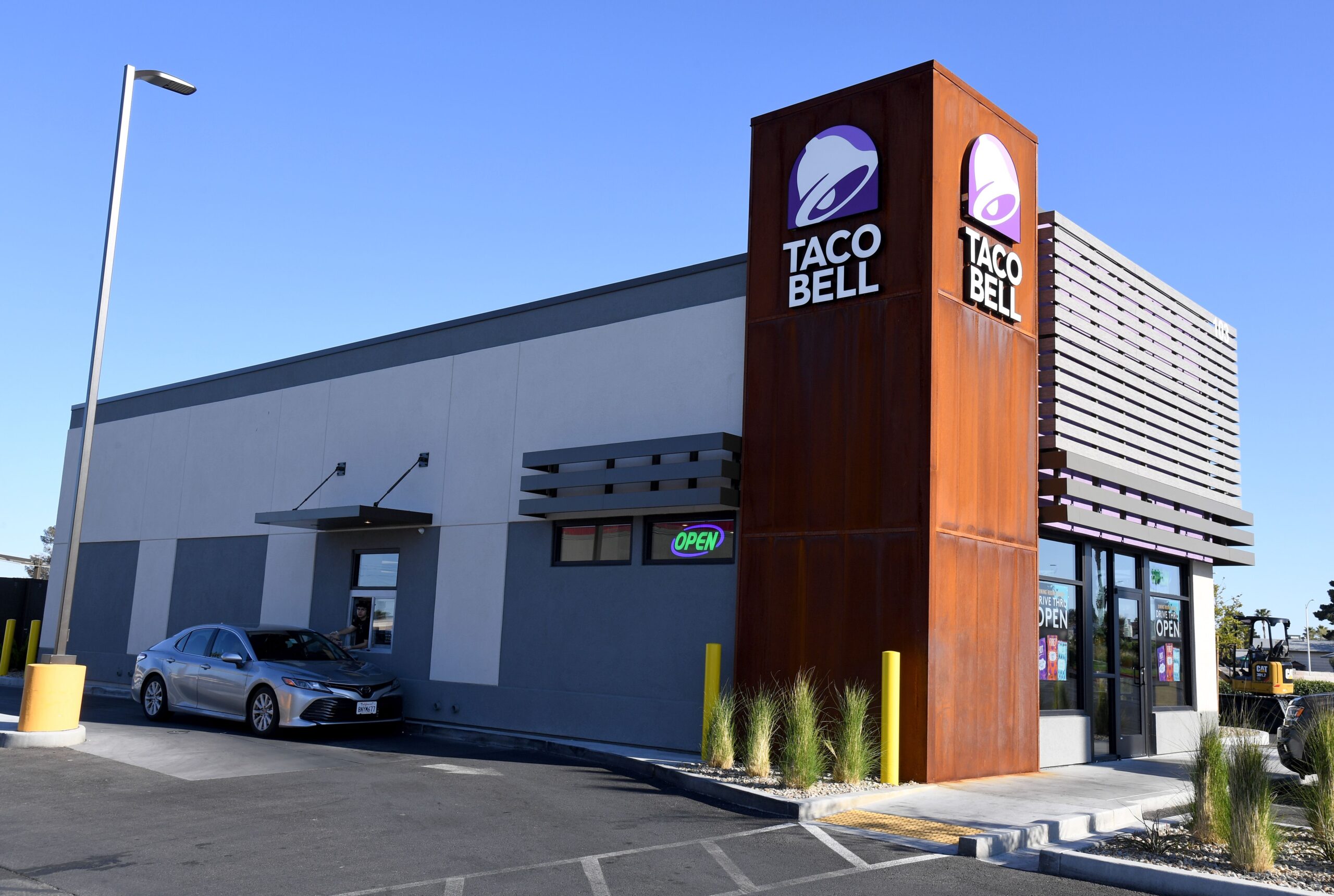
Taco Bell has more than 6,000 locations, where it’s been trying out new designs since 2016. The restaurants also unveiled self-order kiosks. During the pandemic, hours were cut, but otherwise, the drive-thru/carryout model held.
Taco Bell Menu Then
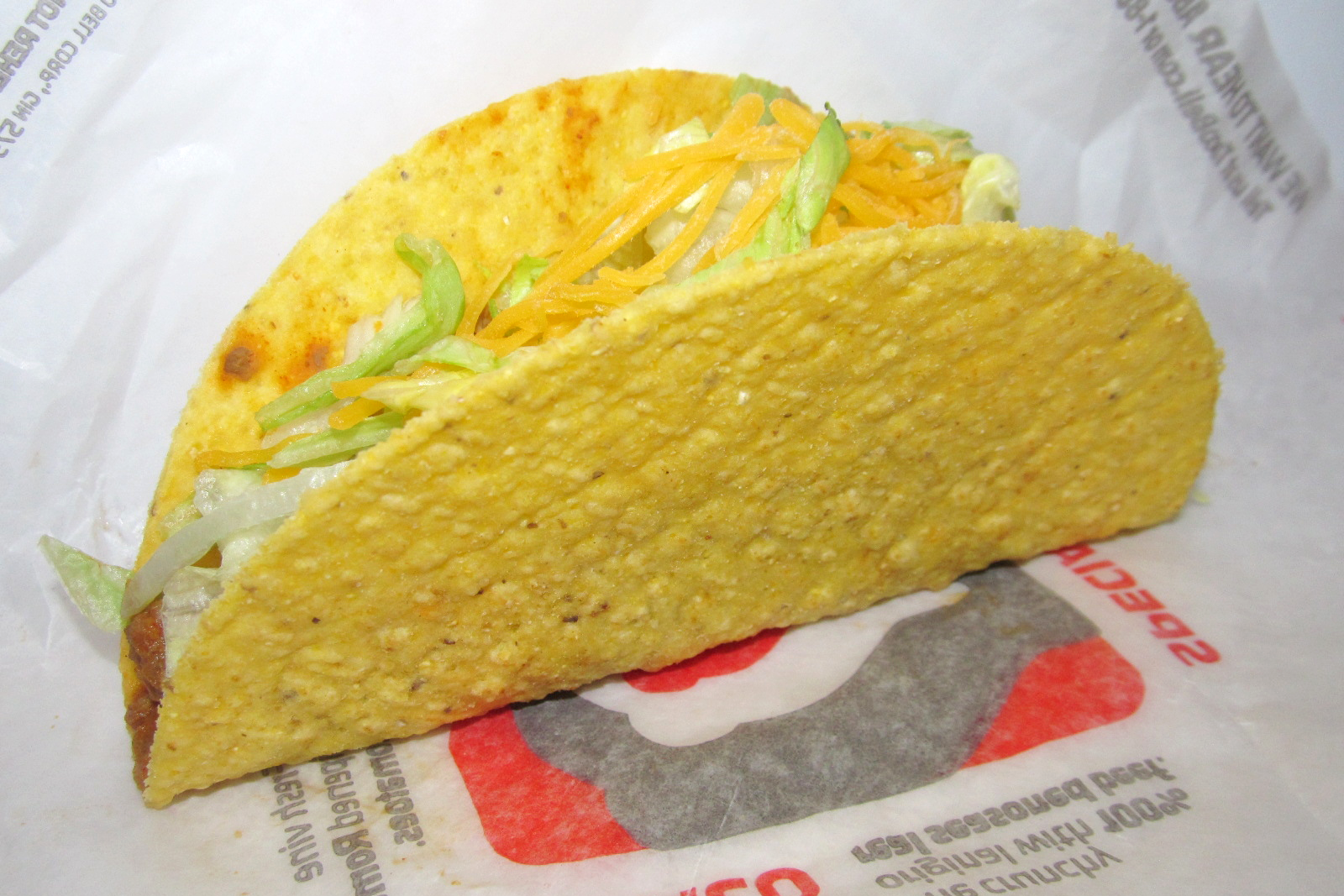
The tacos and burritos were there, and “tostados” were basically the tostadas of their time. As for the rest of the menu, it was limited to beans and cheese, and drinks.
Related: Fast-Food Items Overdue For a Comeback
Taco Bell Menu Now
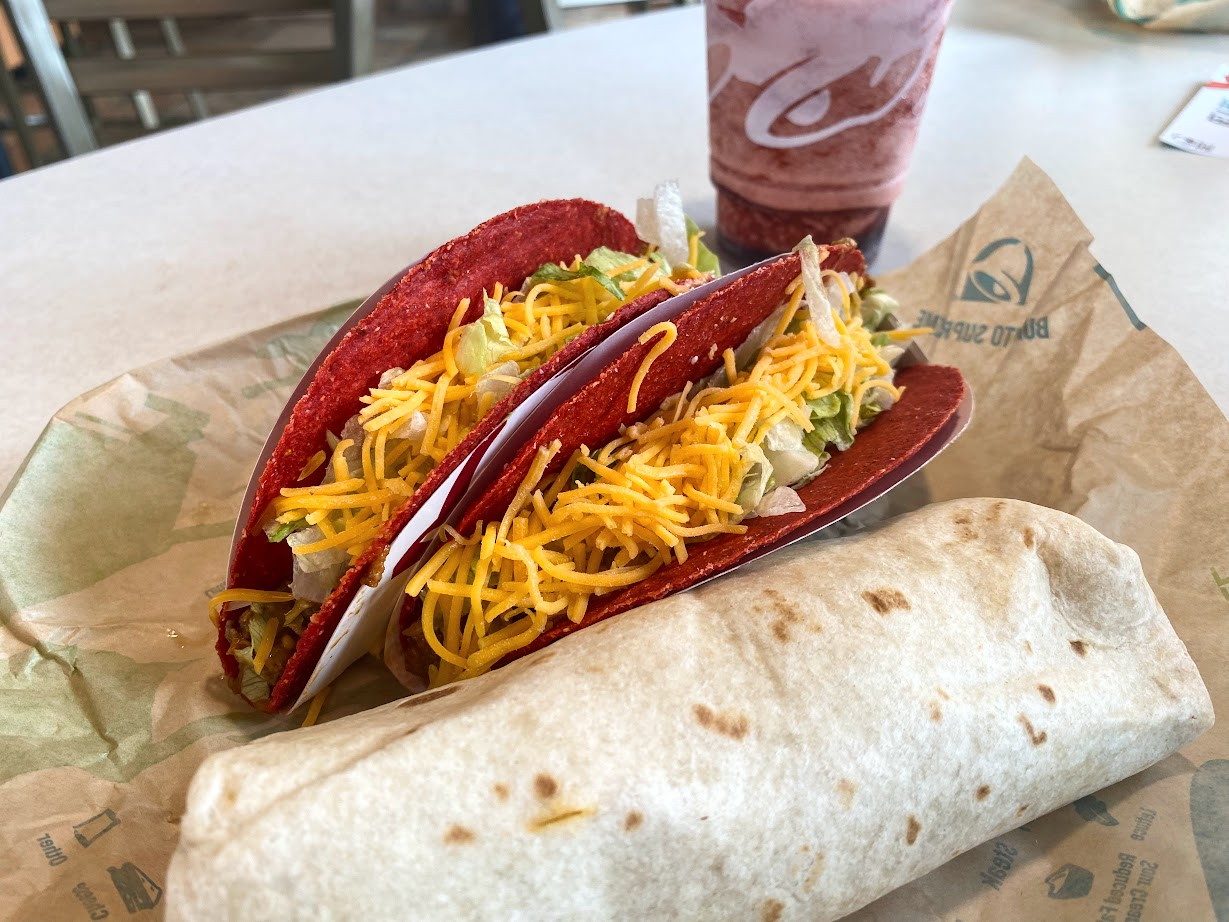
Taco Bell excels largely because it’ll do what others won’t. It has a dozen tacos, sure, but it makes Doritos taco shells and double-decker tacos wrapped in other tacos; makes “taco shells” out of a fried egg or molded fried chicken; and most importantly, will make the double chalupas, crunchwraps, and Mexican pizza that its late-night customers crave during its invented “fourth meal.”
Sign up for our newsletter
Burger King Then
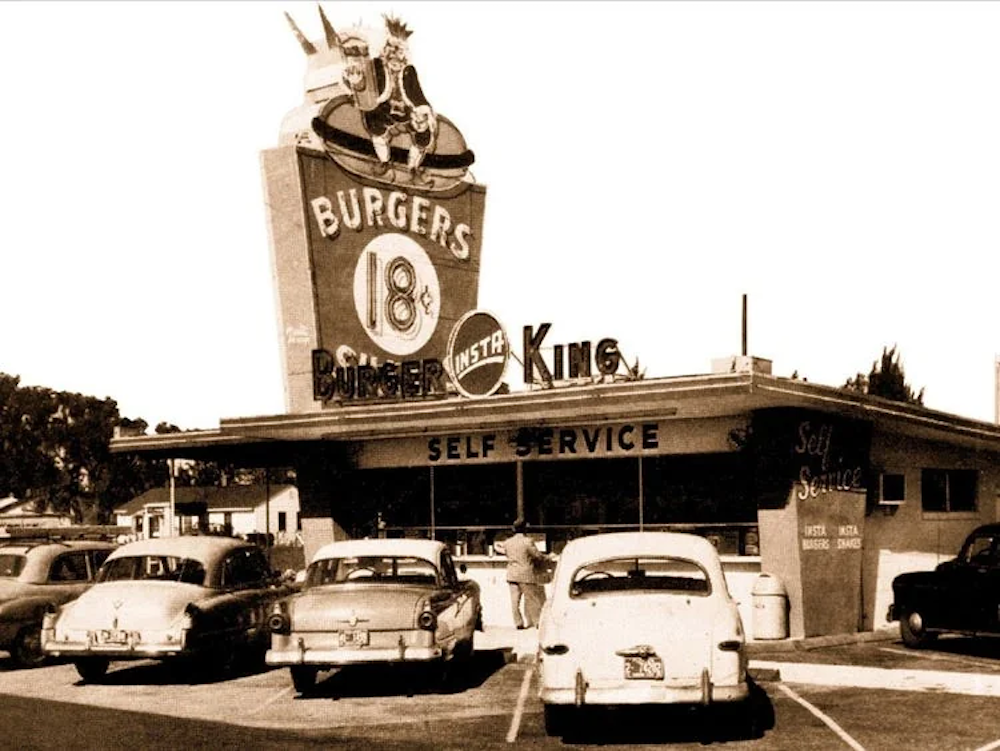
Founded as Insta-Burger King in 1953 in Jacksonville, Florida, and built around flame-broiling devices — known as Insta-Broilers — it became simply Burger King when two Miami franchisees took over the company in 1959.
Burger King Now
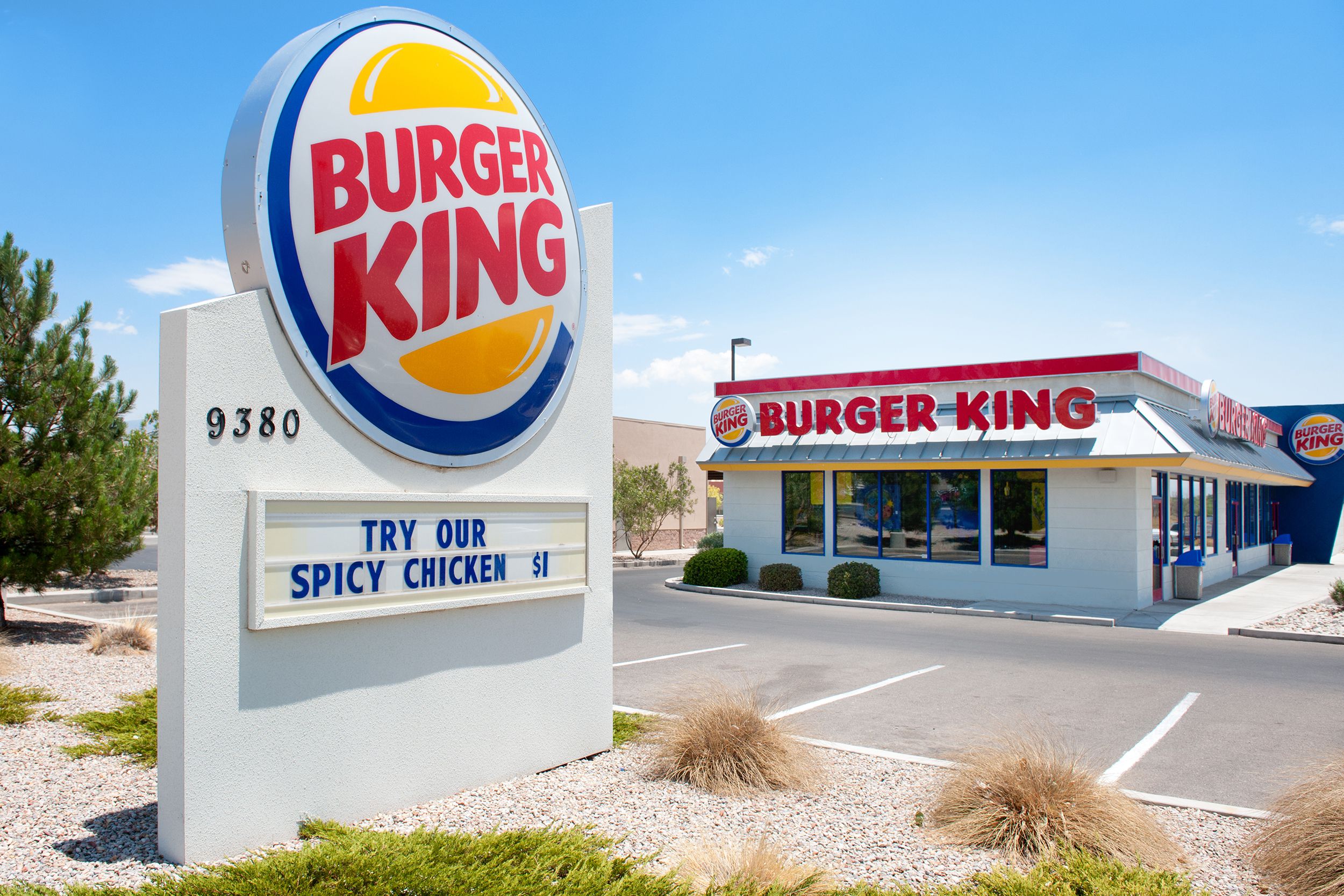
Most Burger King locations went through costly renovations when 3G capital bought the company in 2010. But it’s still looking to modernize and is adding interactive ordering and payment kiosks here and abroad. During the pandemic, BK has also put a bigger push behind delivery with the BK Mobile App, BK.com, and with Uber Eats, DoorDash, GrubHub, and Postmates.
Burger King Menu Then
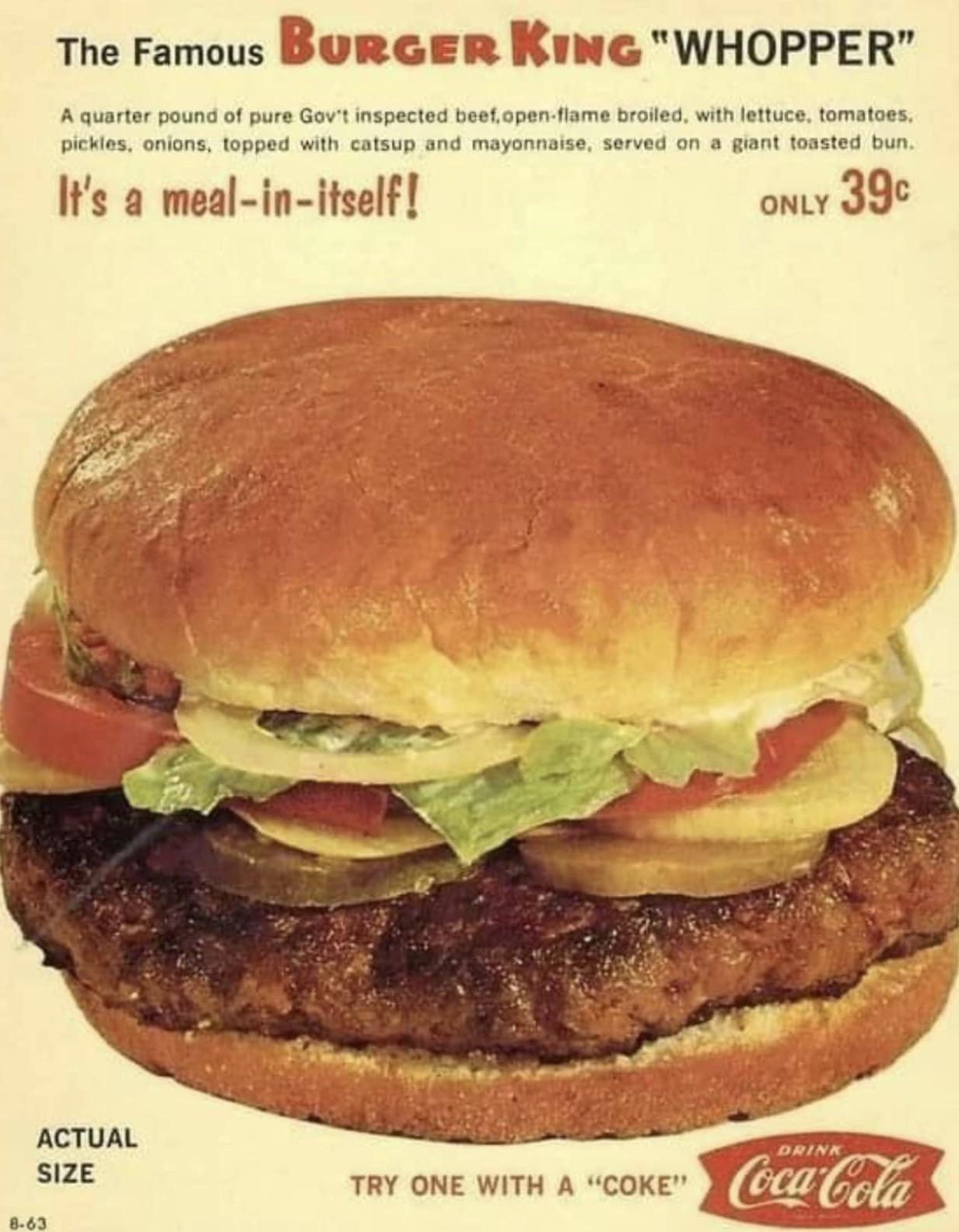
Insta-Burger King had a fairly short menu: Burgers, shakes, soft drinks and french fries — notably devoid of the Whopper, which was invented in 1957.
Burger King Menu Now
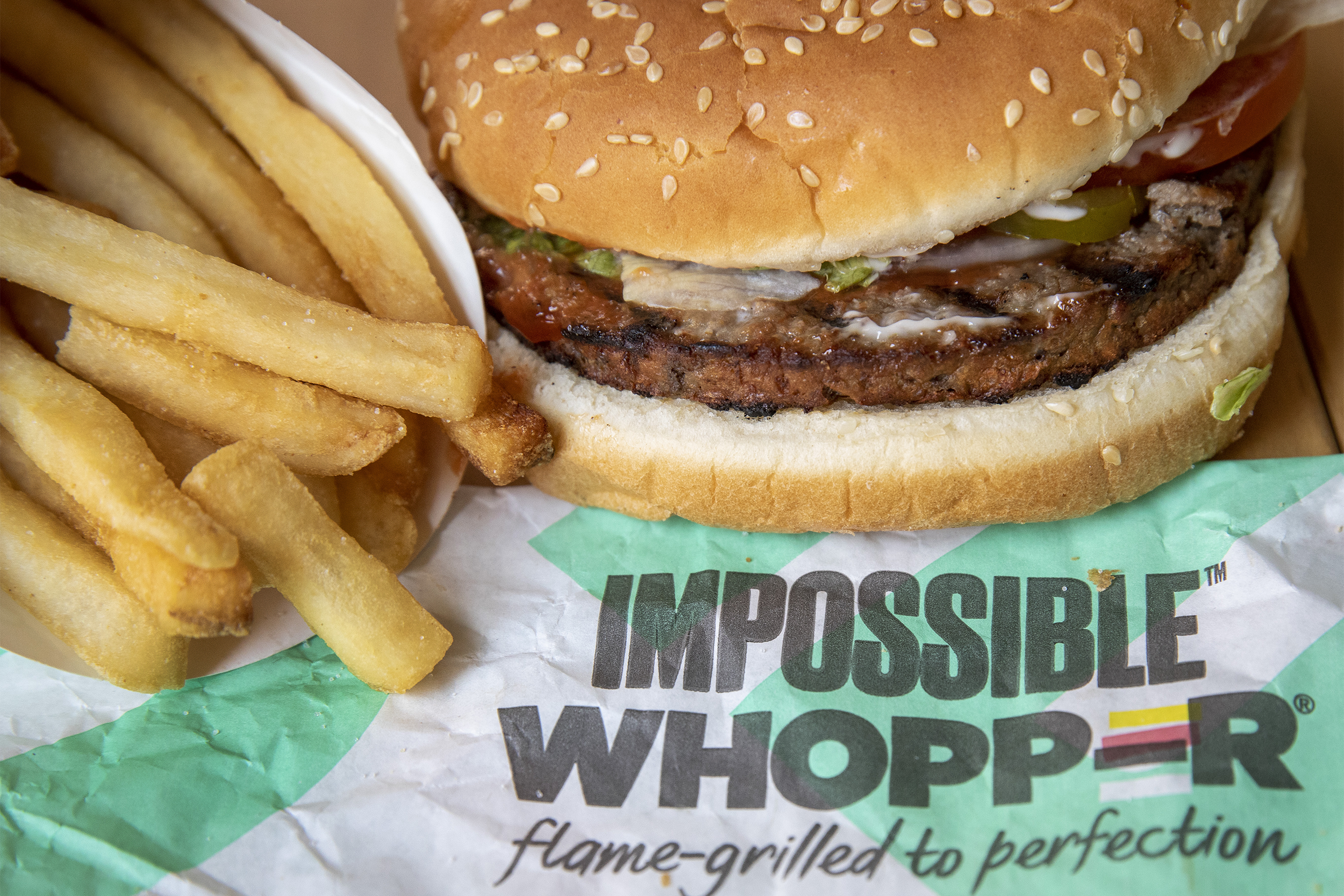
The menu now includes roughly 20 full-time burger variations, a breakfast menu around the same size, 10 fish and chicken sandwiches, chicken nuggets, chicken fries, chicken tenders, and salads. That doesn’t include new additions such as the Impossible Whopper, the Steakhouse Bacon Whopper, or jalapeño cheddar bites.
Related: Local Burger Chains the Rest of the Country Needs
Subway Then
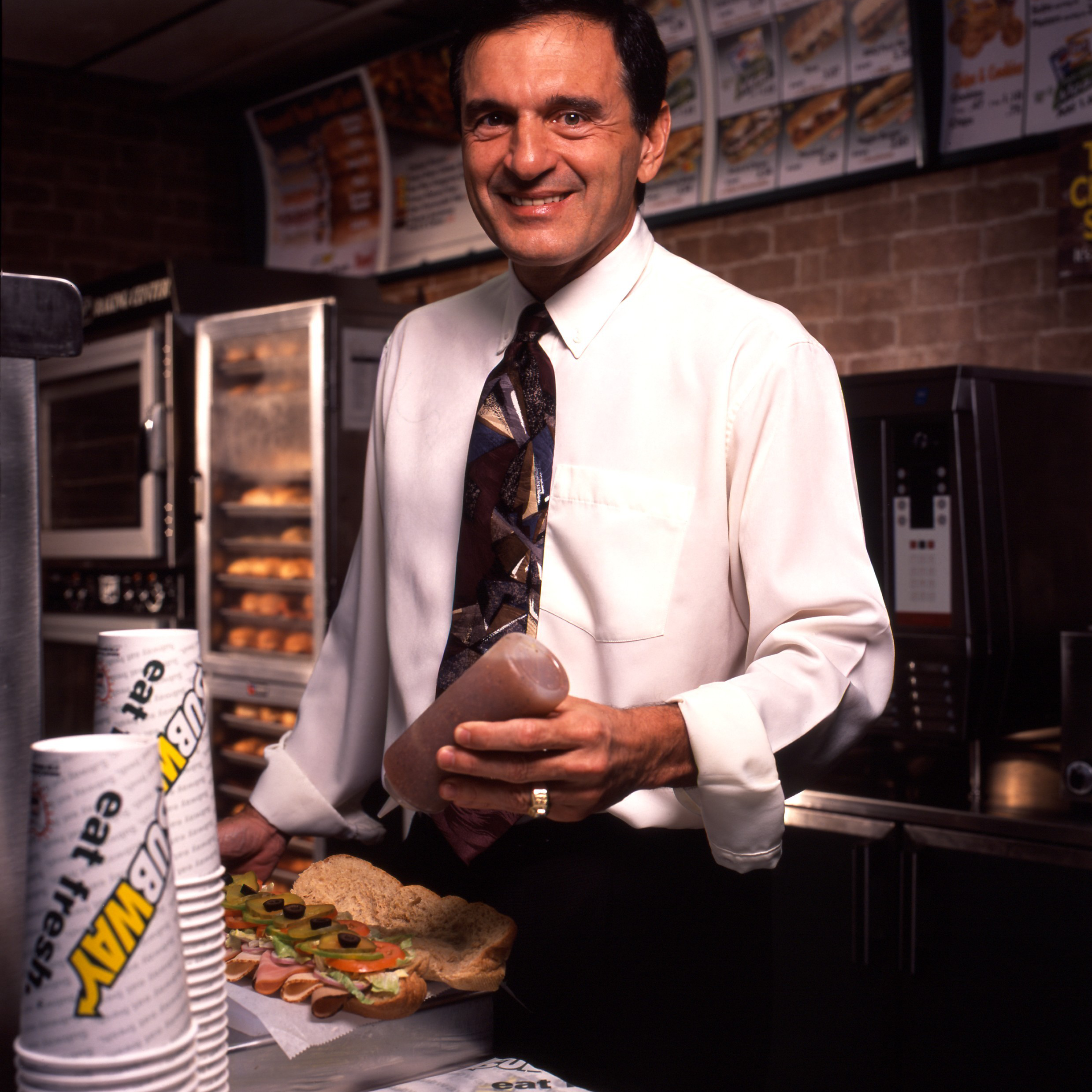
Roughly 53 years ago in Bridgeport, Connecticut, Peter Buck (not the guy from R.E.M.) lent Fred DeLuca the money to start Pete’s Subway. It was a sub shop like any other, making made-to-order sandwiches, but a little ambition pushed the chain to 16 locations by 1974, when Subway started franchising.
Subway Now
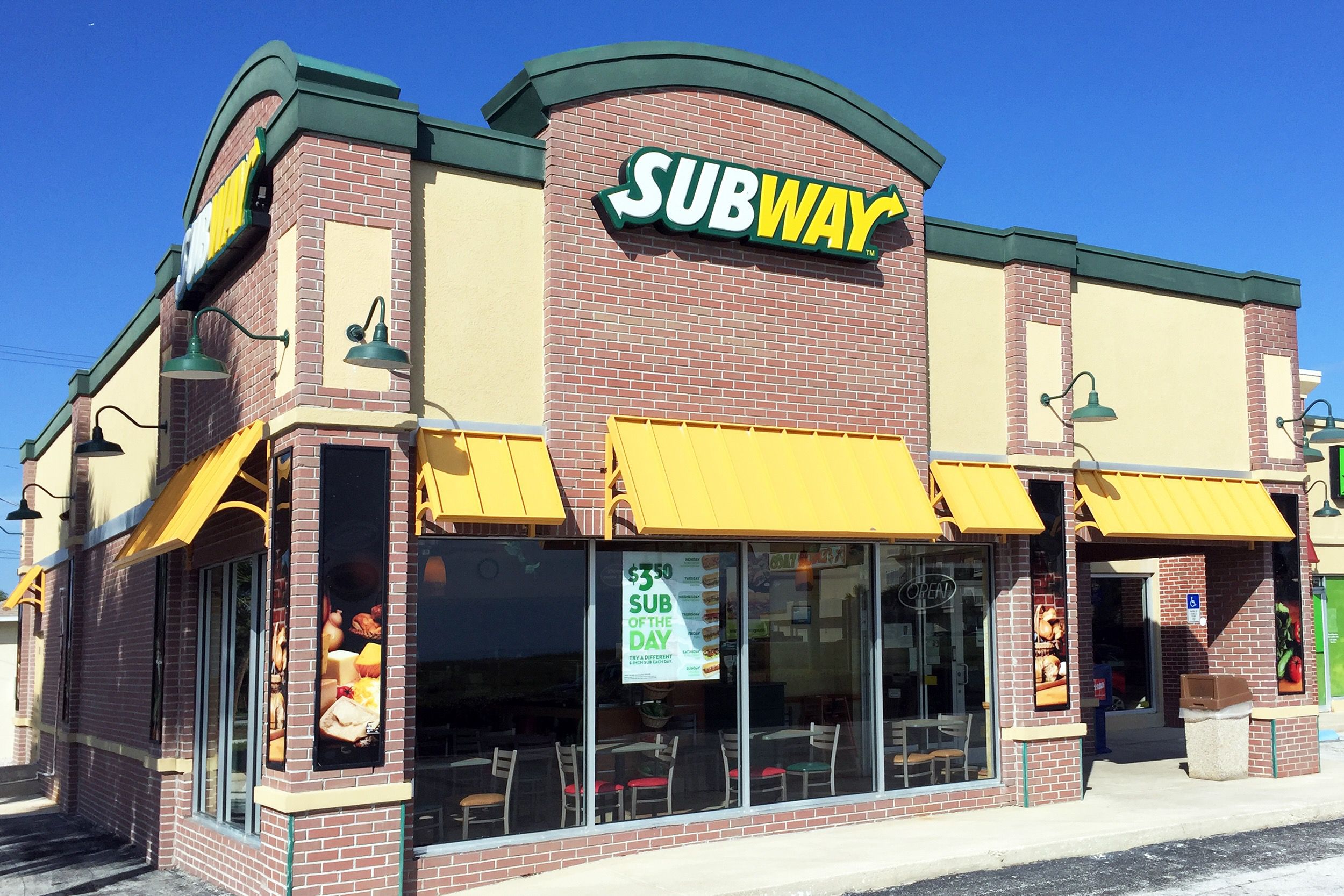
There are more than 37,000 Subway locations around the world, but times have been hard on the chain. Hundreds of stores have closed in recent years as the company looks overseas instead, and those that remain are getting their first redesign in 20 years, ditching the brick-and-subway-car pattern in favor of brighter colors, sleeker furniture, and better lighting.
Subway Menu Then
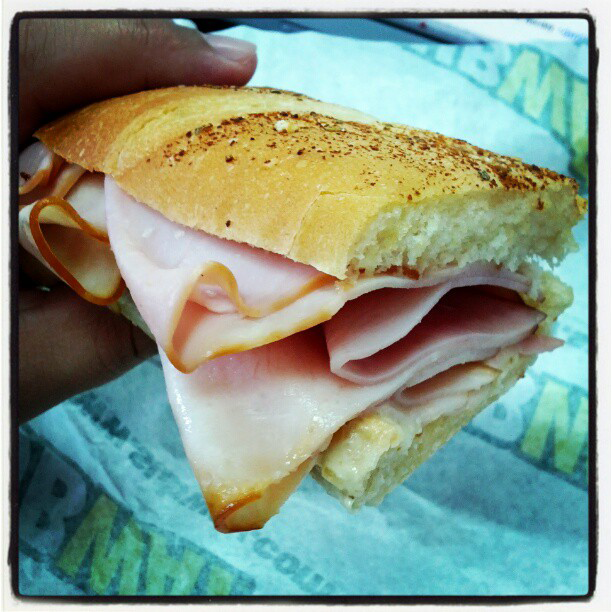
There was no Italian BMT and no meatball sub. Subway started with two salami subs, one ham sub, one cheese sub and a “mixed sub.” No sandwich on the menu cost more than 70 cents.
Subway Menu Now
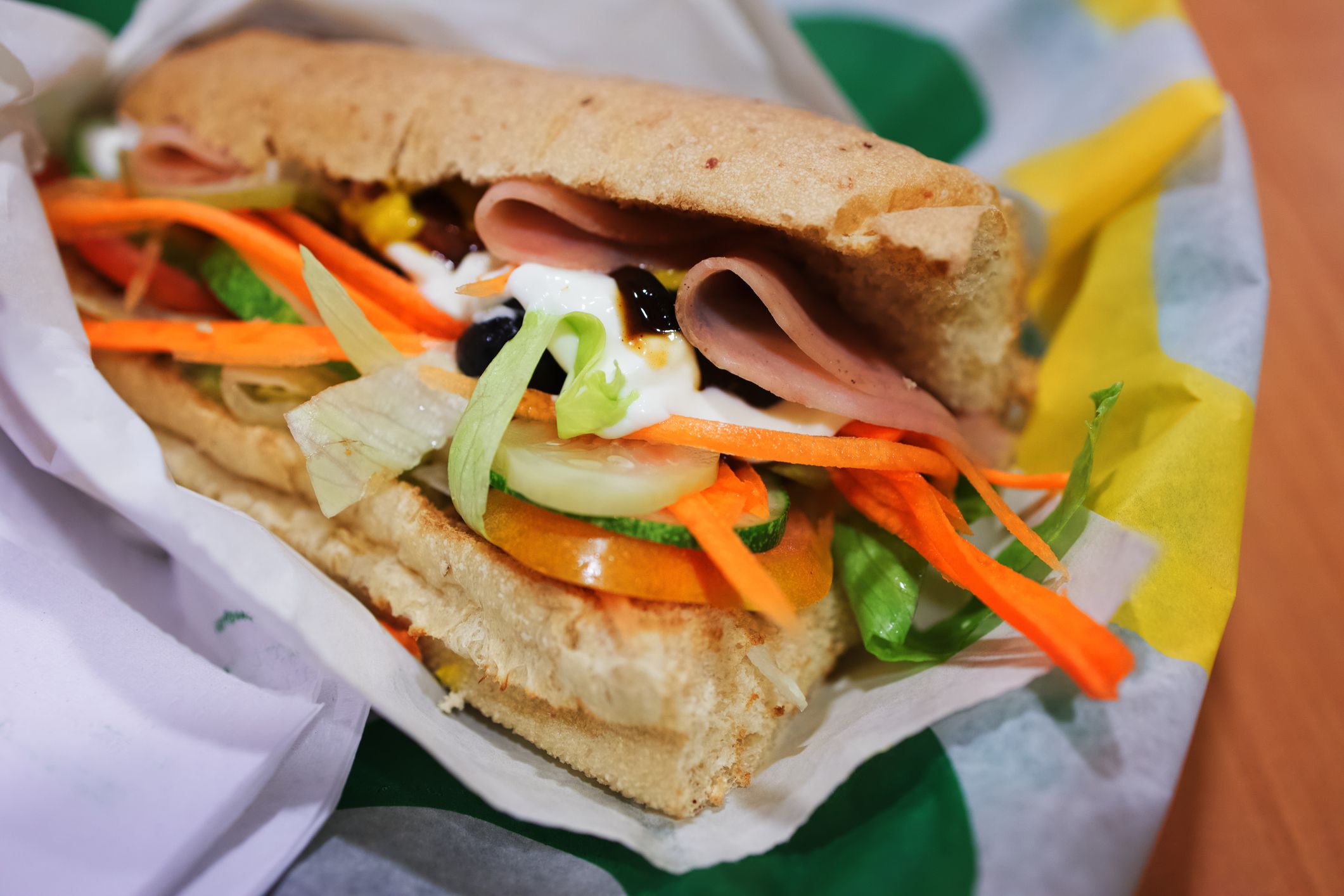
Just last year Subway introduced three new signature sandwiches — the Honey Mustard BBQ Chicken, Spicy Nacho Chicken, and Cheesy Garlic Steak — to it’s menu and has leaned into the snack category with Subway Sidekicks, which includes Foot Long churros, cookies, and pretzels. With the death of the $5 footlong, the chain banked on smaller subs, paninis and other offerings to bring in new business.
Related: 20 Historic Sandwich Shops That Changed Lunch Forever
Wendy’s Then
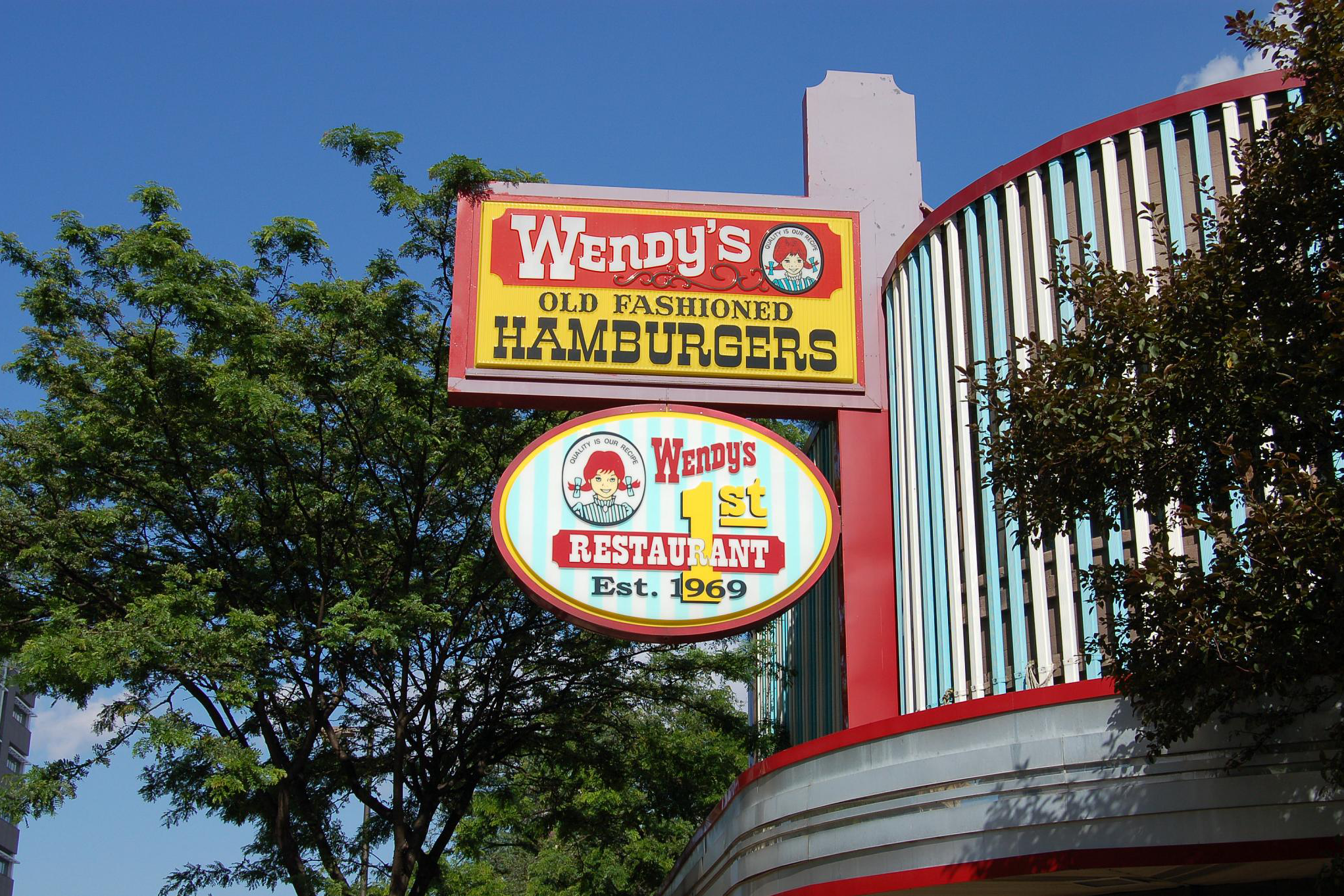
Wendy’s founder Dave Thomas worked in restaurants and with Kentucky Fried Chicken magnate Harland Sanders until he was able to open his first shop in Columbus, Ohio, in 1969. He pressed the square patties by hand, introduced chili as a menu item, and introduced the pickup window in 1971.
Wendy’s Now
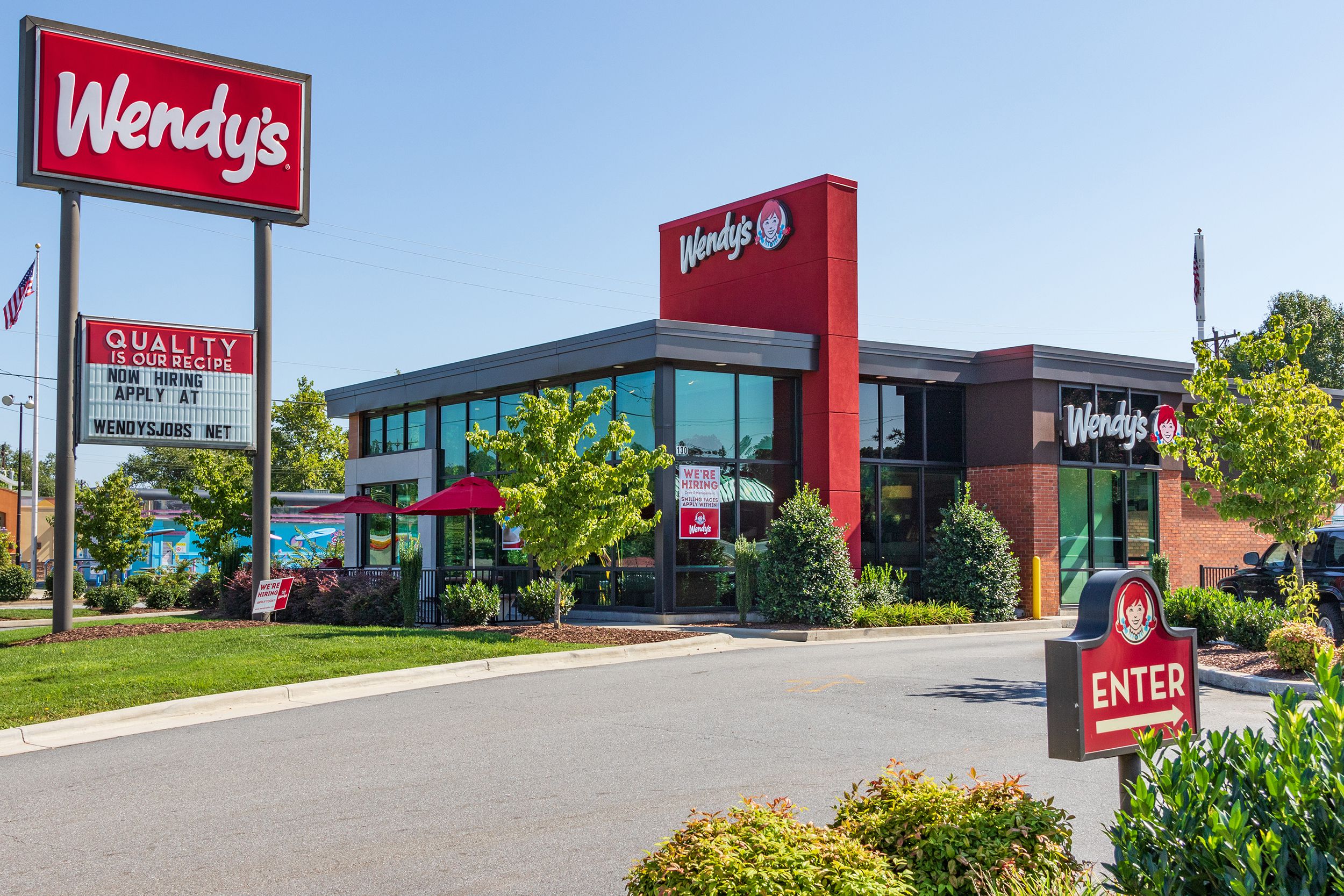
The brand underwent an overhaul in 2012, with a revised logo in 2013. There are now more than 6,500 locations, and CEO Todd Penegor sees a future in not just kiosks, but in an expedited drive-thru and mobile ordering process. Wendy’s has also developed perhaps the most notorious fast-food identity on social media, courtesy of its Twitter handle. In 2020, Wendy’s successfully added breakfast — just before the pandemic hit — but has remained true to the new menu.
Wendy’s Menu Then
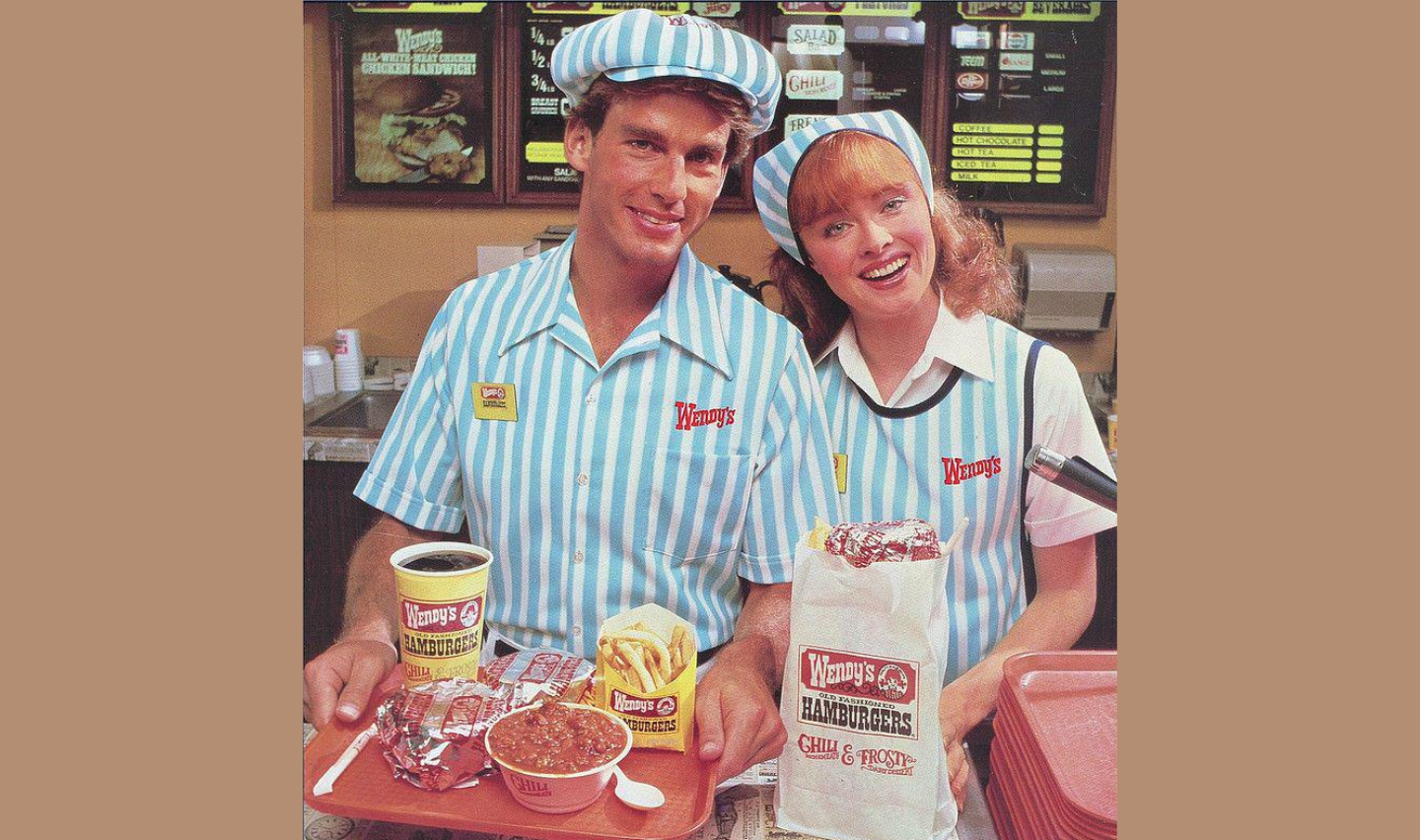
Burgers (in single, double, or triple), fries, chili, and the Frosty. Beyond beverages, Wendy’s didn’t need much more than that.
Wendy’s Menu Now
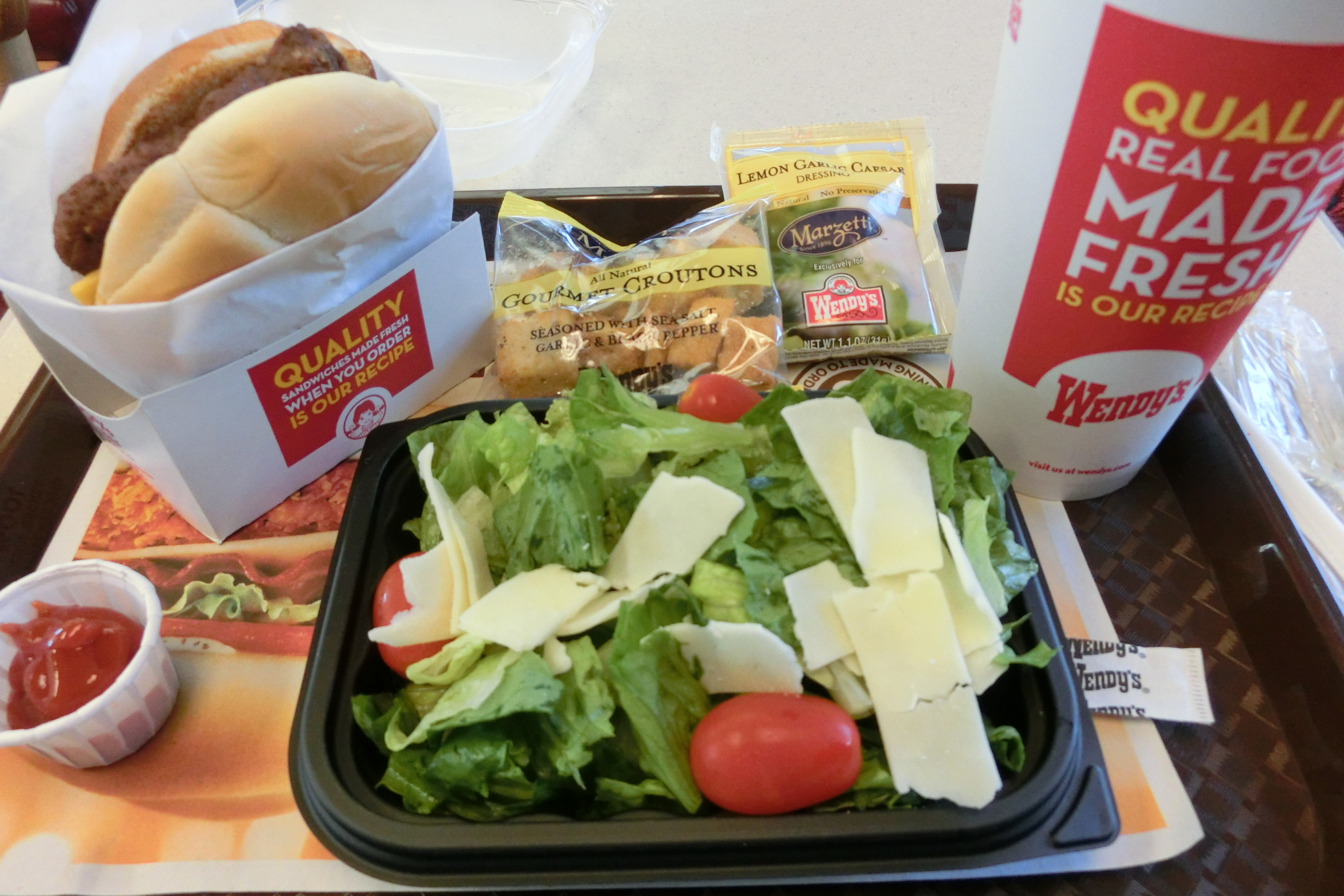
The burger, fries, chili, and Frosty have some company. Roughly 13 burgers, 16 chicken dishes, seven salads, four versions of fries, five baked potatoes, a 20-item breakfast menu and a four for $4 value menu round out the offering. A Frosty-cinno iced coffee drink (in chocolate or vanilla) is a standout addition.
Related: We Tasted All 9 Wendy’s Breakfast Sandwiches and This Is the Best
White Castle Then
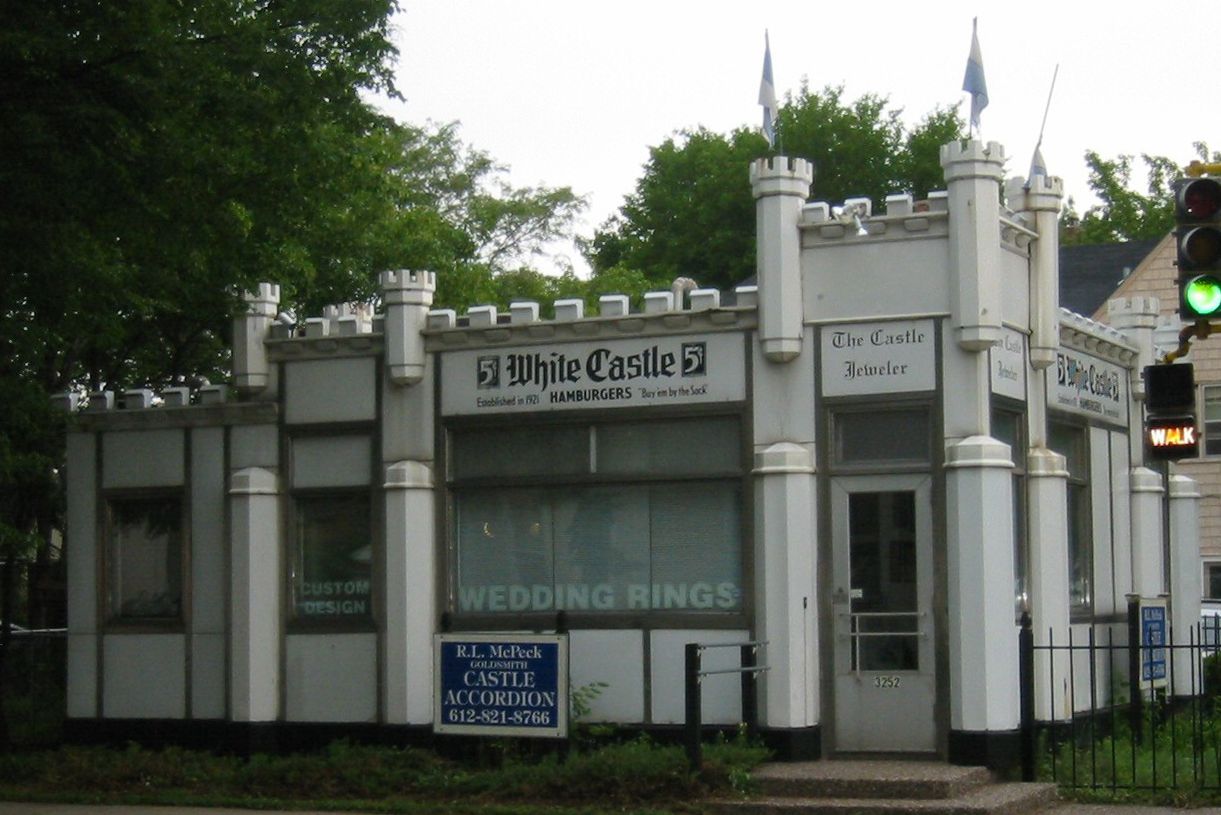
Founded in Wichita, Kansas, back in 1921, White Castle sold its thin, onion-topped sliders for 5 cents and standardized the process enough to open locations quickly and inexpensively. Combined with prefabricated White Castle buildings and a squeaky clean reputation — important when the public wasn’t all that happy about recent beef contamination — it was able to become the world’s first burger chain.
Related: 30 Things You Didn’t Know About White Castle
White Castle Now
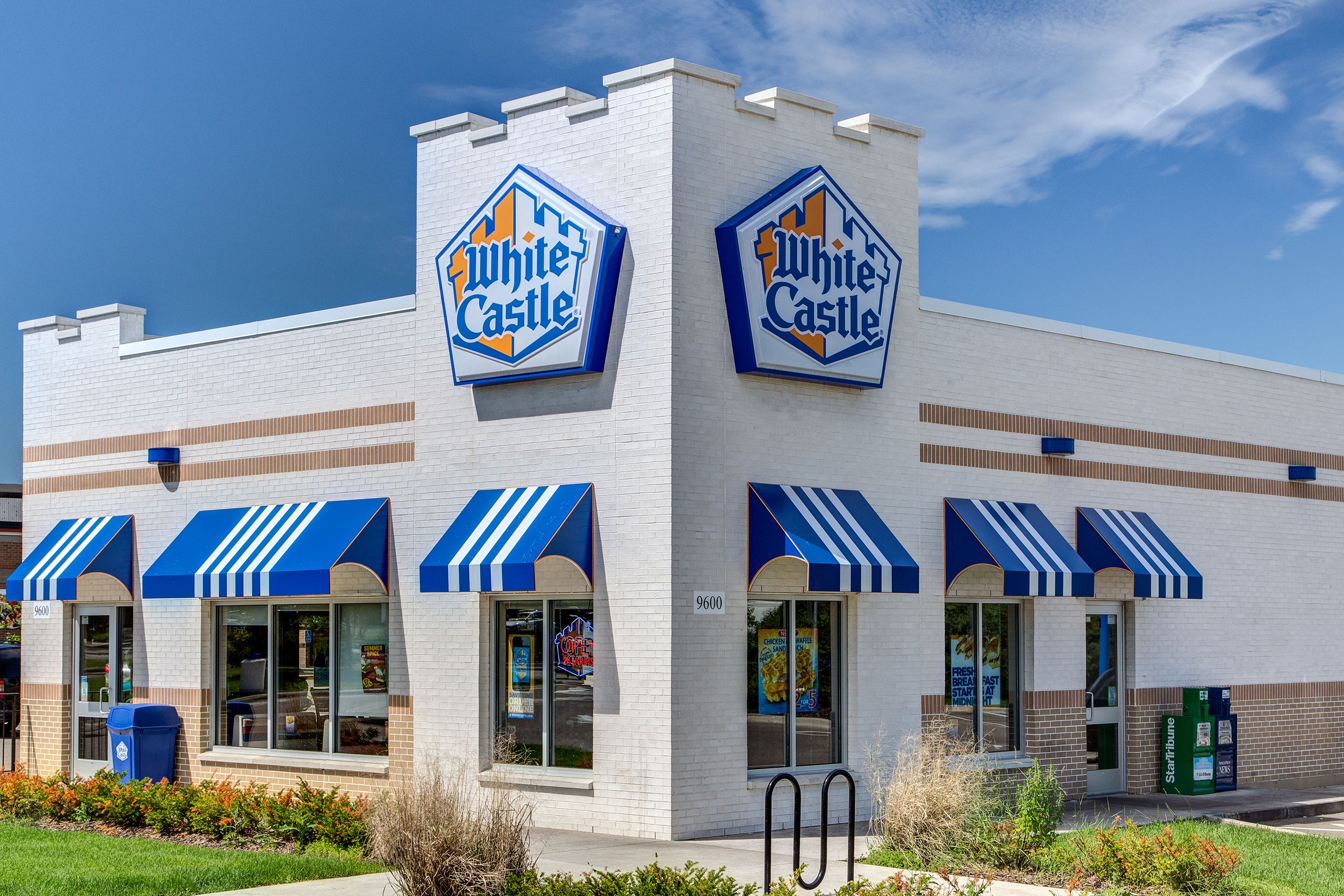
With 375 stores and an infamous on-screen visit from Harold and Kumar in 2004, White Castle has found its groove. When it opened in Las Vegas in 2015, it had long lines and had to close to restock. It offers anything on its menu at any time and has embraced touchscreen ordering and payment — as well as kitchen robots. While the sliders are still cooked by human hands, the chain’s fries have been commandeered by a robot named Flippy in certain locations. White Castle, which debuted a new and improved version of Flippy after initial tests, says the robot is meant to free up employees to do jobs that require a human touch, rather than replace humans with a bot that its inventor admits “doesn’t require benefits or days off.”
White Castle Menu Then
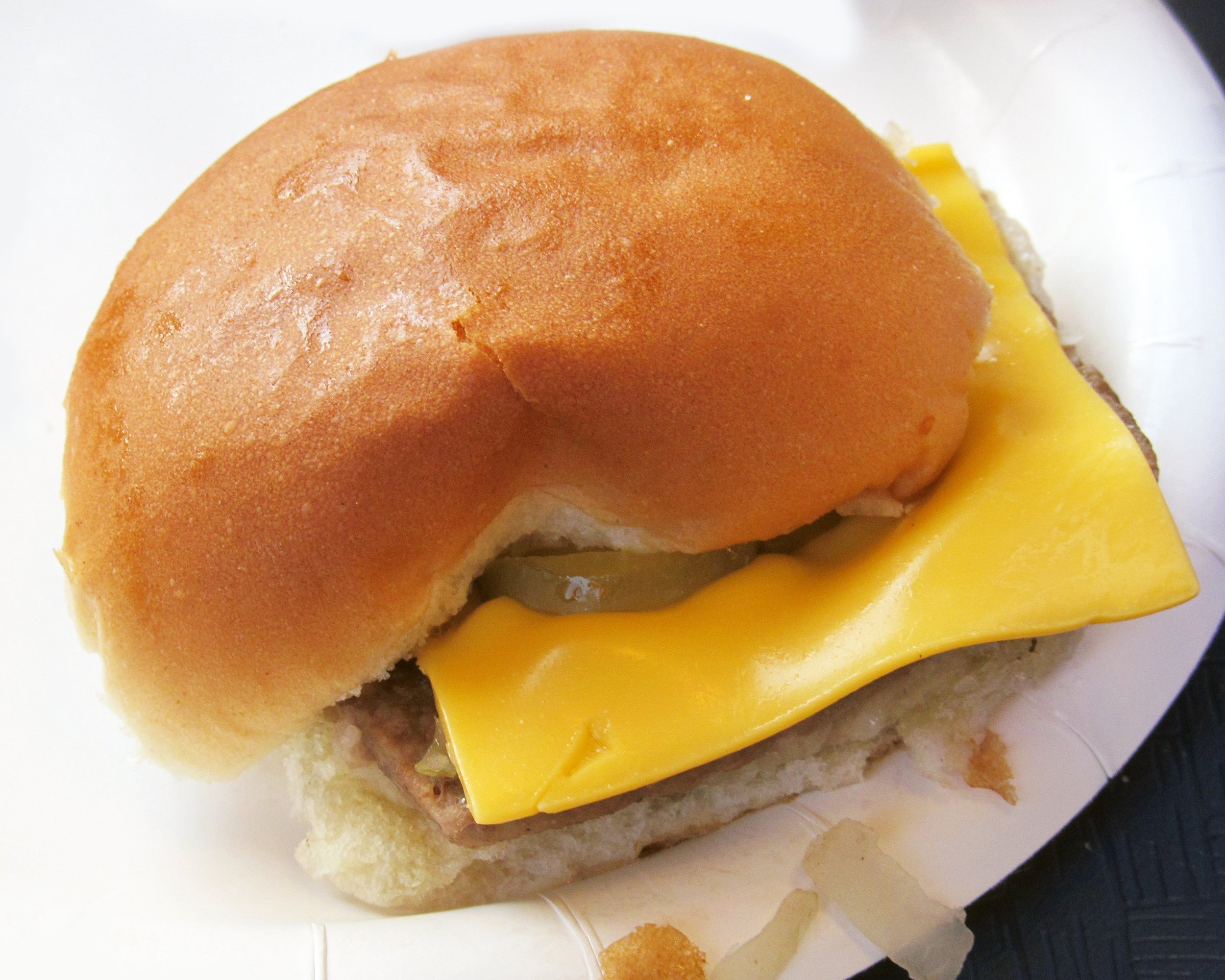
You got a hamburger, cheeseburger, fries, and a drink … a lineup that hasn’t changed that much. But coffee, sugar rolls, and cookies made up a far larger portion of the menu, as did the cost of songs on the jukebox.
White Castle Menu Now
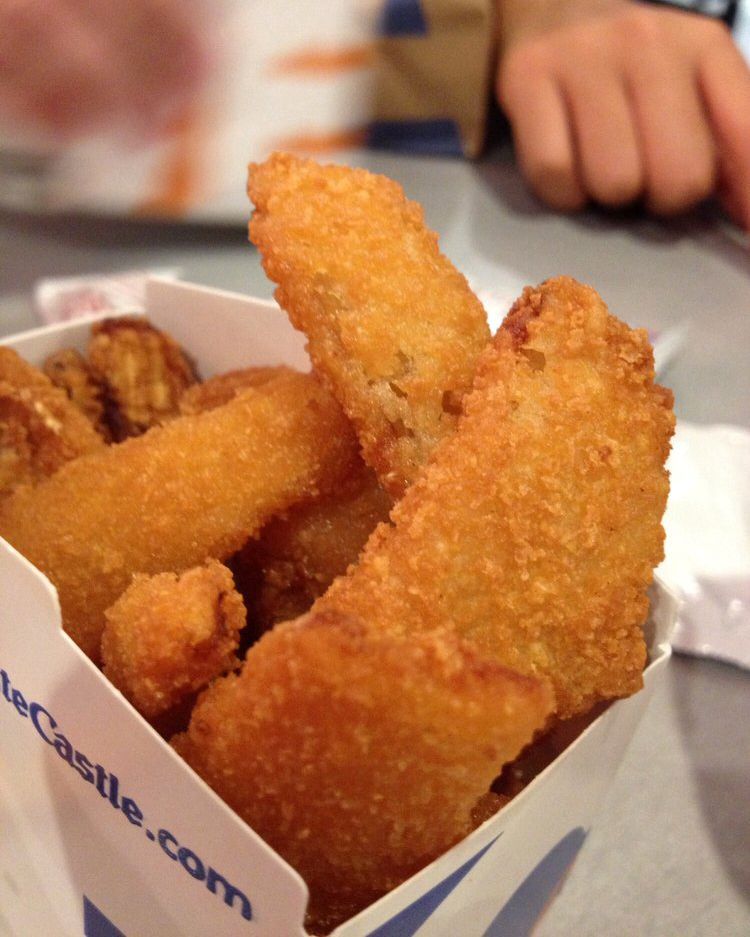
The sliders are still the cornerstone of this menu, but a full breakfast menu, multiple chicken sliders, and 30-slider Crave Cases have bulked up the offerings a bit. Meanwhile, slider-box-friendly mozzarella sticks, fish nibblers, chicken rings, onion chips, and cheesecake and brownies on sticks make White Castle heaven for a particularly hungry crowd. Perhaps unimaginable in the 1920s was its introduction of the all-veggie “impossible burger.”
Panera Bread Then
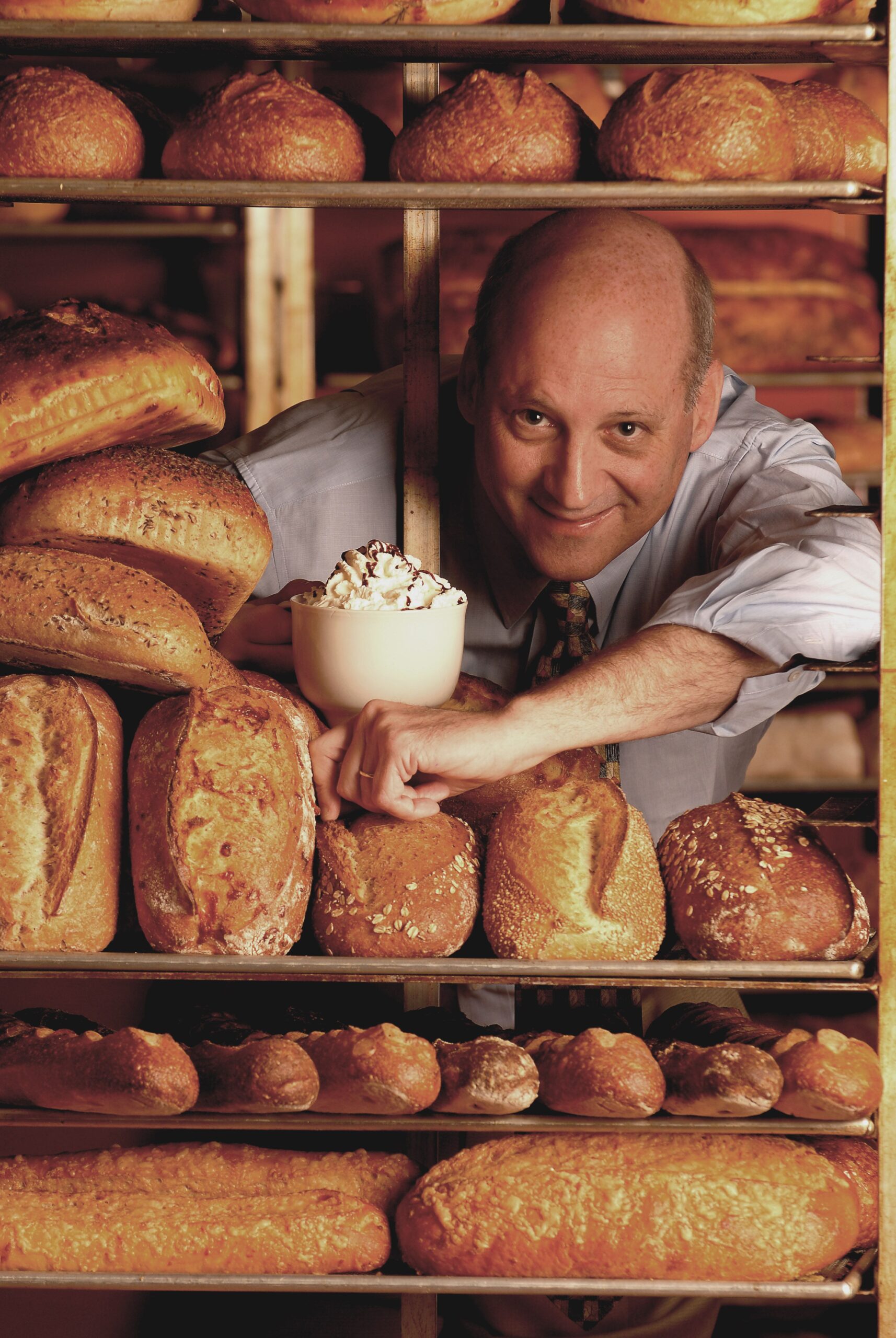
Panera Bread’s history depends on who’s talking. Former CEO Ron Shaich might say it started in the early 1980s when he founded Au Bon Pain. Saint Louis Bread founder Ken Rosenthal might say it started in 1987 when he founded Saint Louis Bread Co. But it’s more likely in the years between when Au Bon Pain bought Saint Louis Bread in 1993 and changed its name to Panera in 1997.
Panera Bread Now
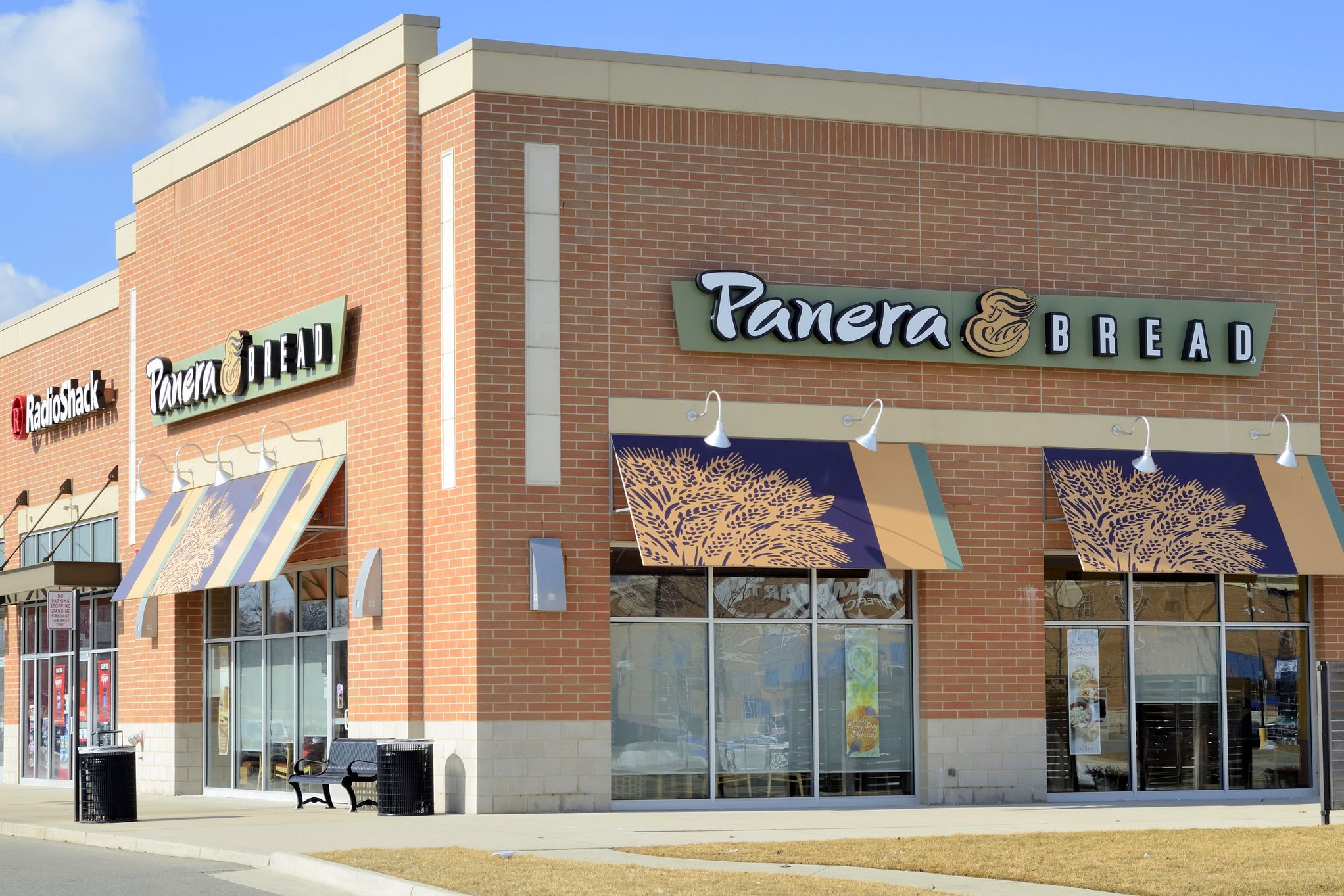
There are more than 2,000 Panera locations, and Panera now steers the company that Au Bon Pain once dominated. Its technology-driven “Panera 2.0” campaign, launched in 2014, introduced mobile apps, table ordering, and ordering kiosks while cutting artificial ingredients and preservatives. Once known for its bread bowls and cozy cafes, Panera now gets many of its orders through digital and rewards programs and has a focus on delivery and fast pickup.
Panera Bread Menu Then
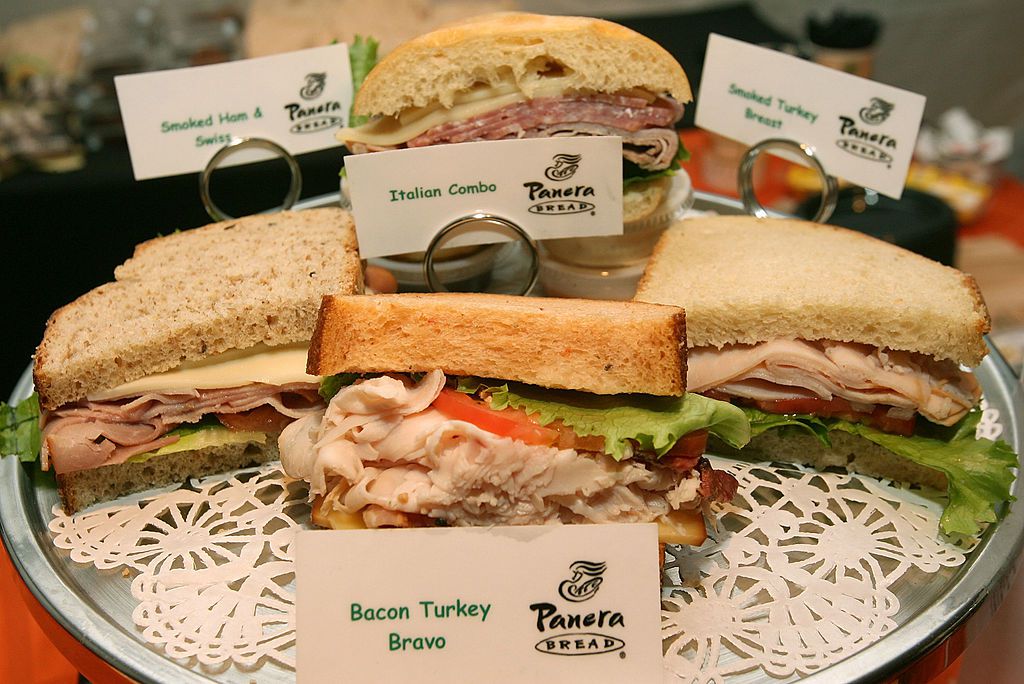
Nope, no bread bowls. St. Louis Bread had 19 locations in the St. Louis metro area before Au Bon Pain acquired it. The fast-casual chain’s menu was simple, mostly salads and sandwiches made with freshly baked artisan bread.
Panera Bread Menu Now
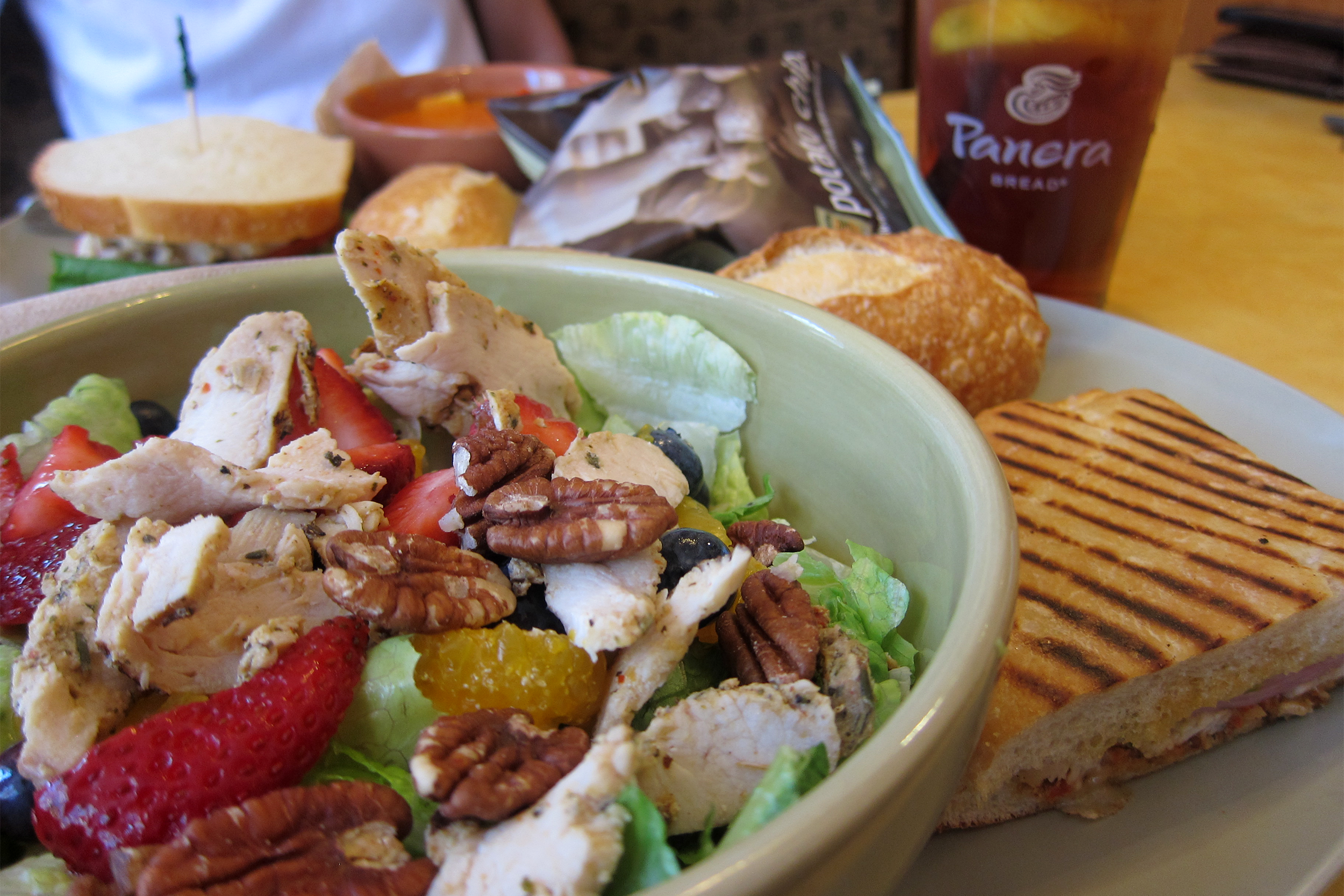
While it’s still working on convincing diners bread is healthy, Panera keeps its menu broad with oatmeal, salads, soups, grilled chicken, and other leaner offerings as well as sandwiches, bread bowls, macaroni and cheese, bakery treats, and heartier comfort fare.
KFC Then
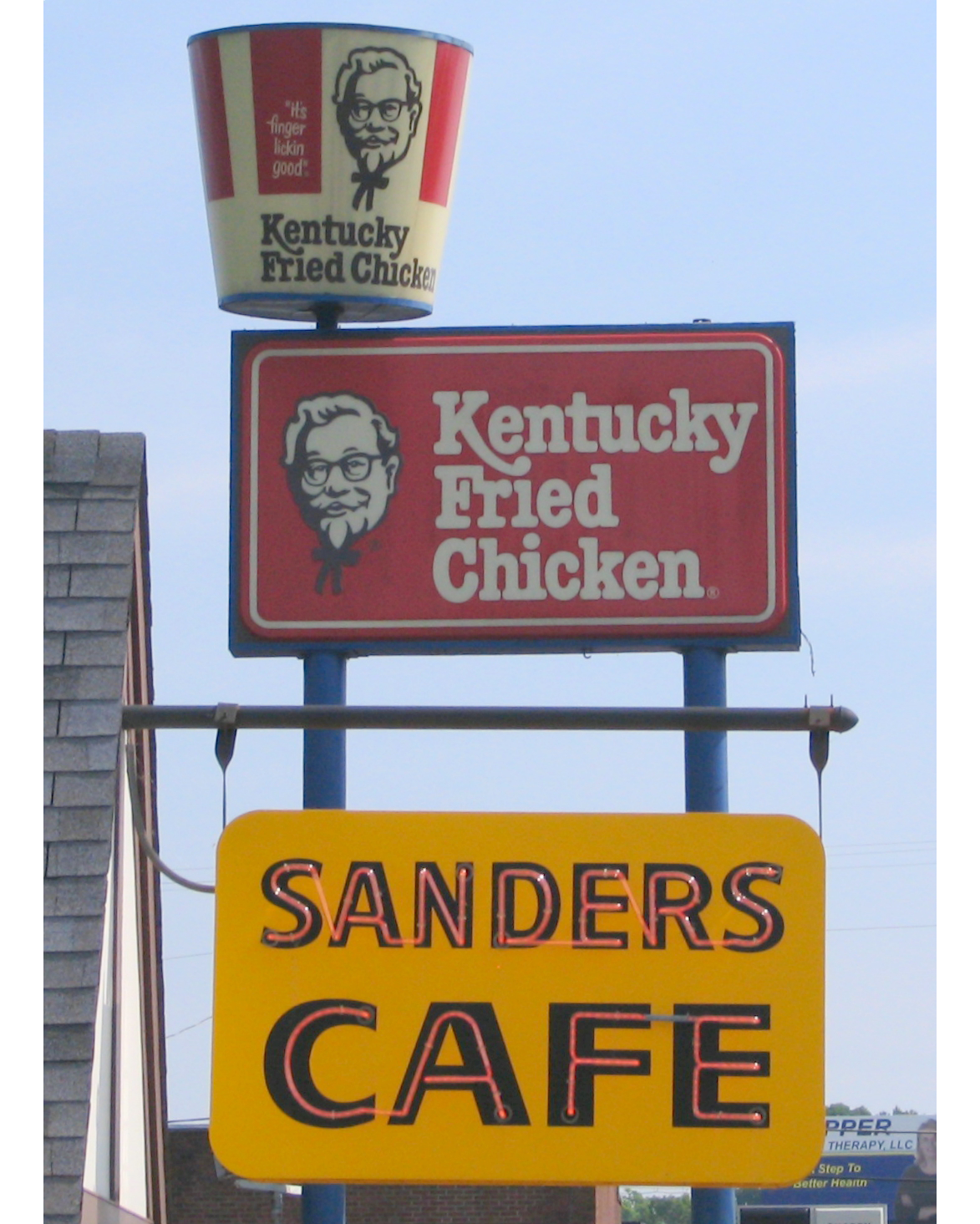
Kentucky Fried Chicken didn’t start in Kentucky. Sure, Harland Sanders had a restaurant there, but if he hadn’t met Leon “Pete” Harman in Salt Lake City and convinced him to serve his fried chicken and its 11 herbs and spices, there would be no KFC. That’s right, the first Kentucky Fried Chicken — and its museum — is in Salt Lake City.
KFC Now
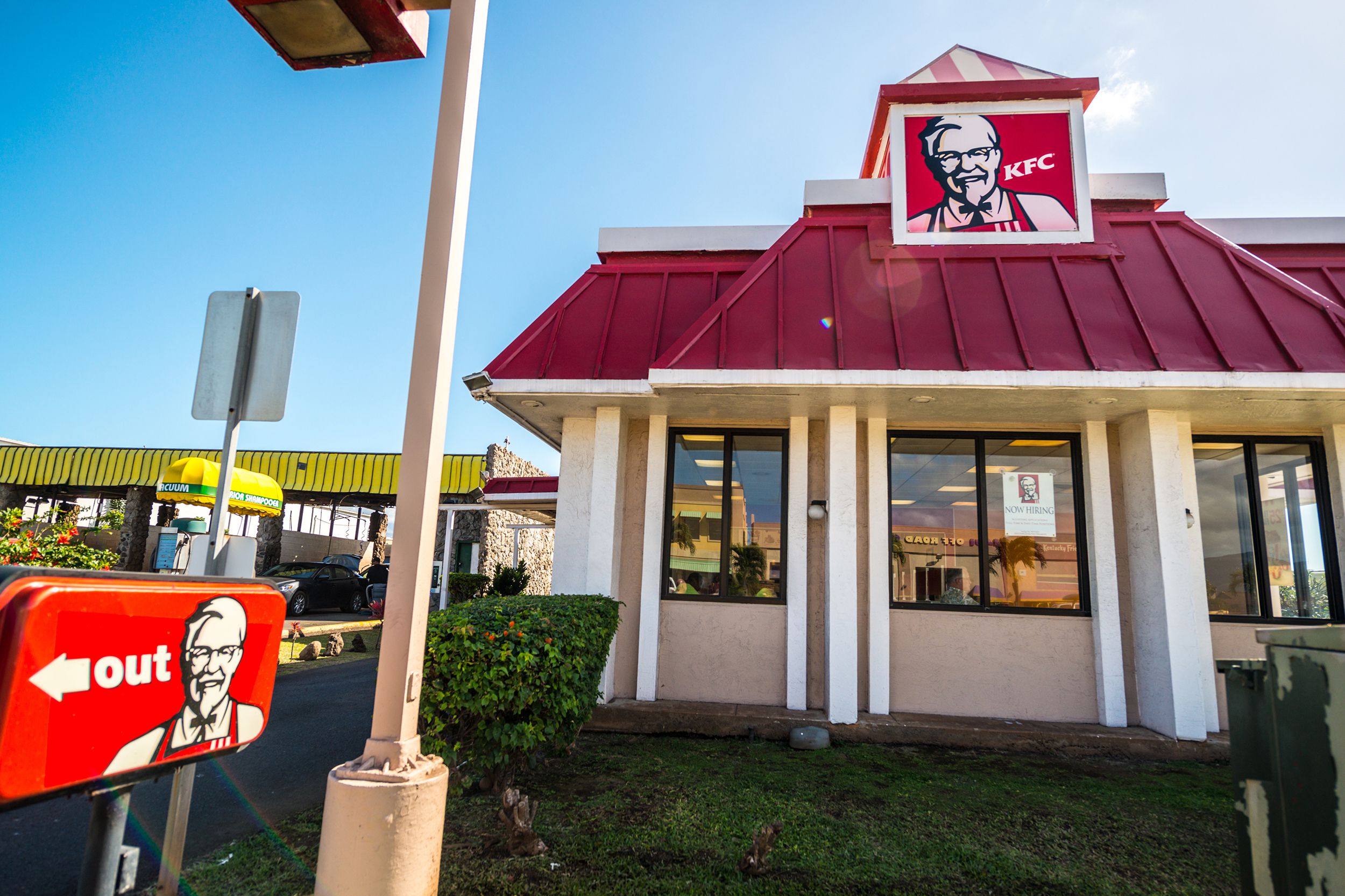
KFC has more than 20,000-plus locations worldwide and is absolutely enormous in China. It has extreme differences around the globe — from menu items to marketing approaches — though the basic recipe remains the same. In 2016, KFC began extensive remodeling on its U.S. locations — and while Colonel Sanders was persona non grata here for many years, he’s now the oft-seen face of the spruced-up franchise. Perhaps people will be more impressed with the chain’s efforts to feed the hungry, committing to giving 1.2 million pounds of food banks in 2020.
Related: The Best Fast Food Deals to Grab This Month
KFC Menu Then
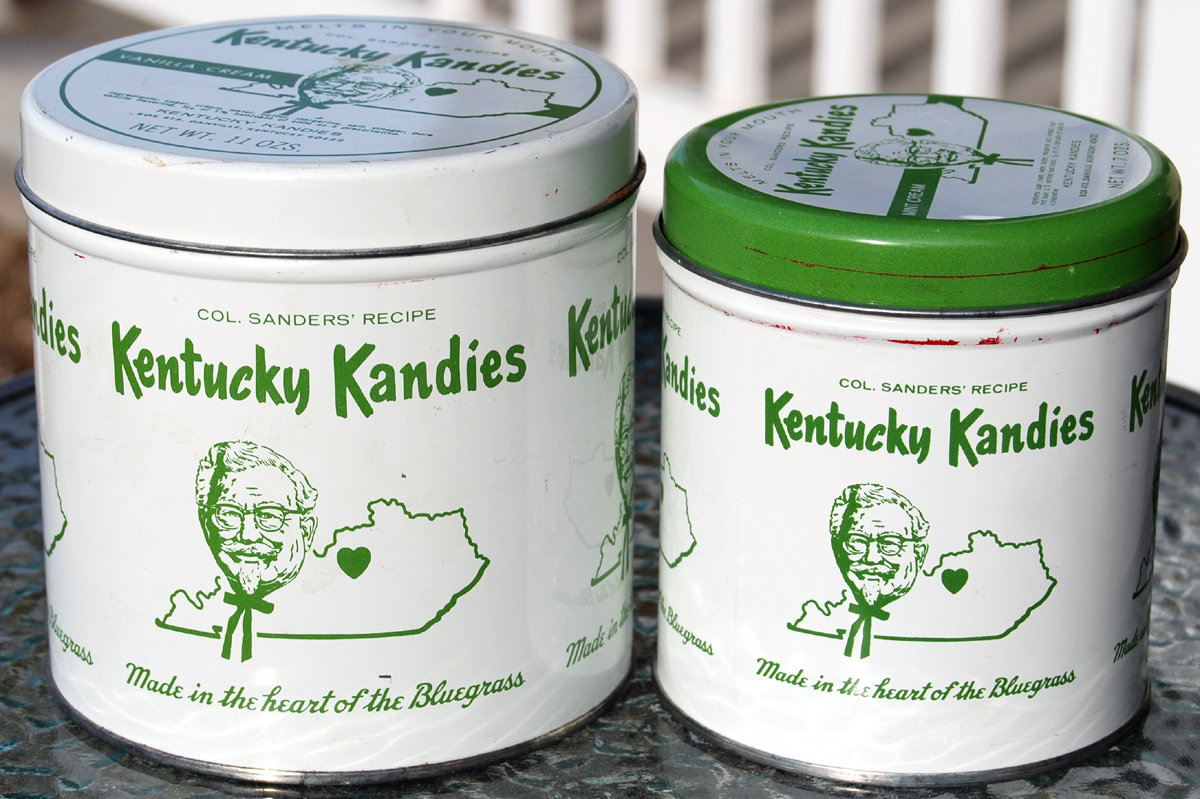
Colonel Sanders’ fried chicken was the pride of the earliest menus, but there were livers and gizzards, too. Potatoes, slaw, macaroni salad and gravy served as sides, but rolls predated biscuits. Also, there was a whole lot of shrimp.
KFC Menu Now
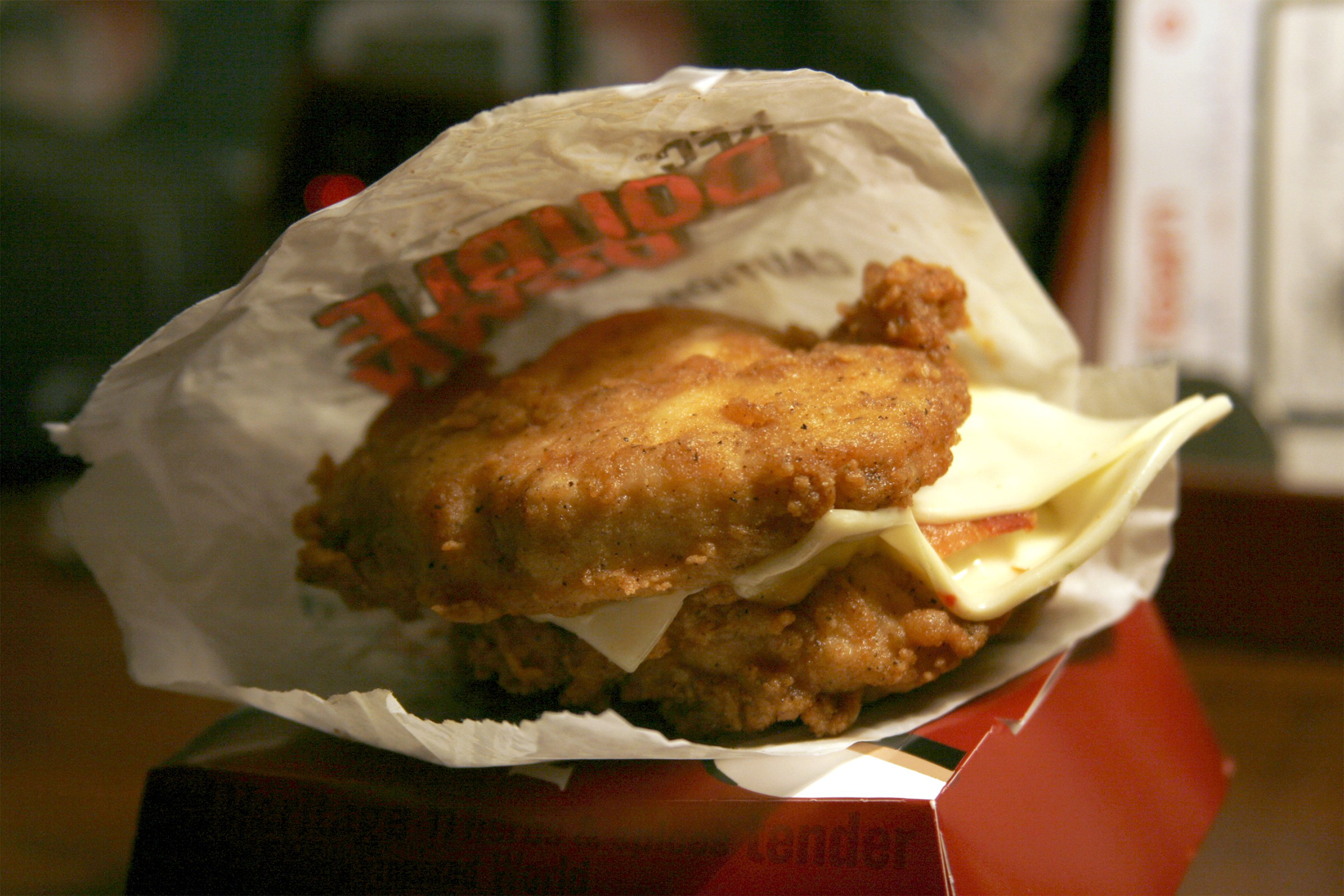
The basics are still there: Buckets of original-recipe and extra-crispy chicken. But the addition of Nashville Hot Chicken, Hot Honey Chicken, Smoky Mountain BBQ, biscuits, wedges, sandwiches, nuggets, and tenders has made KFC more portable and, with delivery options, a lot more accessible. In the U.S. KFC has been making changes, too. In 2019, KFC tested out a Beyond Fried Chicken, or plant-based, product — and sold out in five hours at the Atlanta location selling it. It was sold until February of 2020 in Nashville and Charlotte, North Carolina, and was on the national menu for a limited time in 2022, but isn’t currently on the menu.
Related: I Ate the World’s Best Kentucky Fried Chicken at KFC Headquarters
Hardee’s Then
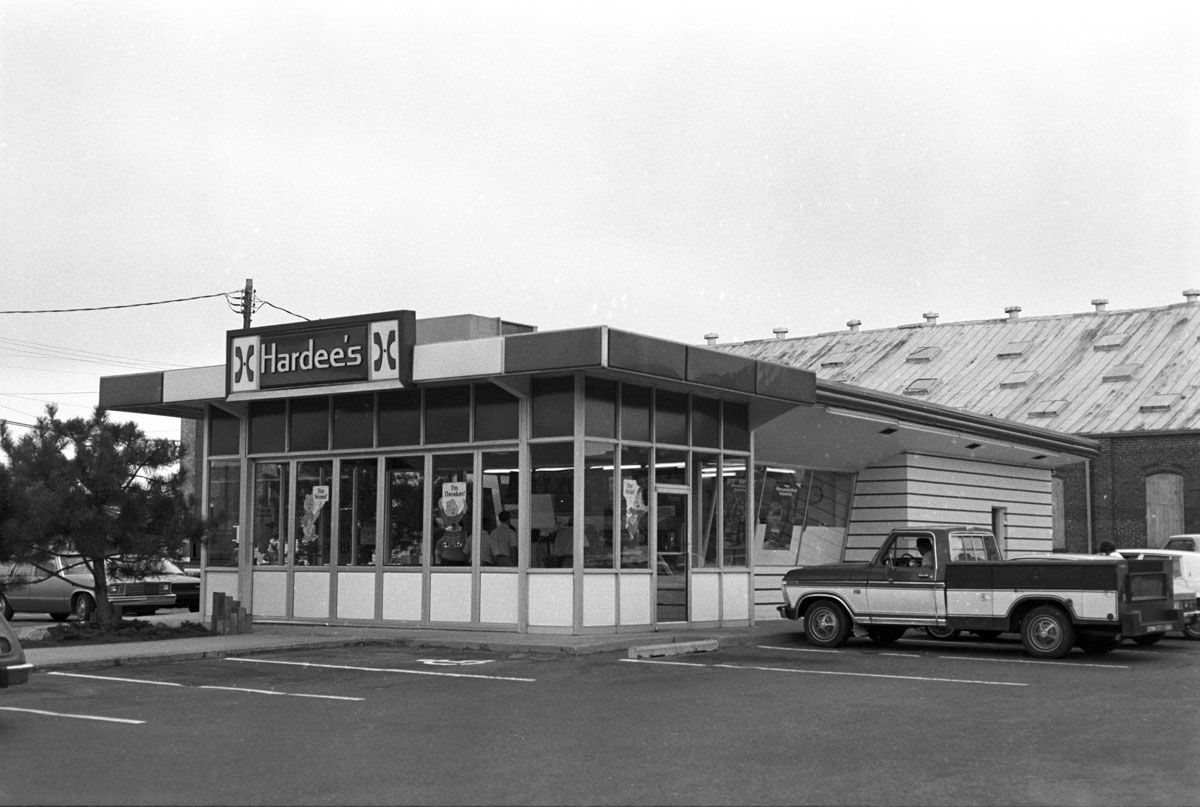
Wilber Hardee first opened shop in Greenville, North Carolina, in 1960. Though there would be 200 Hardee’s by the end of the 1960s, and people would come to love it for its biscuits, don’t credit the founder, who lost his controlling shares in a game of poker. His partners were responsible for much of the expansion.
Hardee’s Now
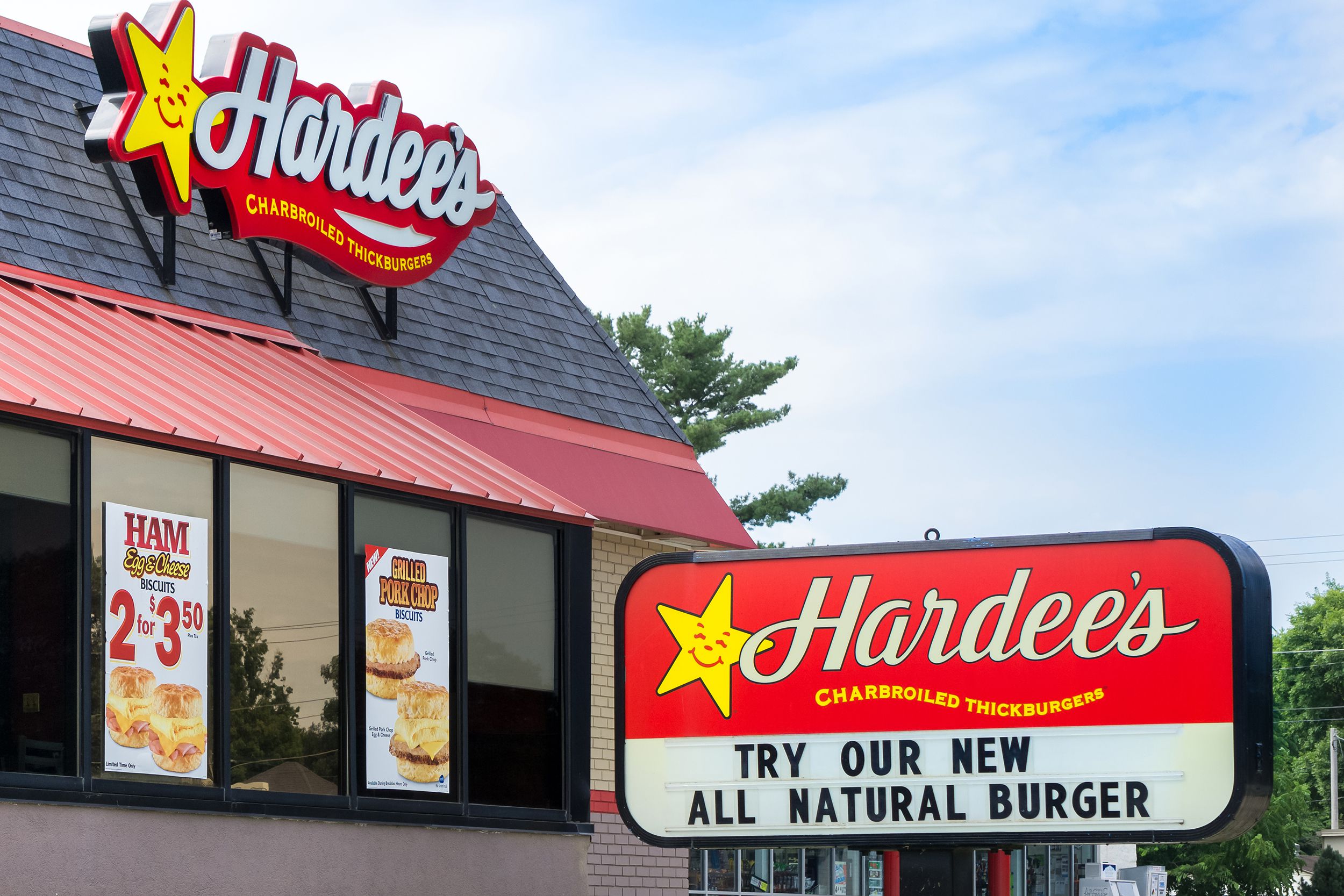
Even some of Hardee’s loyal fans don’t recognize the place now. In 2003, Hardee’s pared down its menu and focused on the three sizes of Thickburger. Hardee’s also went through a major rebrand that saw parent company CKE attempt to distance it from stablemate Carl’s Jr. by giving it a more down-home design.
Related: Fast Food Deals to Feed the Whole Family
Hardee’s Menu Then
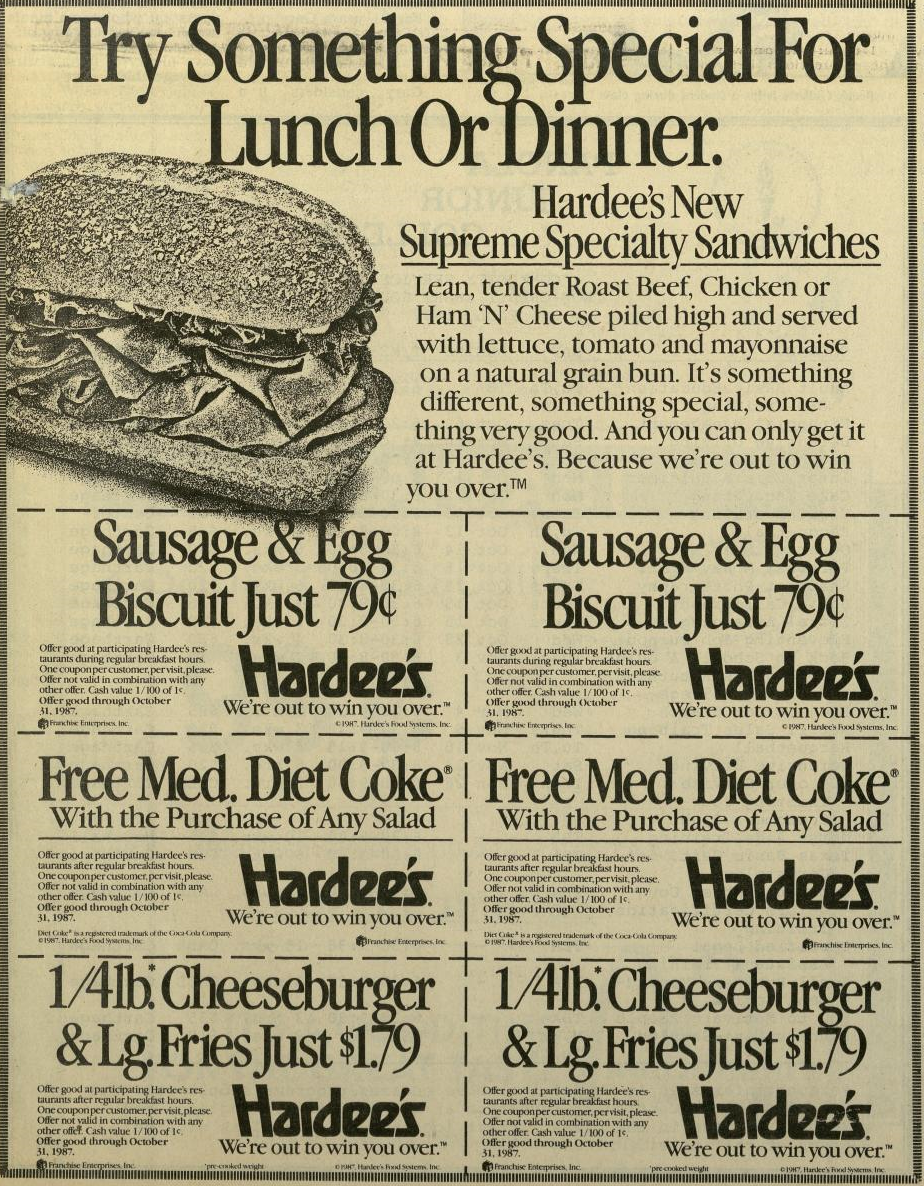
No Thickburgers — but hamburgers, cheeseburgers, fries, and shakes were early favorites. You could also stop in for a cup of coffee and an apple turnover.
Hardee’s Menu Now
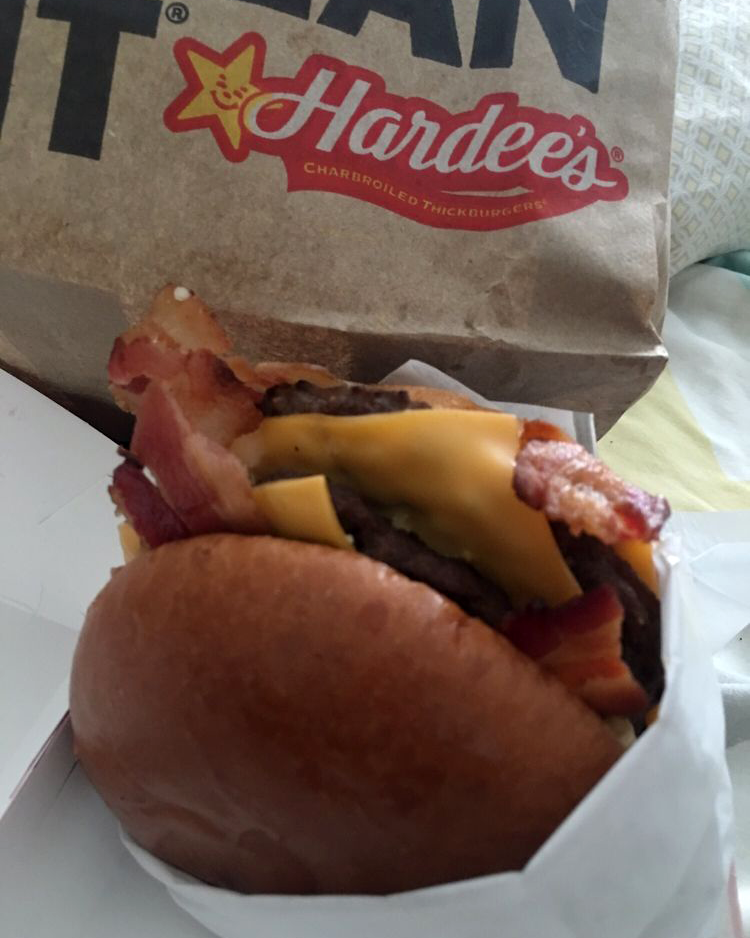
An eight-burger menu revolves around the Thickburger, while chicken tenders, hot ham and cheese, chicken sandwiches, chili dogs, giant meal boxes, and “Red Burrito” options (tacos, burritos, etc.) round out the offerings.
Carl’s Jr. Then
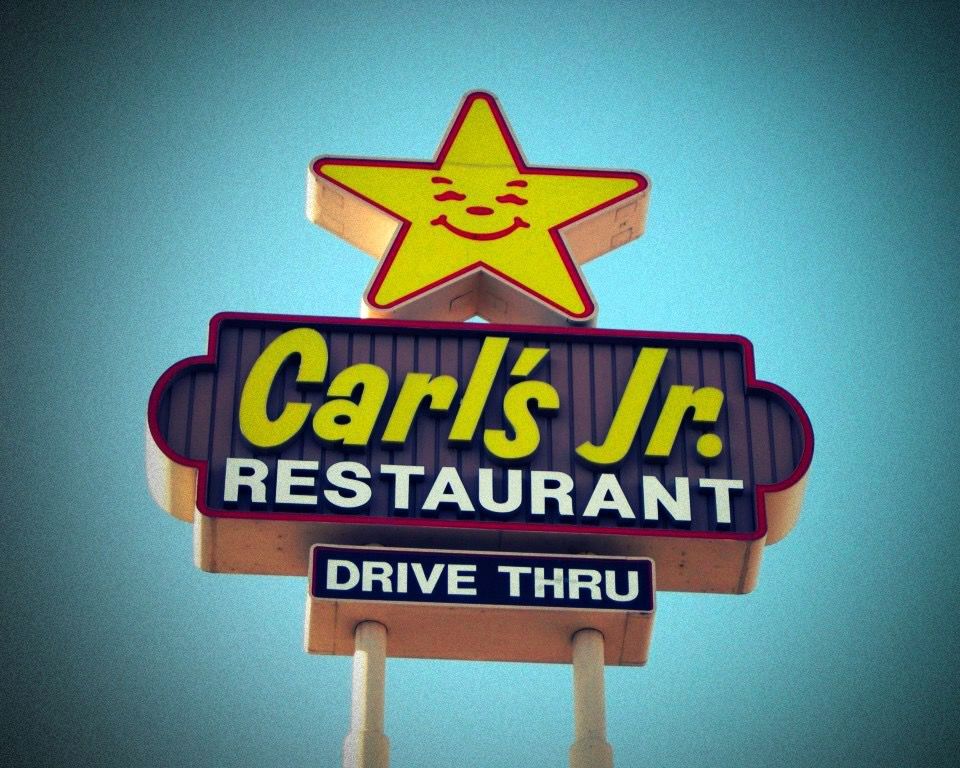
Carl Karcher opened his first hot dog cart in Los Angeles in 1941, before expanding to four carts and then, later, a drive-in barbecue joint. Carl’s Jr. followed in nearby Anaheim and Brea in 1956. The chain would dabble in salad bars, table service, Mexican food, and salacious commercials before finding an identity.
Carl’s Jr. Now
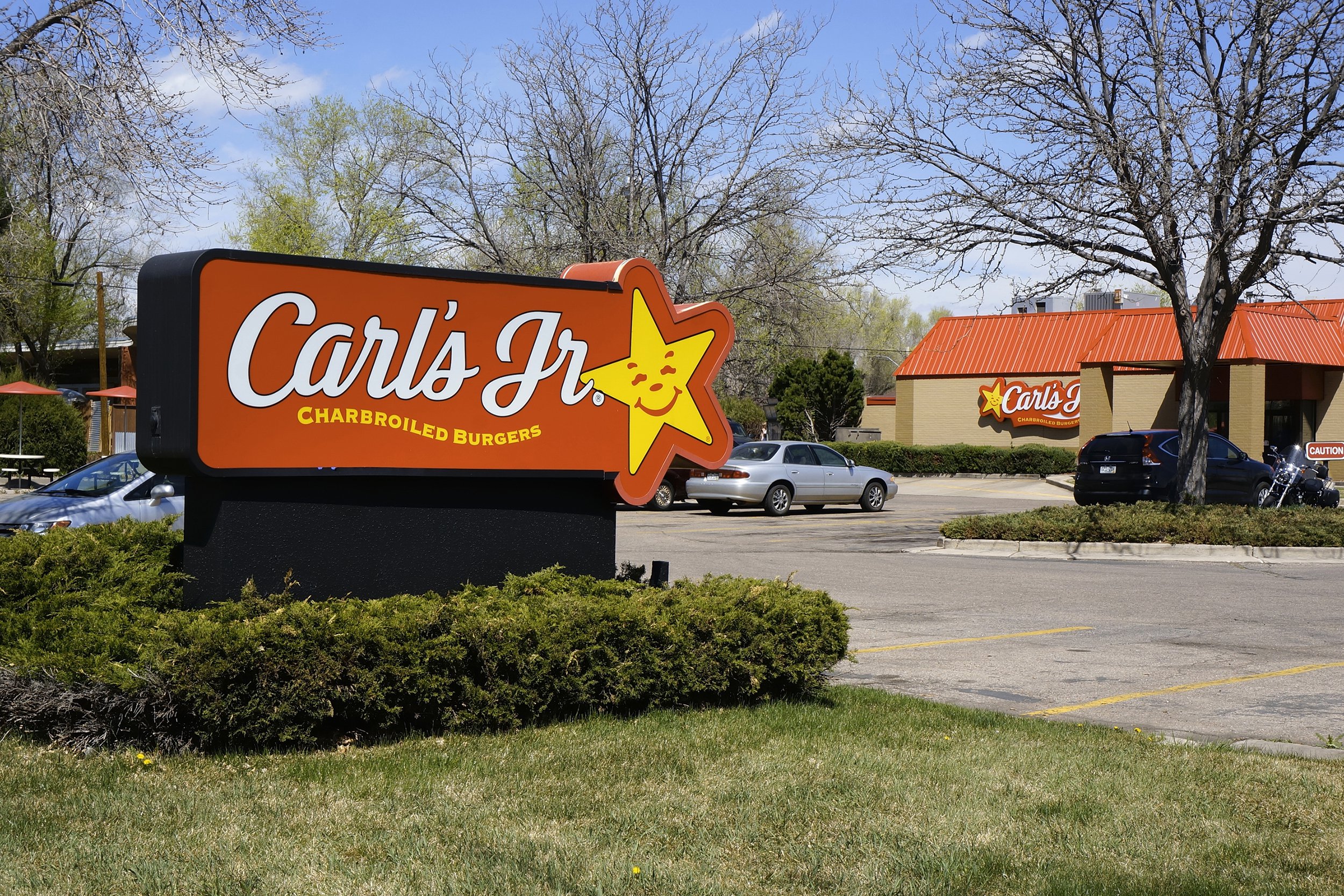
The Six Dollar Burger debuted in 2001 and set Carl’s Jr. off on a path of rapid expansion and scantily clad models. Parent company CKE has split it off from its more demure counterpart, Hardee’s, while plans for Northeast expansion hit a tough start with the quick closing of its Manhattan location. Carl’s Jr. has ordered up revamps of its logo and dramatic renovations to its locations.
Carl’s Jr. Menu Then
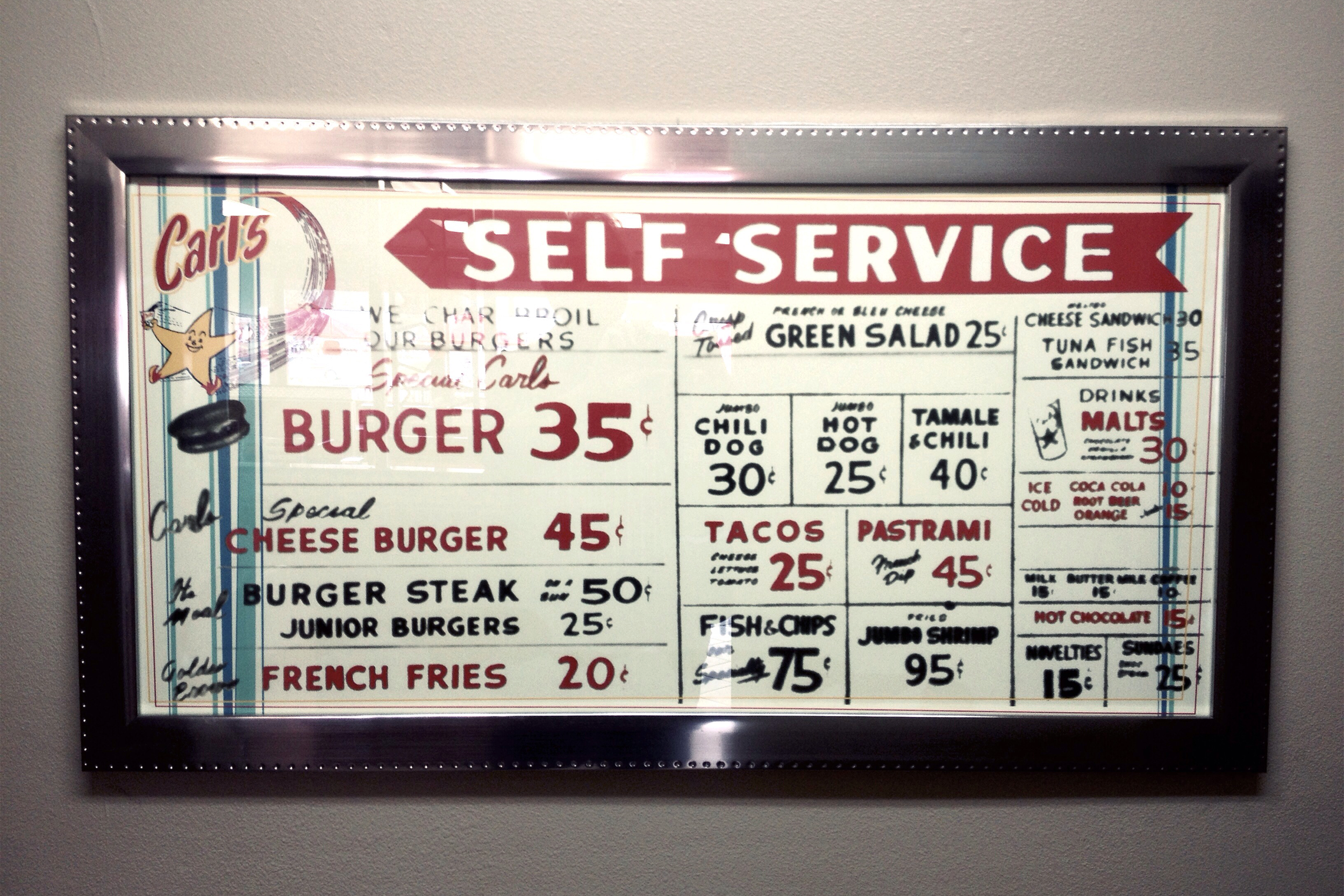
Burgers were always central, but hot dogs, chili dogs, pastrami sandwiches, cheese sandwiches, and tuna sandwiches created a diverse menu. Carl’s also had tacos, fish and chips, and shrimp, predating the combination Taco Bell/Long John Silver’s by decades.
Carl’s Jr. Menu Now
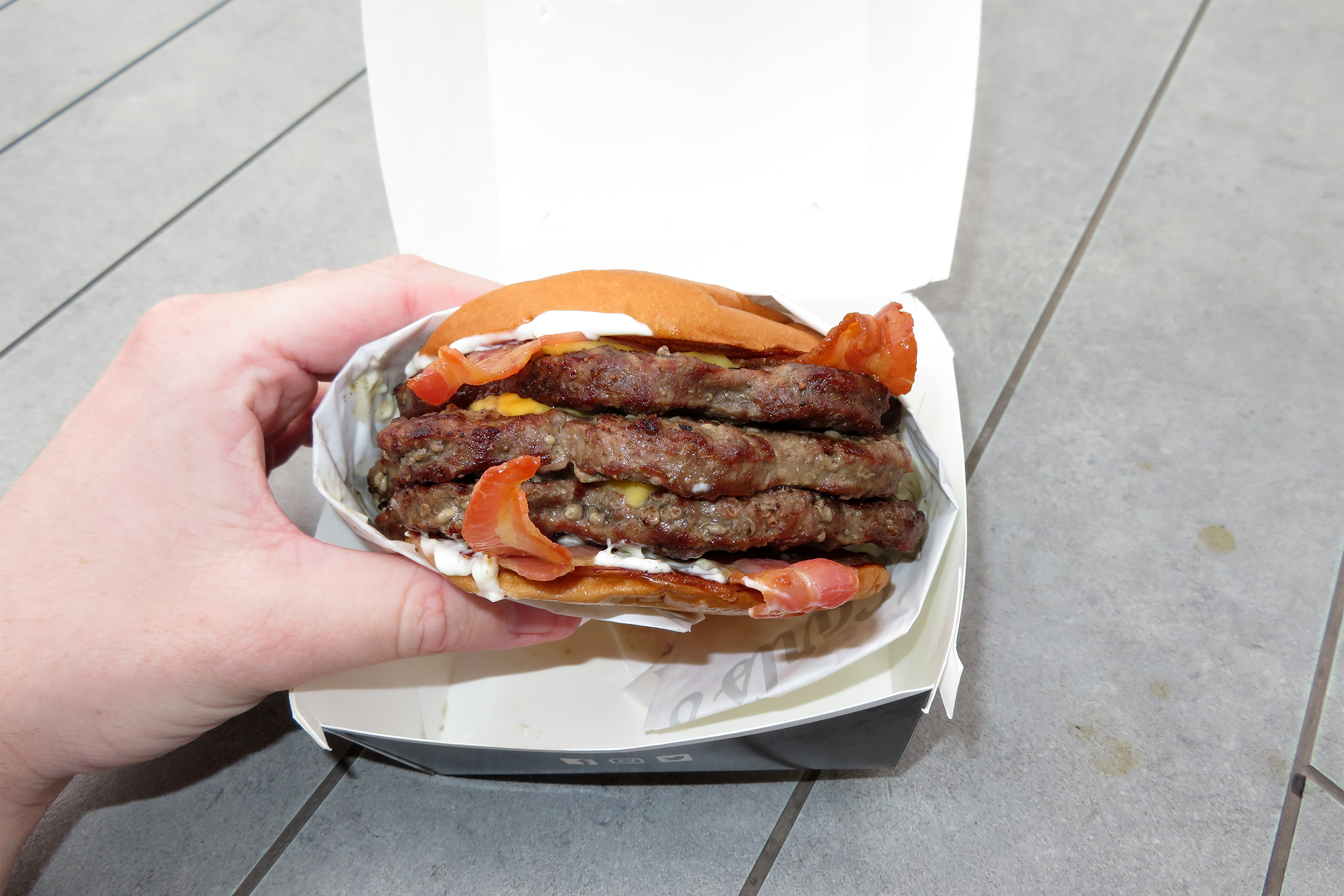
Surprisingly, it isn’t just the Hardee’s menu. Breakfast is as much about burritos as it is about biscuits. Western Bacon Cheeseburgers, plant-based Beyond Famous Stars, Charbroiled Chicken Sandwiches, and Big Chicken Fillet Sandwiches all make their way onto the menu, but fish is long gone and tacos have been relegated to Carl’s Jr. restaurants with a Green Burrito offshoot.
Related: We Tried 24 Fast-Food Sauces and These Are the Best (and Worst)
Starbucks Then
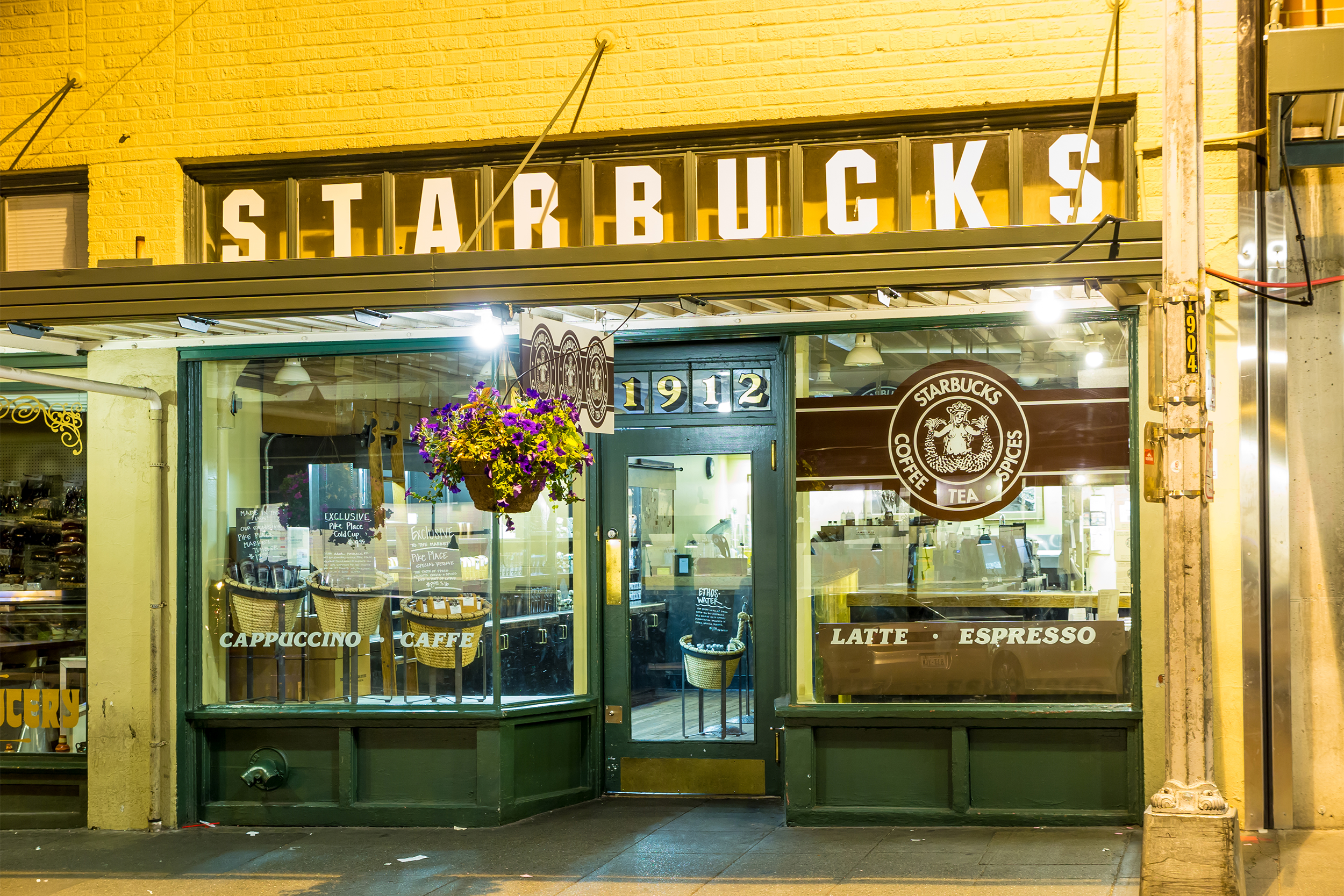
Opened in Seattle in 1971, Starbucks started as a coffee roaster after founders Jerry Baldwin, Zev Siegl, and Gordon Bowker saw Alfred Peet succeed with Peet’s in San Francisco. Taking the name from the chief mate in Melville’s “Moby-Dick,” the partners opened on Western Avenue from 1971-1976 before relocating to 1912 Pike Place. The only brewed coffee served in the store were free samples, though future Starbucks owner Howard Schultz would make espressos and lattes with Starbucks beans at his Il Giornale coffee shop.
Related: 16 Things You Didn’t Know About Starbucks
Starbucks Now
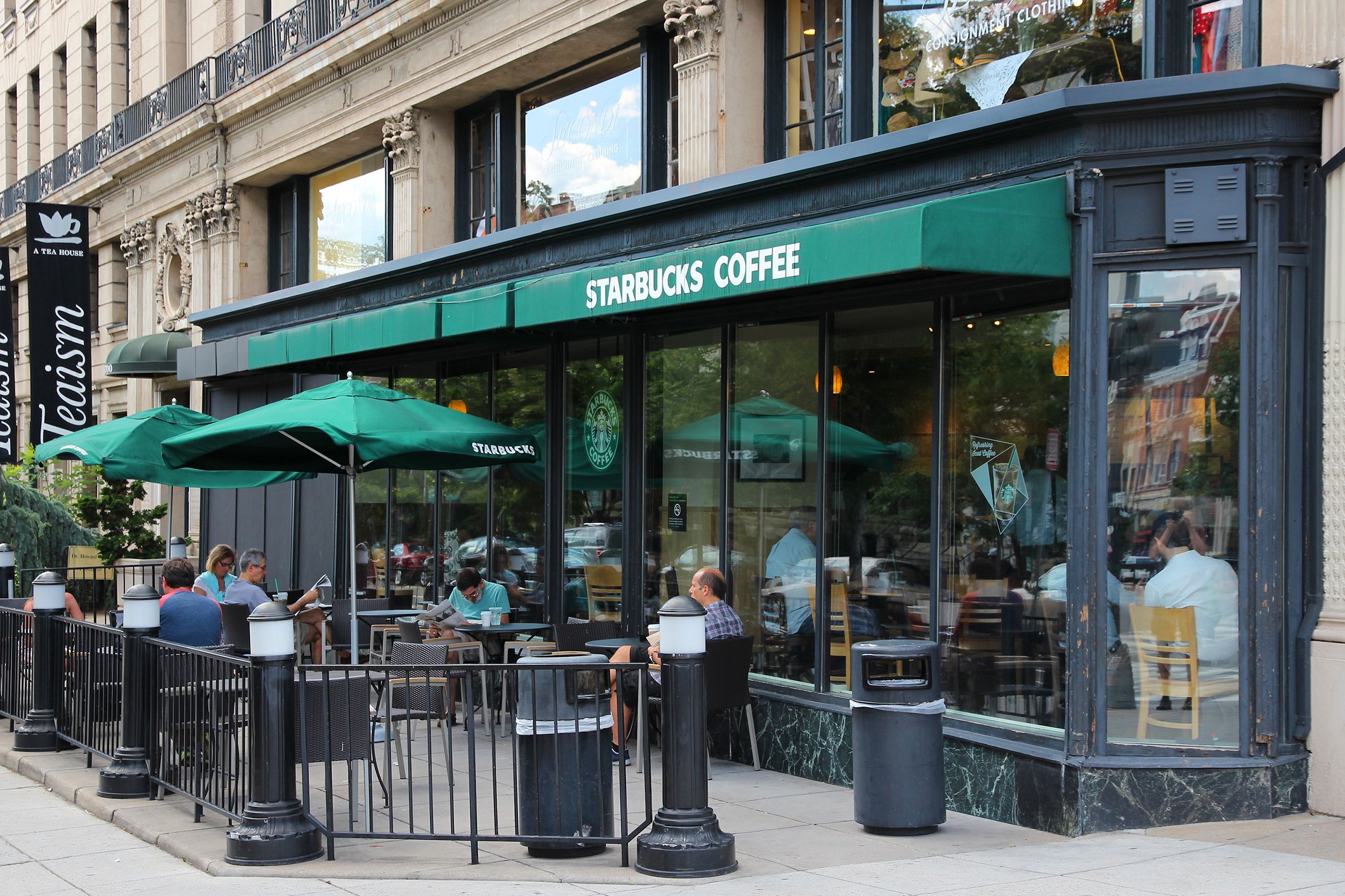
Starbucks’ identity is all about coffee in its more than 28,000 locations, which are continually redesigned for aesthetic and practical purposes. Customers have embraced ordering through Starbucks’ mobile app, so stores now have to reflect a consumer who may not need to stare up at its far broader menus or even go to a cashier. There are plans for 10,000 “greener” stores.
Starbucks Menu Then
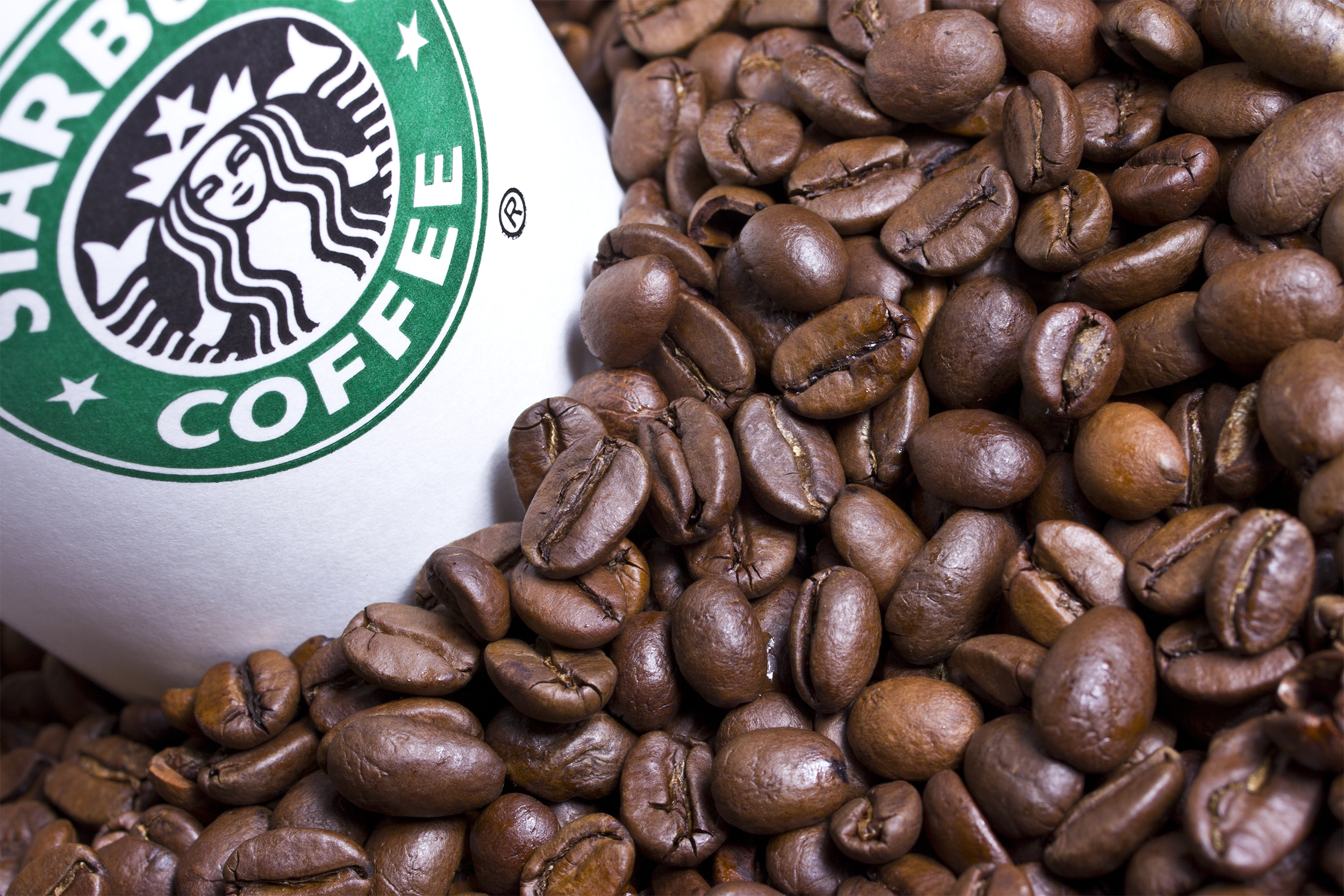
There really isn’t a “Starbucks” menu to show, since it was basically just roasted beans. But if you look at Schultz’s Il Giornale menu, you can see the lattes and macchiatos that make up the backbone of the modern Starbucks menu.
Starbucks Menu Now
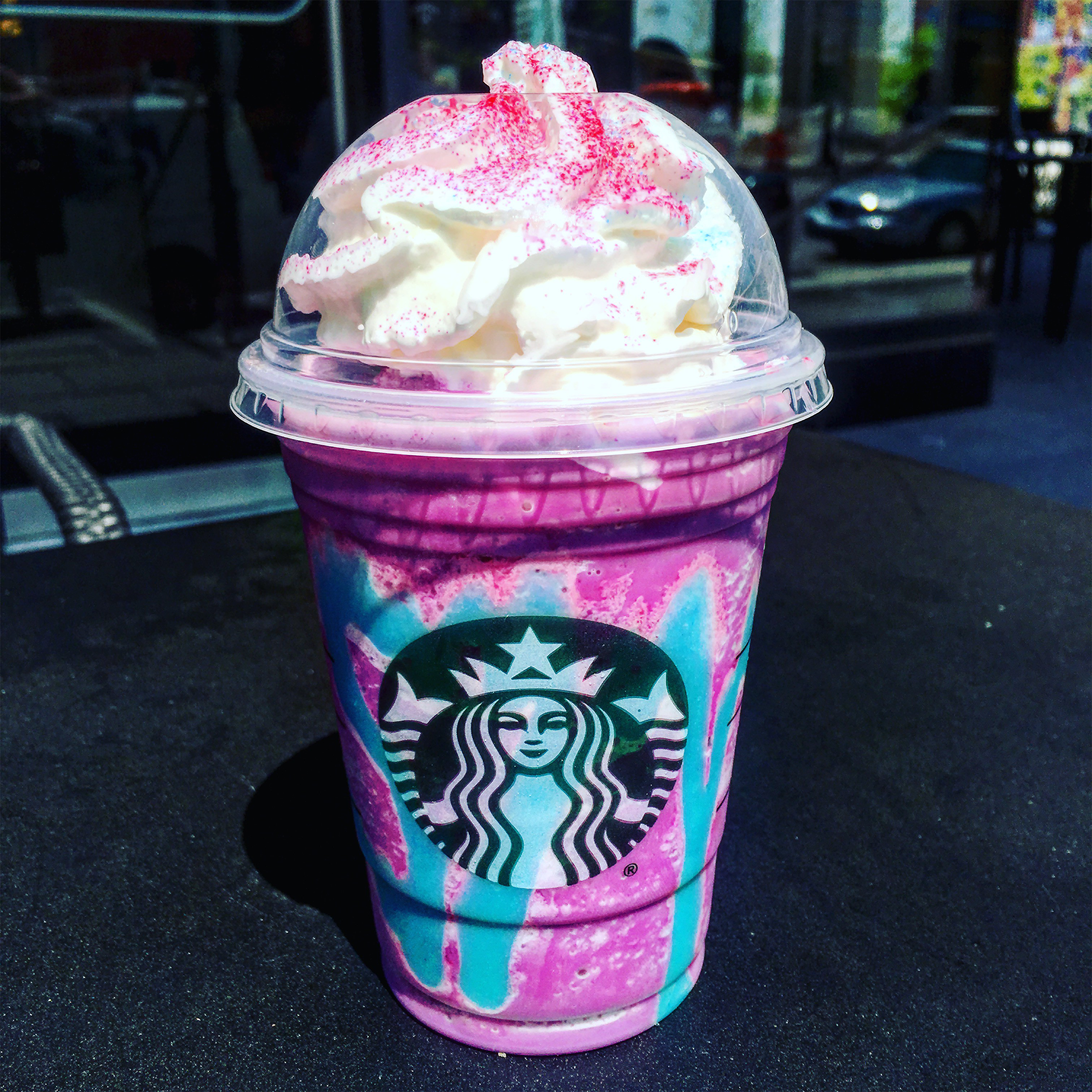
Blonde espresso, flat whites, frappuccino, cold brew, nitrogenated cold brew, cold foam, cold-pressed juices, various teas, oatmeal, baked goods, egg bites, protein boxes, sandwiches, even alcohol in some markets … the Starbucks menu has grown. Though the company recently announced that it’s removing 13 drinks from the menu as part of a broader effort to return to its roots. And if you don’t want coffee, just get lunch.
Dunkin’ Donuts Then
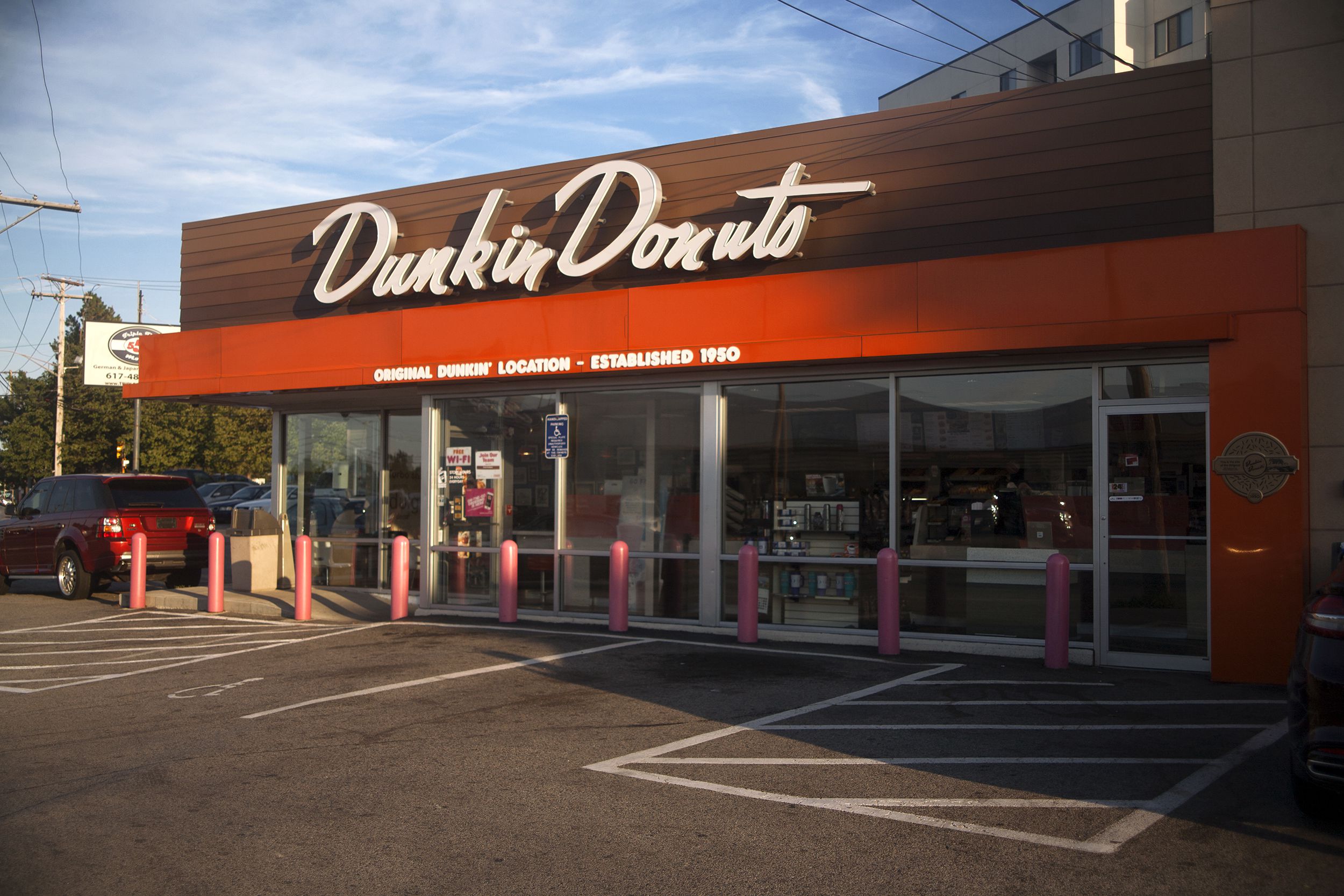
In 1948, Bill Rosenberg opened his Open Kettle in Quincy, Massachusetts, serving premium coffee and doughnuts. When business was slow, he asked a few executives if maybe he should rename the place. He turned to Dunkin’ Donuts since, at the time, you dunked very dry doughnuts into coffee. Within a decade, there were 100 locations.
Dunkin’ Donuts Now
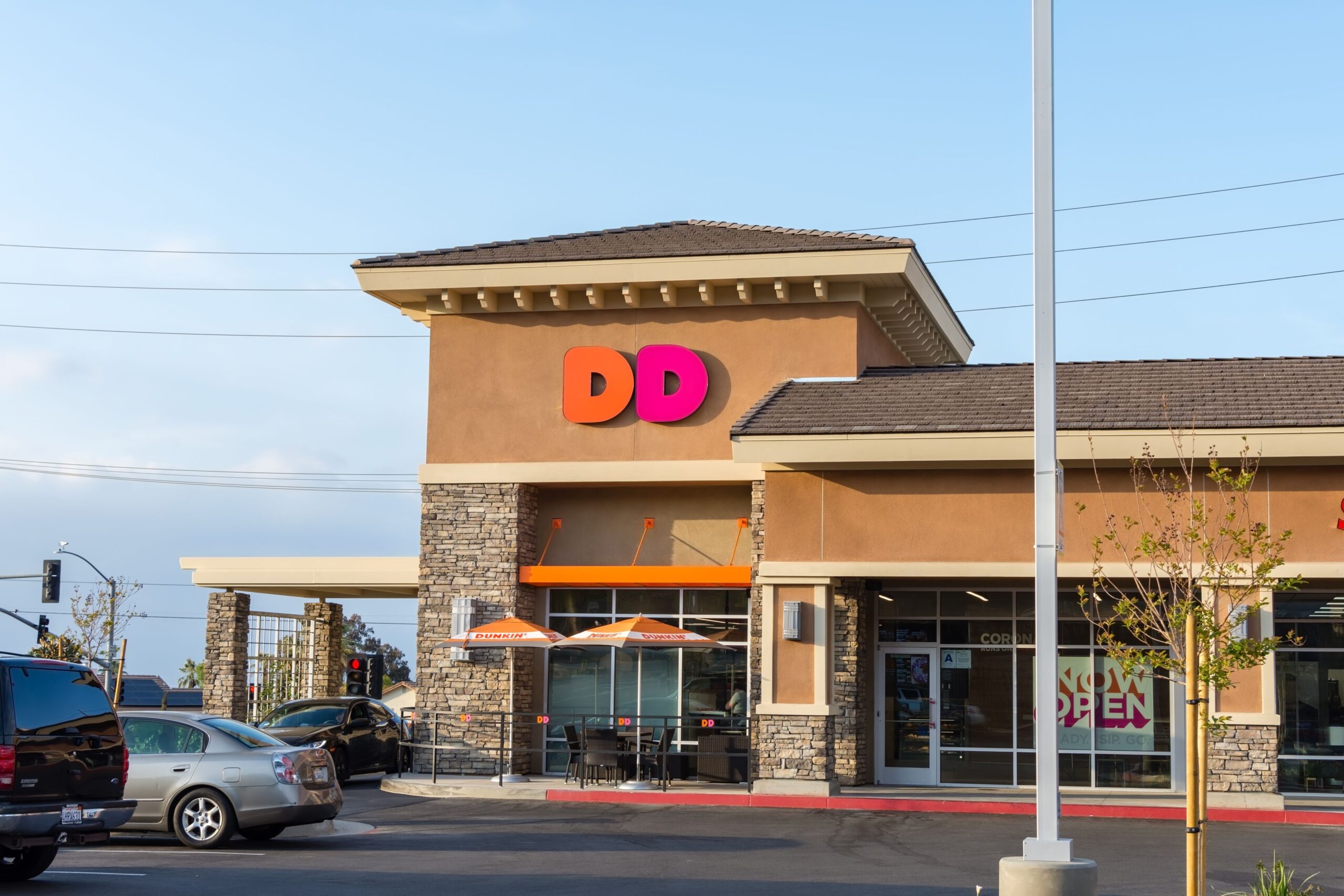
Dunkin’ Donuts kicked “Donuts” out of the name, putting in exclusive mobile drive-thru lanes, adding self-serve kiosks, putting cold drinks on tap, and expanding grab-and-go to include items that aren’t pastry. There are now 12,200 stores worldwide, too.
Dunkin’ Donuts Menu Then
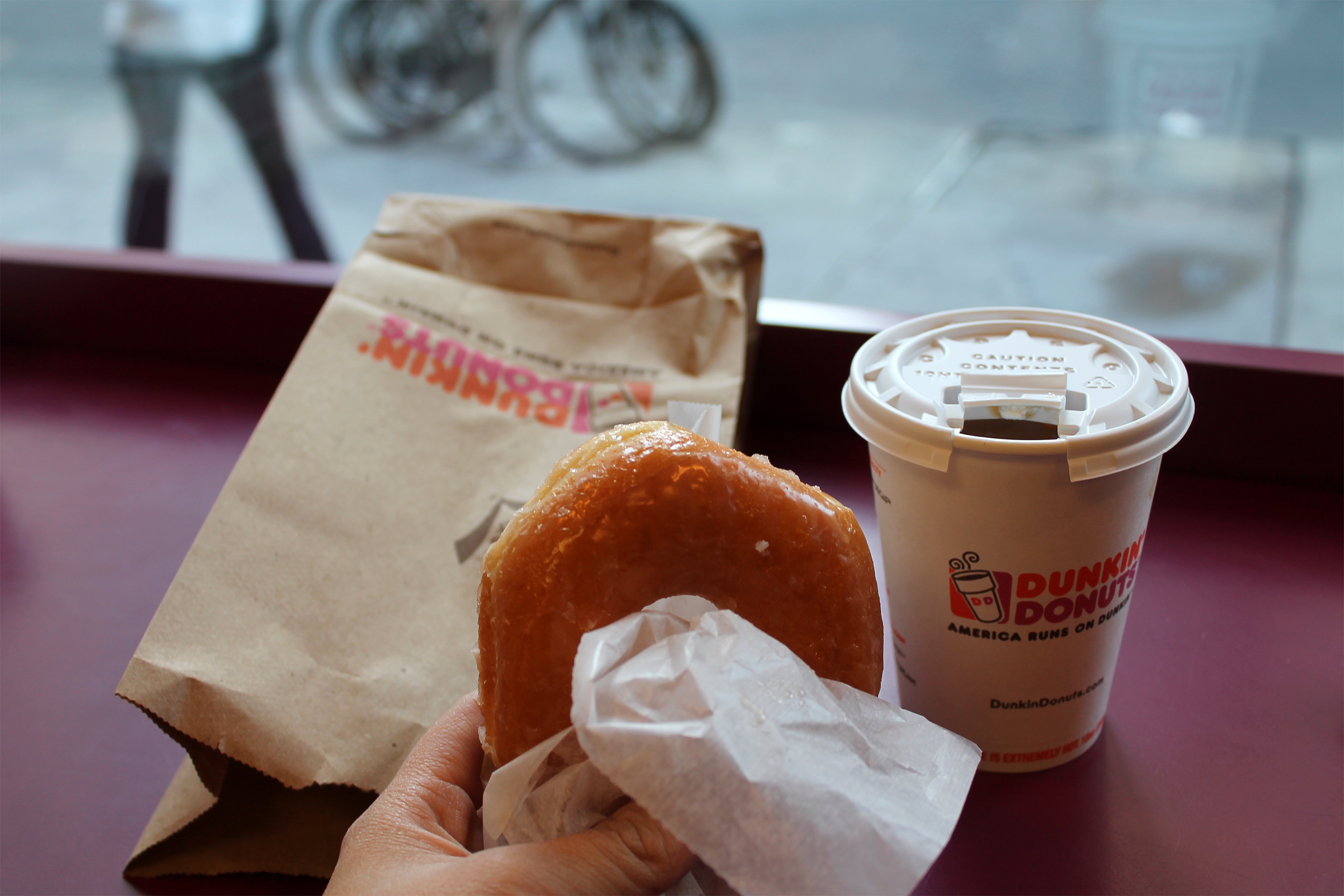
The original Dunkin’ Donut with the handle, as well as filled and frosted doughnuts, were as little as 69 cents a dozen, with tarts and premium pastry (twists, Bismarcks, strudels, and coffee rolls) going for 13 cents apiece. A cup of coffee was 10 cents if you were staying and 20 cents if you were taking it away. You could also get a stack of pancakes (55 cents).
Dunkin’ Donuts Menu Now
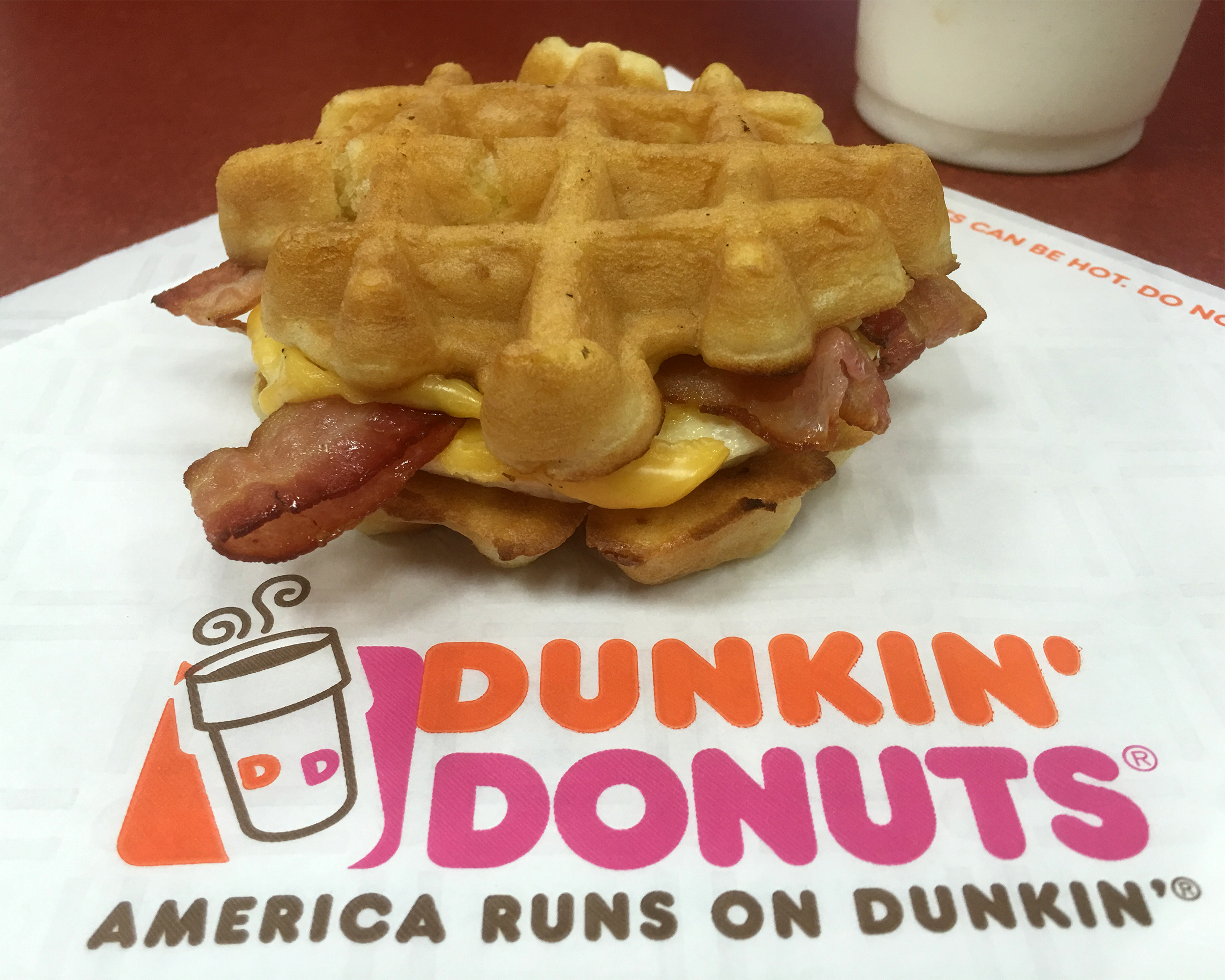
In 1972, Munchkins doughnut holes were introduced. In 1996, bagels were added to the menu, with Coolatta frozen beverages and breakfast sandwiches added the next year. Snackin’ Bacon was added in 2020 and avocado toast in 2021. Doughnuts are, miraculously, still there.
Related: Dunkin’ vs. Krispy Kreme: Who Has the Better Tasting Doughnuts?
Chick-fil-A Then
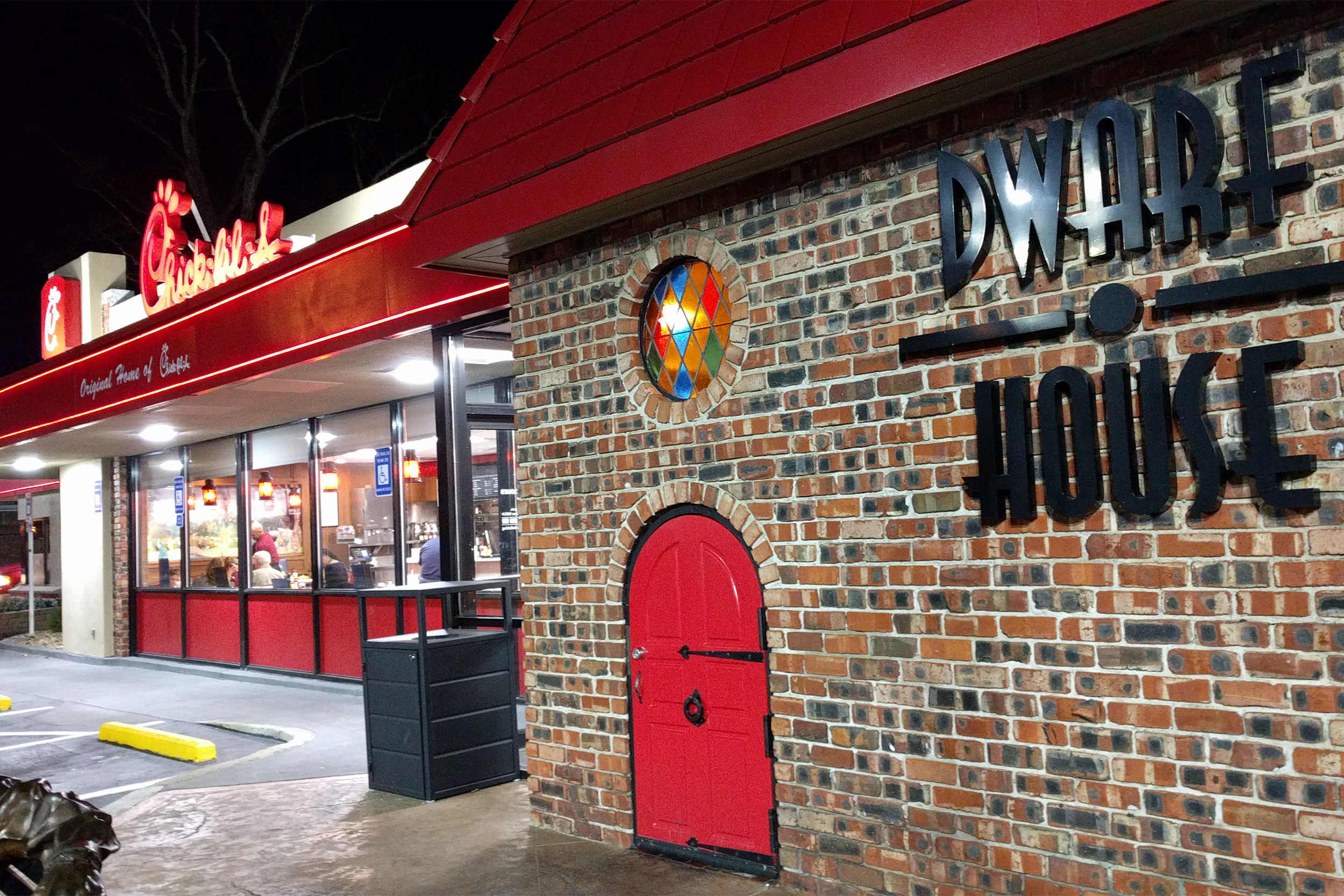
Started back in 1946 as the Dwarf Grill (later renamed Dwarf House) in Hapeville, Georgia — an Atlanta suburb — it took Chick-fil-A some time to not only embrace its trademark chicken sandwich, but the identity that led it into 46 states. The first chicken sandwich didn’t hit the menu until 1964, and Chick-fil-A didn’t move outside of mall food courts until 1986.
Chick-fil-A Now
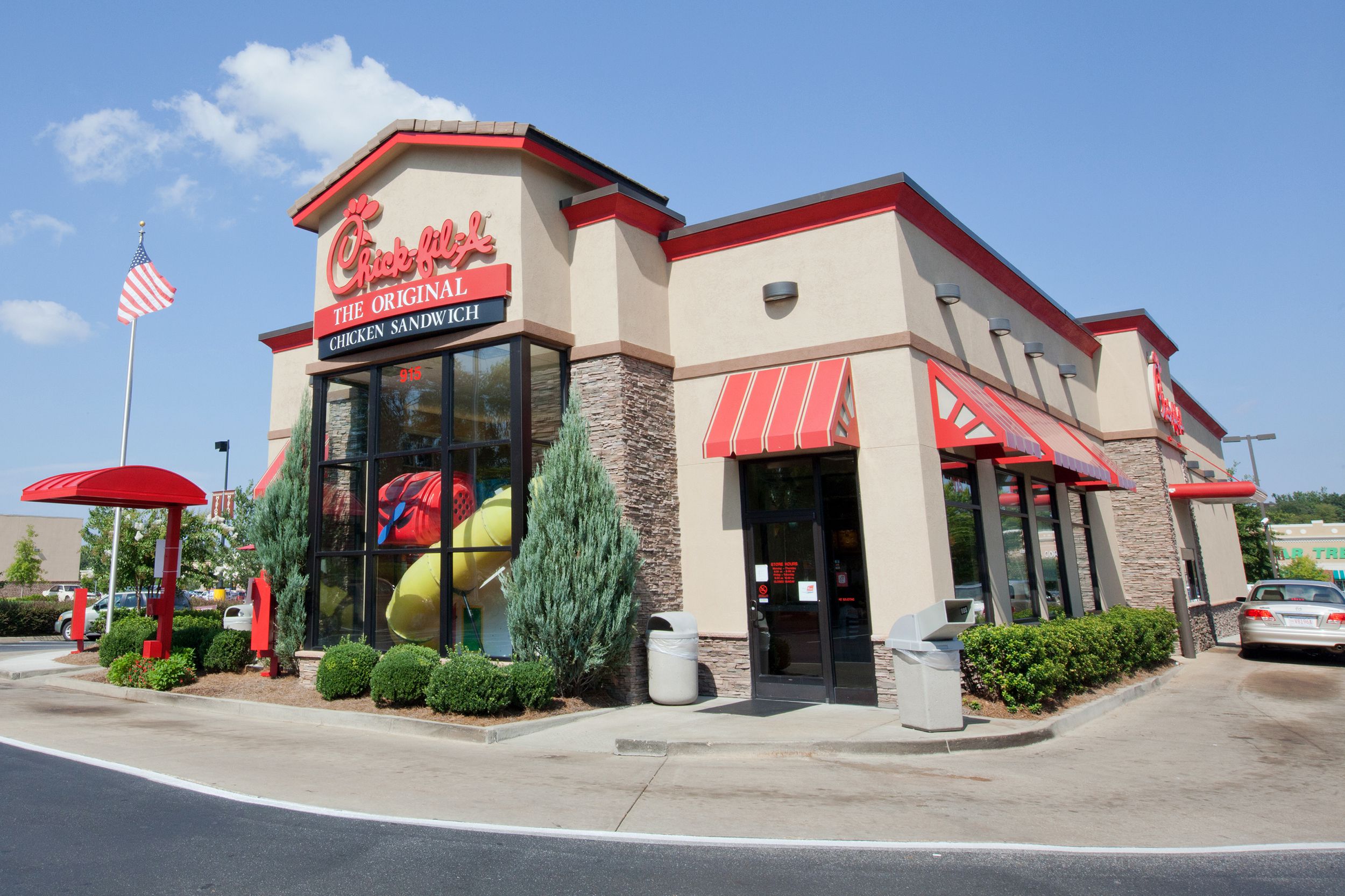
With more than 2,600 locations throughout the United States, the average Chick-fil-A location brings in roughly $4.4 million in sales each year — even as it remains closed on Sundays. It now has a mobile app and a membership program, has modernized its corporate structure, and markets itself as more inclusive and politically neutral after years of being identified as religious and conservative.
Chick-fil-A Menu Then
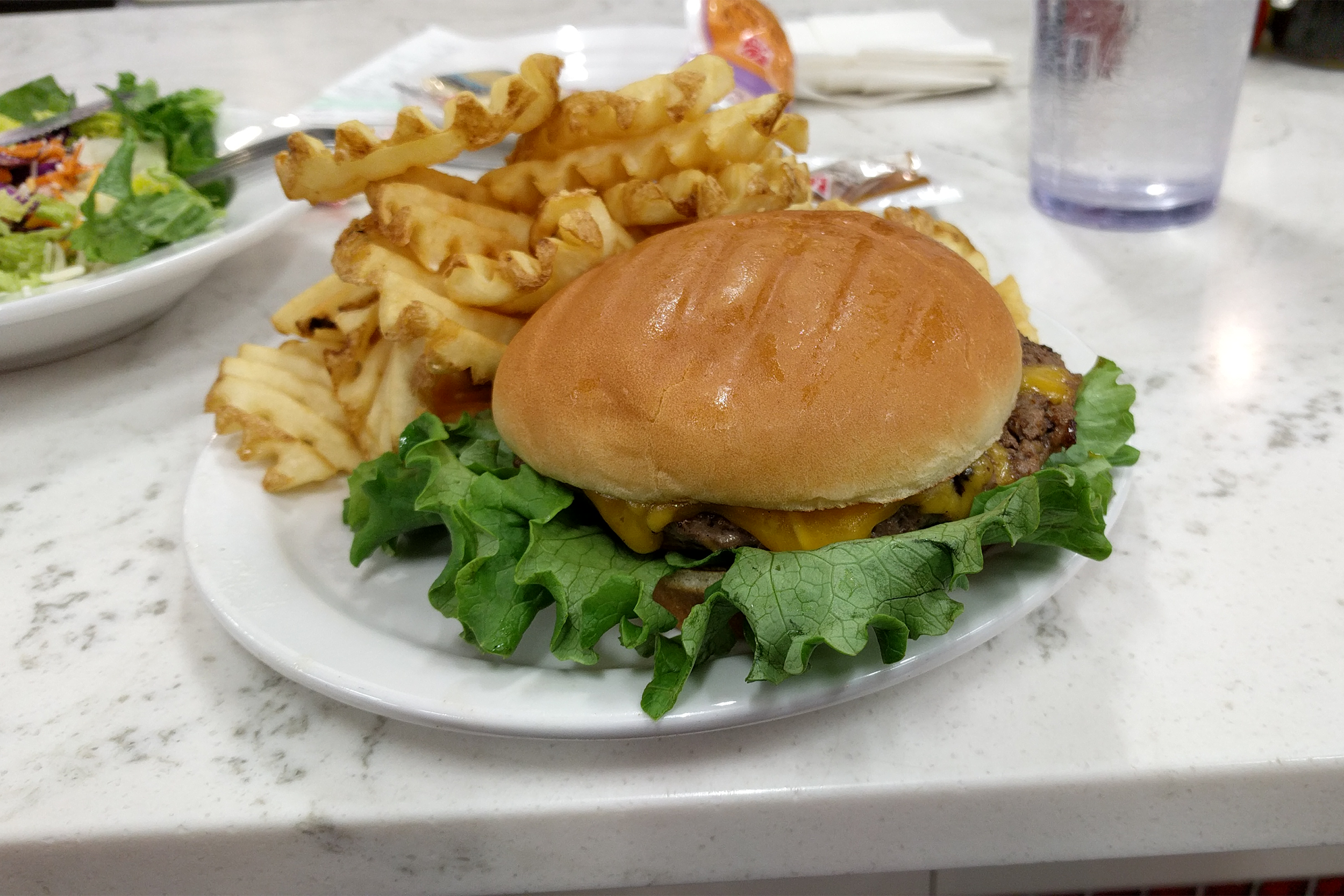
The star of the show when the Dwarf Grill opened was a plate of tenderloin steak with shoestring potatoes. The chain may want to save cows now, but in the beginning, it served lots of burgers, hamburger steaks, breakfast items, and bacon and fried-ham sandwiches.
Chick-fil-A Menu Now
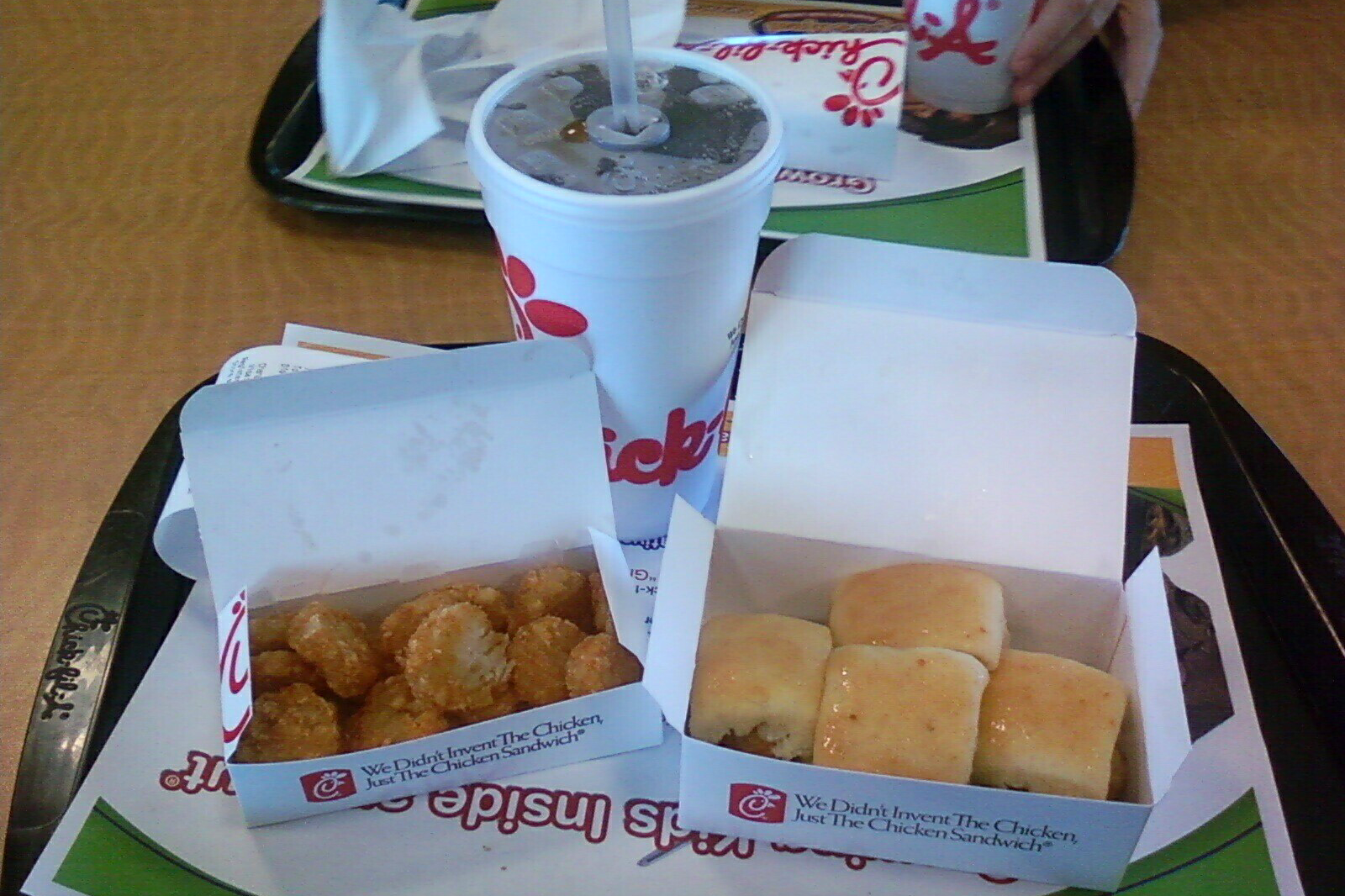
The chicken sandwich with two pickles is still the money maker, but a breakfast menu, chicken salads, a Superfood Side, and seasonal specialty items create a bit more variety. The addition of a spicy chicken sandwich has also been a hit, often lauded alongside Popeyes’ entry in the spicy chicken sandwich game.
Pizza Hut Then
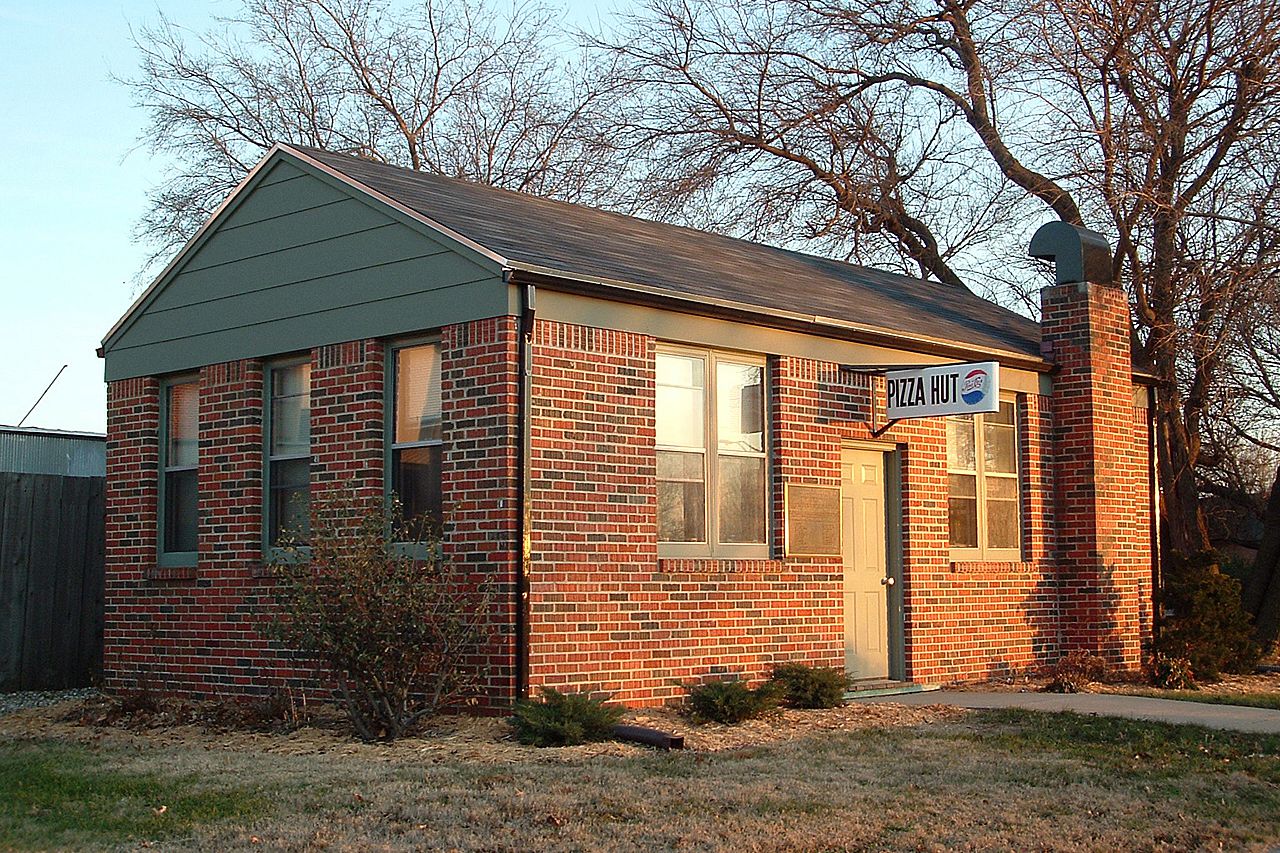
Wichita State University students Dan and Frank Carney started their first Pizza Hut in Wichita in 1958, and a first franchise location opened in 1960. The actual “hut,” the red-roof structures that often had pitchers of beer, a stocked salad bar, a jukebox and arcade games, didn’t show up until 1969.
Related: These Vintage Pizza Hut Photos Make Us Want to Time Travel
Pizza Hut Now
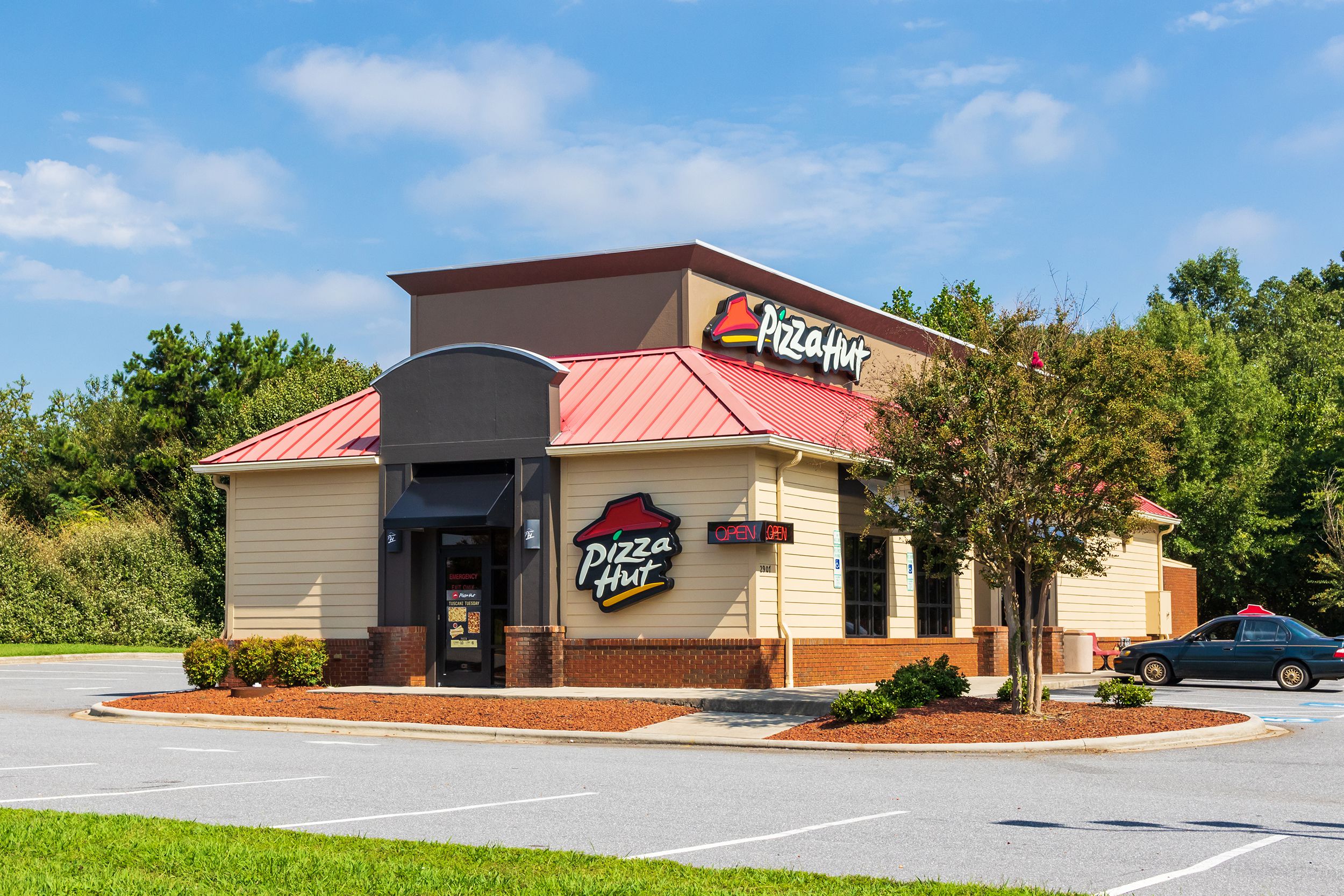
There are now more than 18,000 locations worldwide, but fewer than 3,000 of the traditional “red roof” locations still exist. Today, Pizza Hut focuses most new business on smaller locations, pickup and takeout, and combination locations with Taco Bell, KFC, or WingStreet. Parent company Yum Brands is pouring $130 million into Pizza Hut to improve customer experience and enhance technology such as ordering kiosks and mobile apps.
Related: Fast Food Dishes With Downright Obsessive Followings
Pizza Hut Menu Then
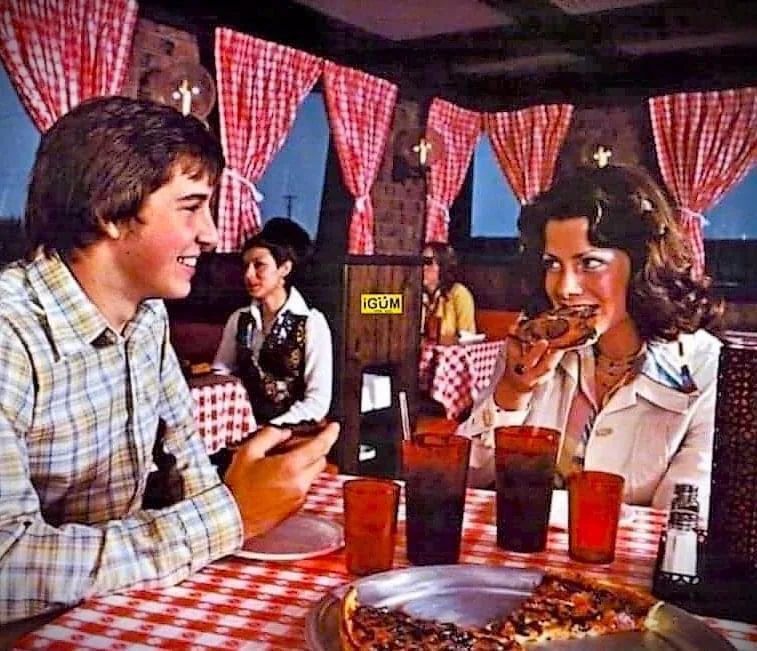
There was no stuffed crust or promotional items. Your choices were green pepper, onion, anchovy, sausage, mushroom, hamburger, pepperoni or “Pizza Supreme” in small or large. You got your choice of “pop,” milk, or coffee as beverages, and Pizza Hut’s original incarnation also served beer.
Pizza Hut Menu Now
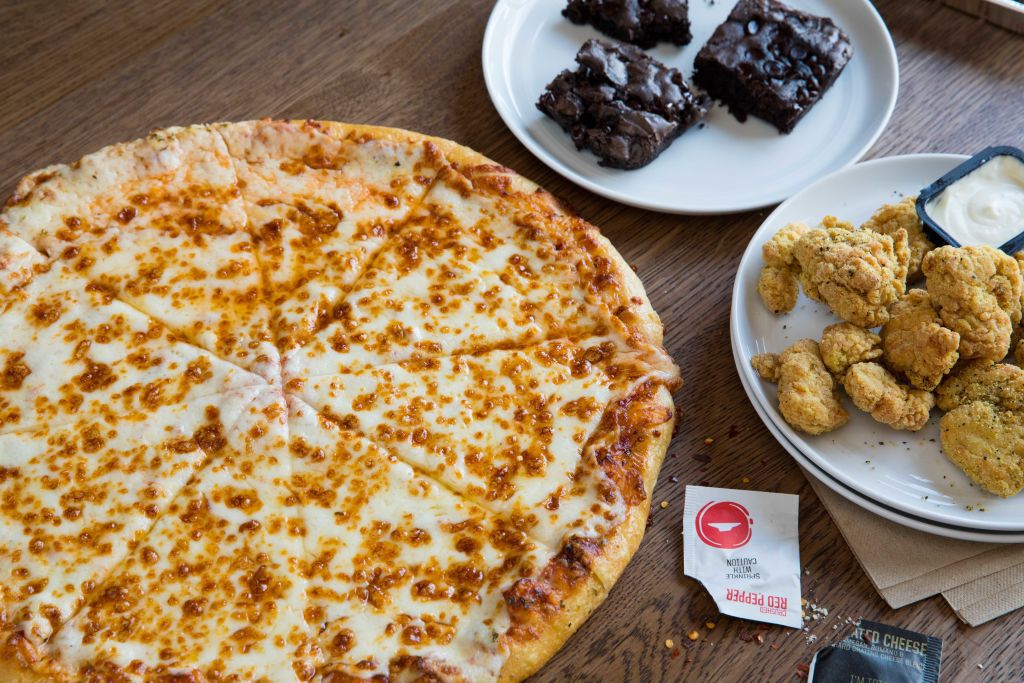
The simple pizza shop menu is gone, replaced with specialty pies, wings, pasta, and desserts including Cinnabon mini rolls. Alongside pizzas’ red sauce comes options such as Creamy Garlic Parmesan or Buffalo, you can get crusts of Toasted Parmesan or Garlic Buttery Blend and toppings now include jalapeño peppers and spinach.
Related: 24 Surprising Facts About Pizza, America’s Favorite Comfort Food
Dairy Queen Then
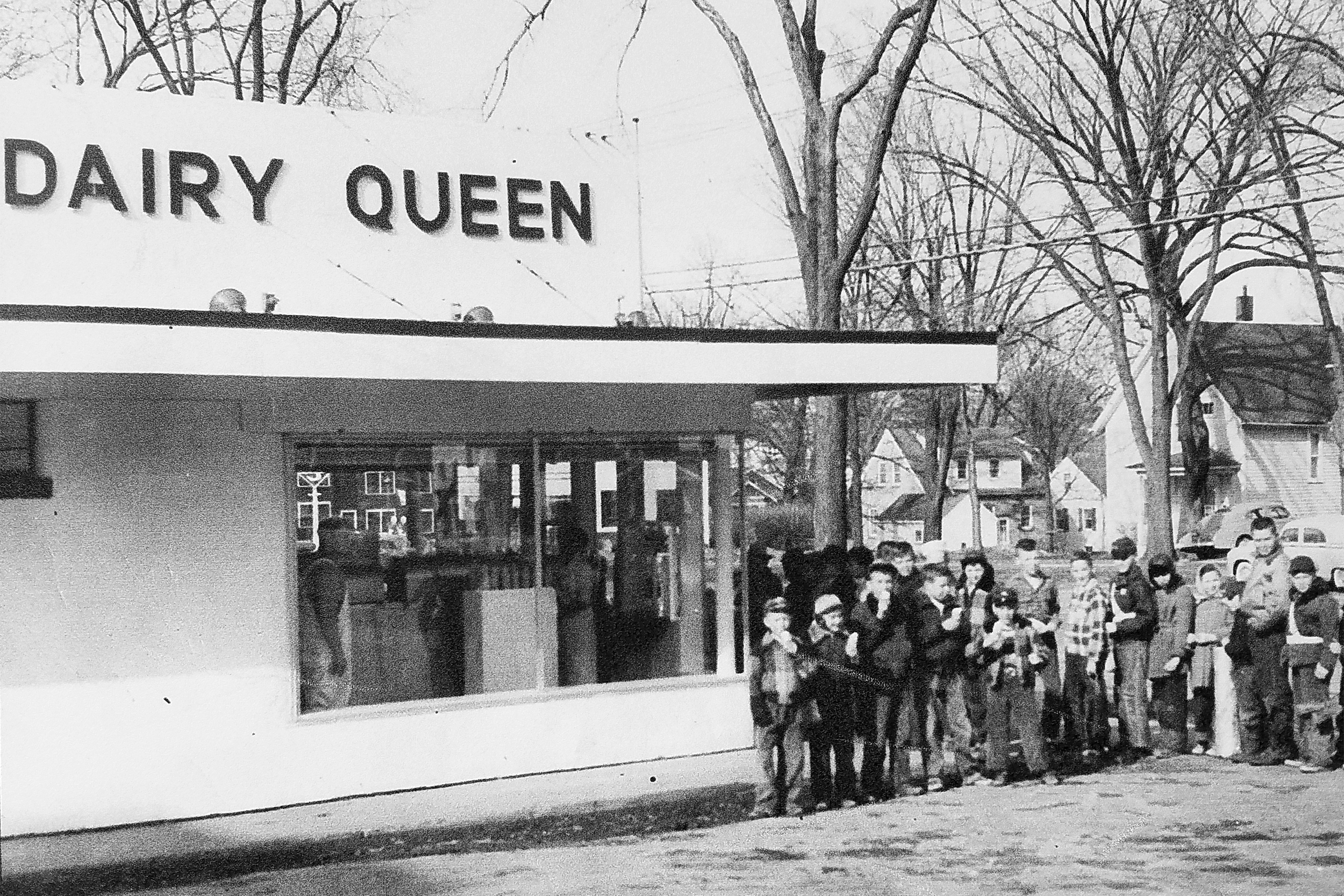
Though John Fremont “J.F.” “Grandpa” McCullough and his son Alex first convinced Sherb Noble to offer their soft serve in his ice cream store in Kankakee, Illinois, in 1938, the trio didn’t open the first Dairy Queen location until 1940 in Joliet. The site of the first operation remains, but much has changed since.
Dairy Queen Now
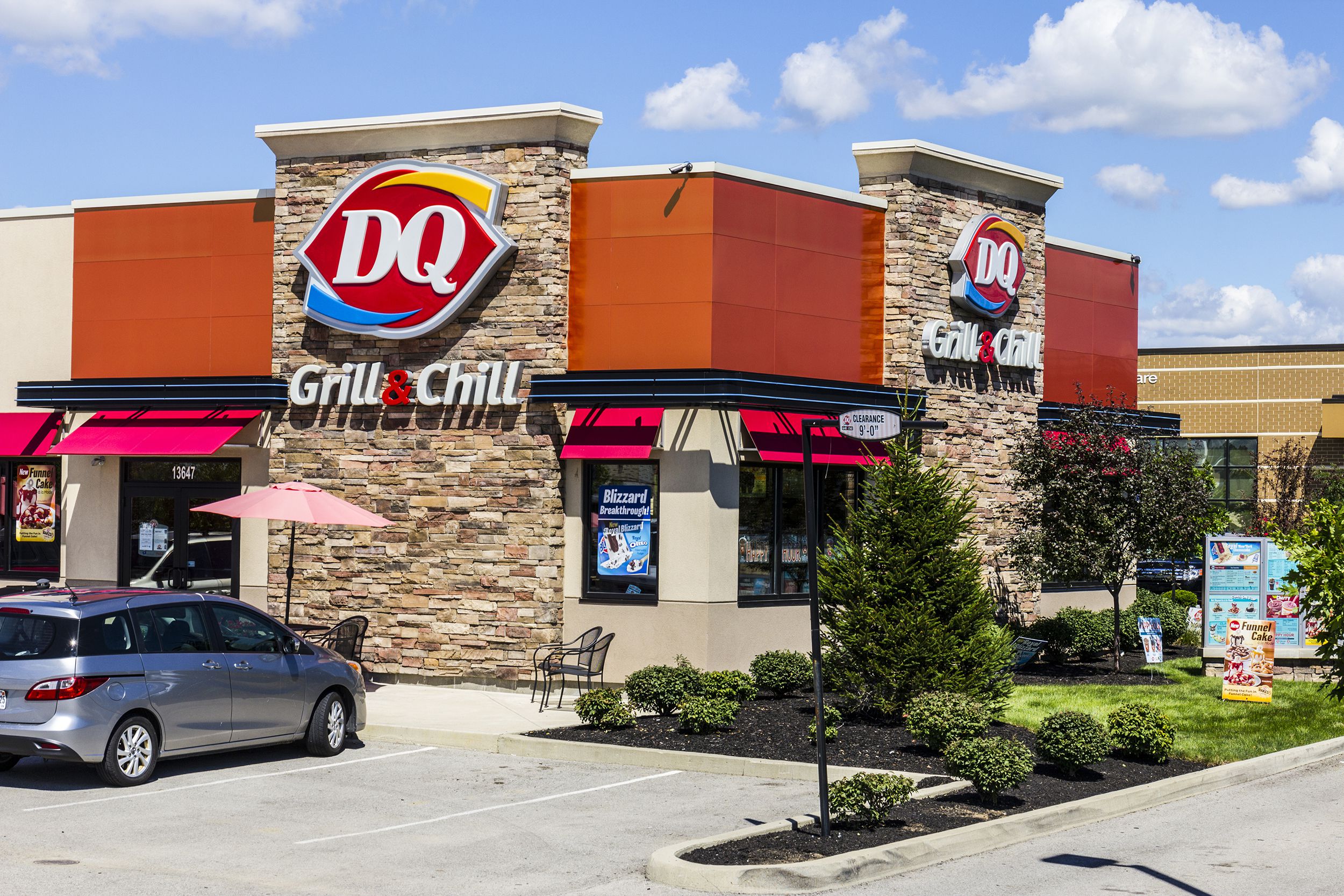
Billionaire Warren Buffett’s Berkshire Hathaway bought Dairy Queen in 1998 and has expanded it to 5,700 locations around the world. Now paired with mall staple Orange Julius, Dairy Queen’s offerings and even hours still vary by location. Some are seasonal, while others have expanded into full restaurant operations.
Dairy Queen Menu Then
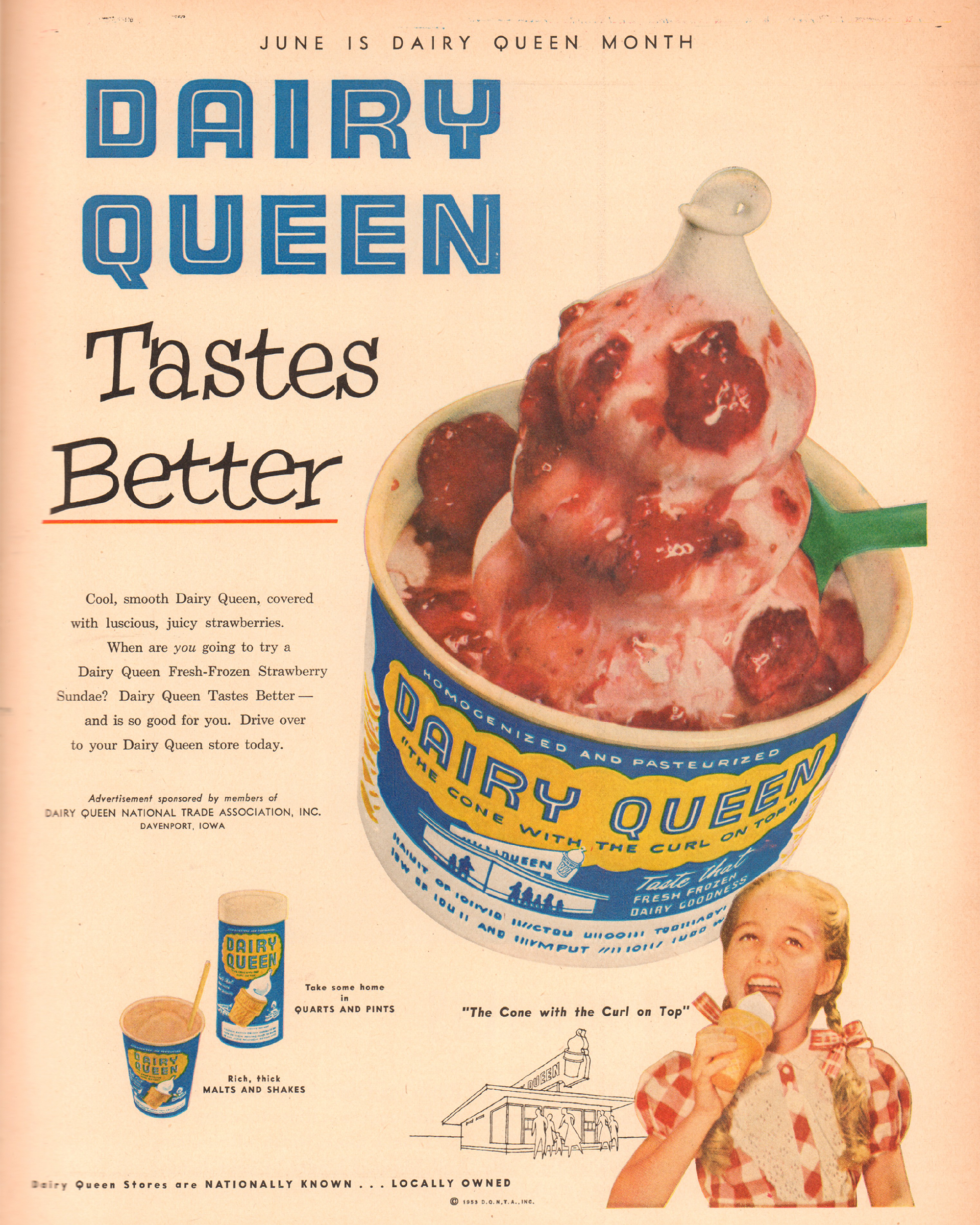
No Blizzards, no Dilly Bars … just sundaes, cones and “cuplets,” and the occasional float. Dairy Queen kept it simple, but that would change quickly.
Dairy Queen Menu Now
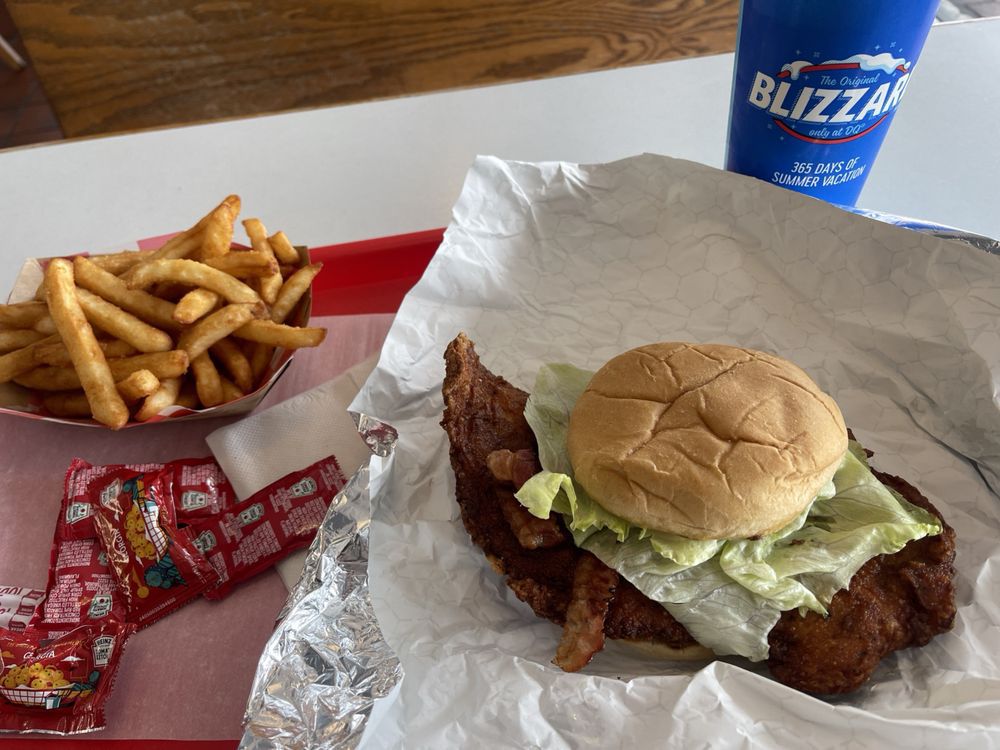
Malts and milkshakes arrived in 1949, banana splits in 1951, Dilly Bars in 1955, cooked foods under the Brazier banner in 1957, Misty slush in 1961, and the Blizzard in 1952 (though that thick shake wouldn’t appear as we know it today until 1985). Now there is a full breakfast, lunch, and dinner menu, coffee, baked snacks, pizza, Orange Julius, and more.
Arby’s Then
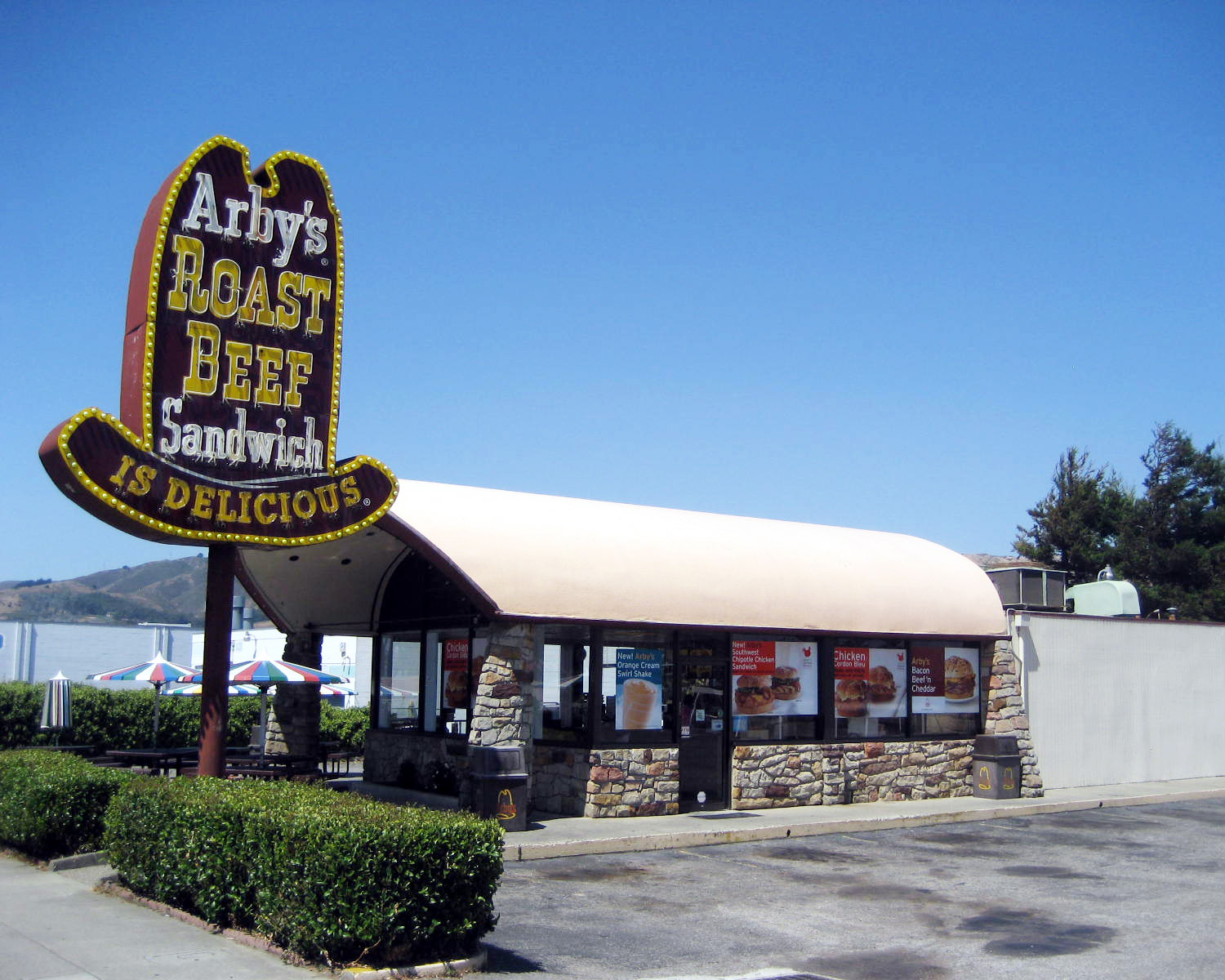
First opened in Boardman, Ohio, in 1964, Arby’s is actually named after the initials of founders Leroy and Forrest Raffel’s restaurant equipment company, Raffel Brothers. The name they wanted for their roast beef chain, Big Tex, was taken.
Arby’s Now
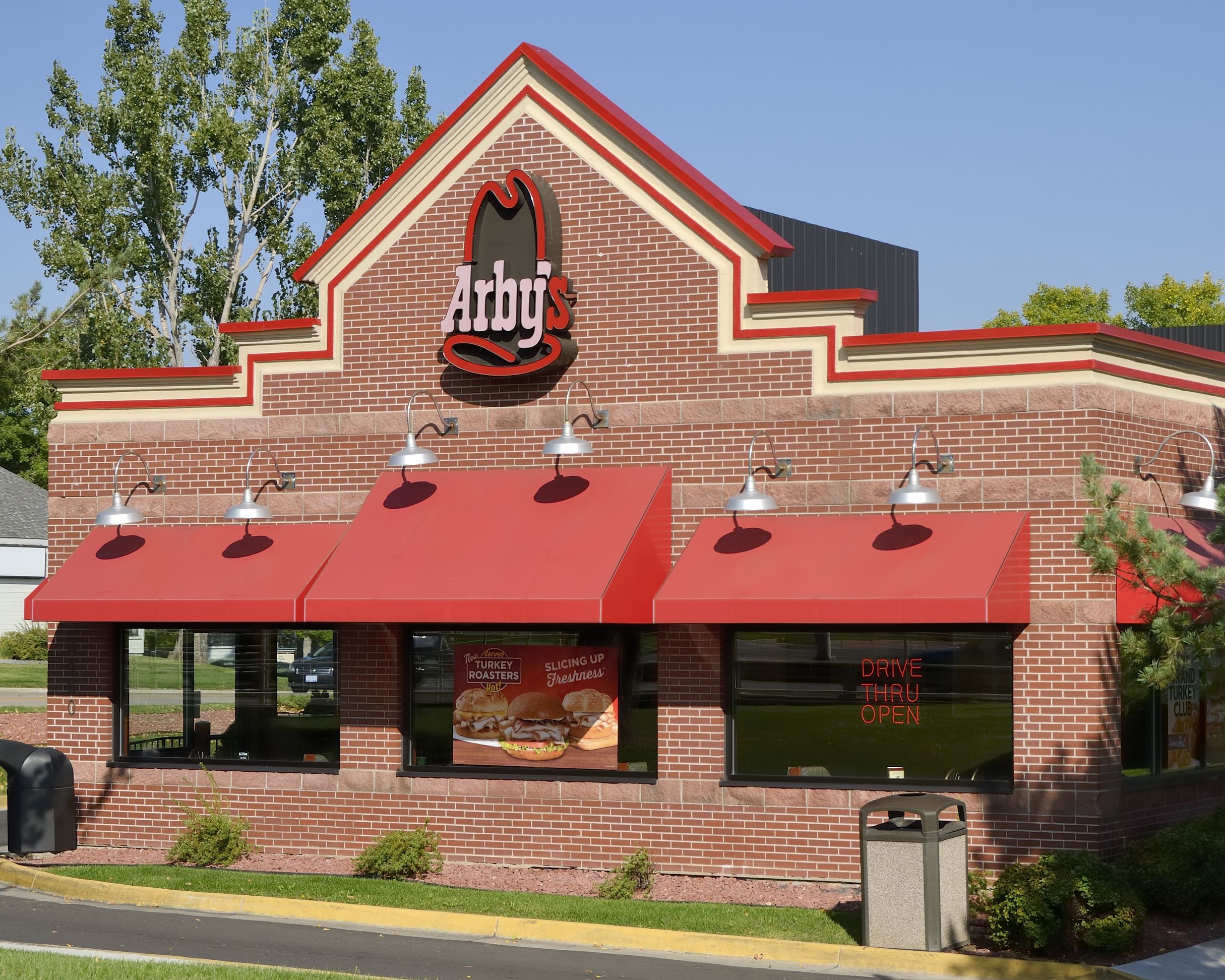
With more than 3,400 locations worldwide, Arby’s has seen some hard times. Owners have included Royal Crown Cola, Triarc, and Roark Capital. Now the independent flagship of the Arby’s-owned Inspire Group, Arby’s bought Buffalo Wild Wings. Though a brand revamp in 2012 didn’t really take, a bunch of new ads, sandwiches, and technology is moving this chain forward.
Related: This Beloved Arby’s Menu Item Is Making a Comeback
Arby’s Menu Then
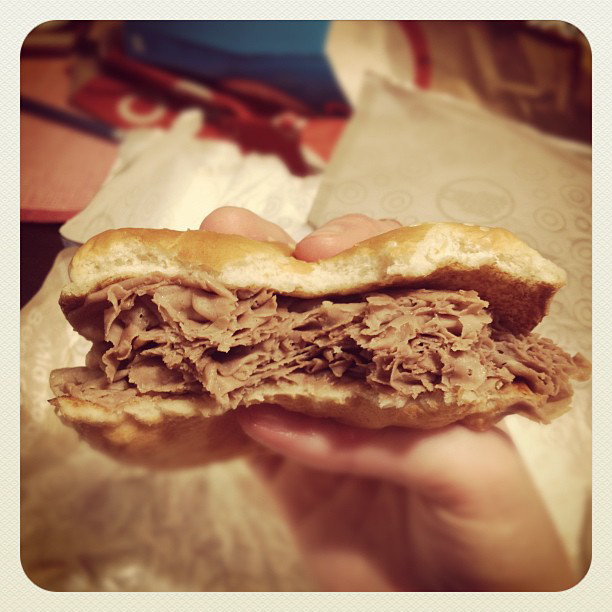
Arby’s first menu was roast beef sandwiches, chips, and drinks. With the cost of a sandwich at only 69 cents, Arby’s five for $5 deals (more recently two for $5) wouldn’t have been much of a deal at all.
Arby’s Menu Now
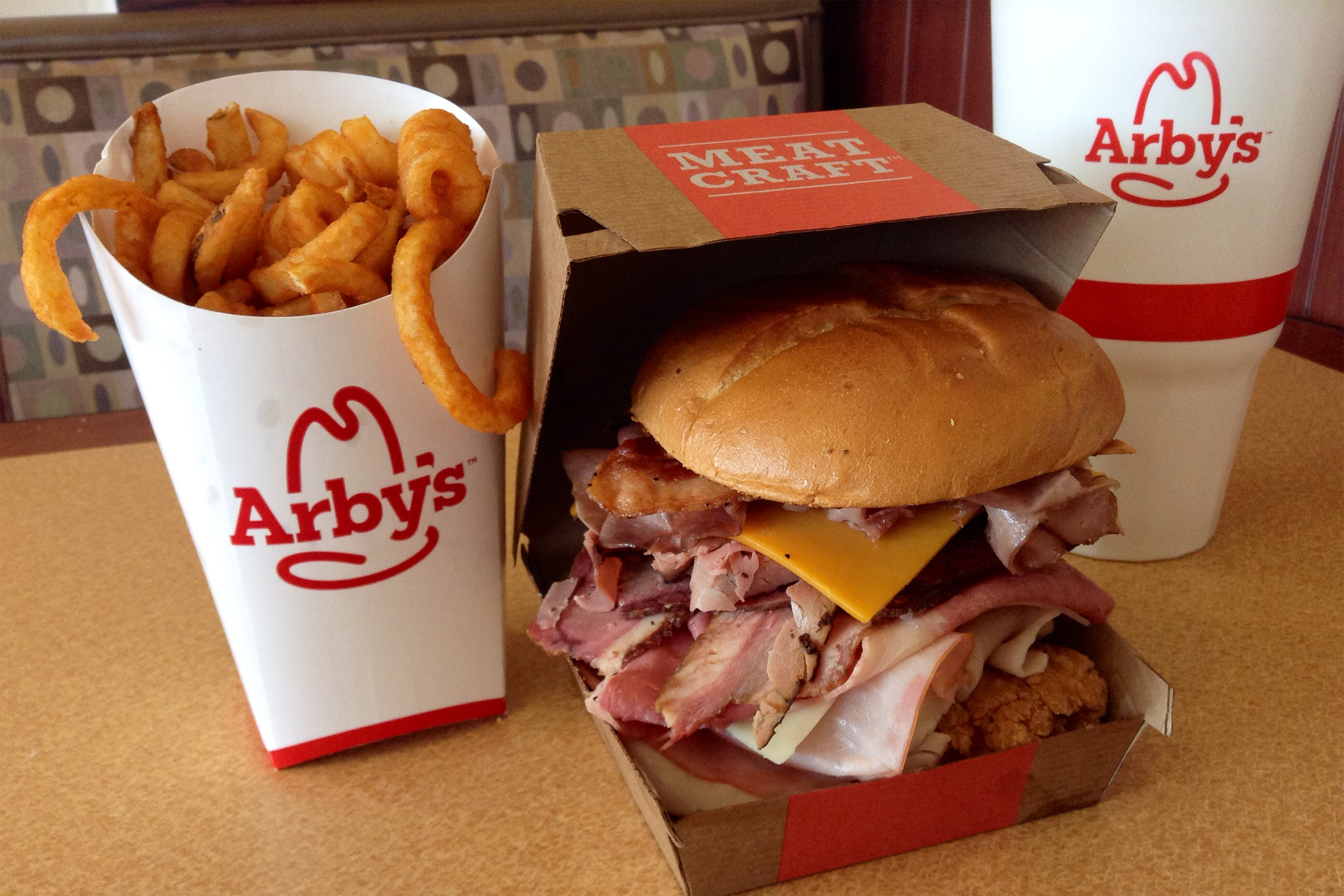
Don’t let the market-fresh sandwiches and Buffalo chicken sliders fool you: Arby’s is still very much about roast beef. Its smokehouse brisket is one of the biggest successes in its history, and it was only released in 2013. Ham, chicken, and turkey sandwiches have been added in recent years, but there are just three salads here. Arby’s knows what its people want.
Related: 39 Mouthwatering Roast Beef Sandwiches Across America
Jack in the Box Then
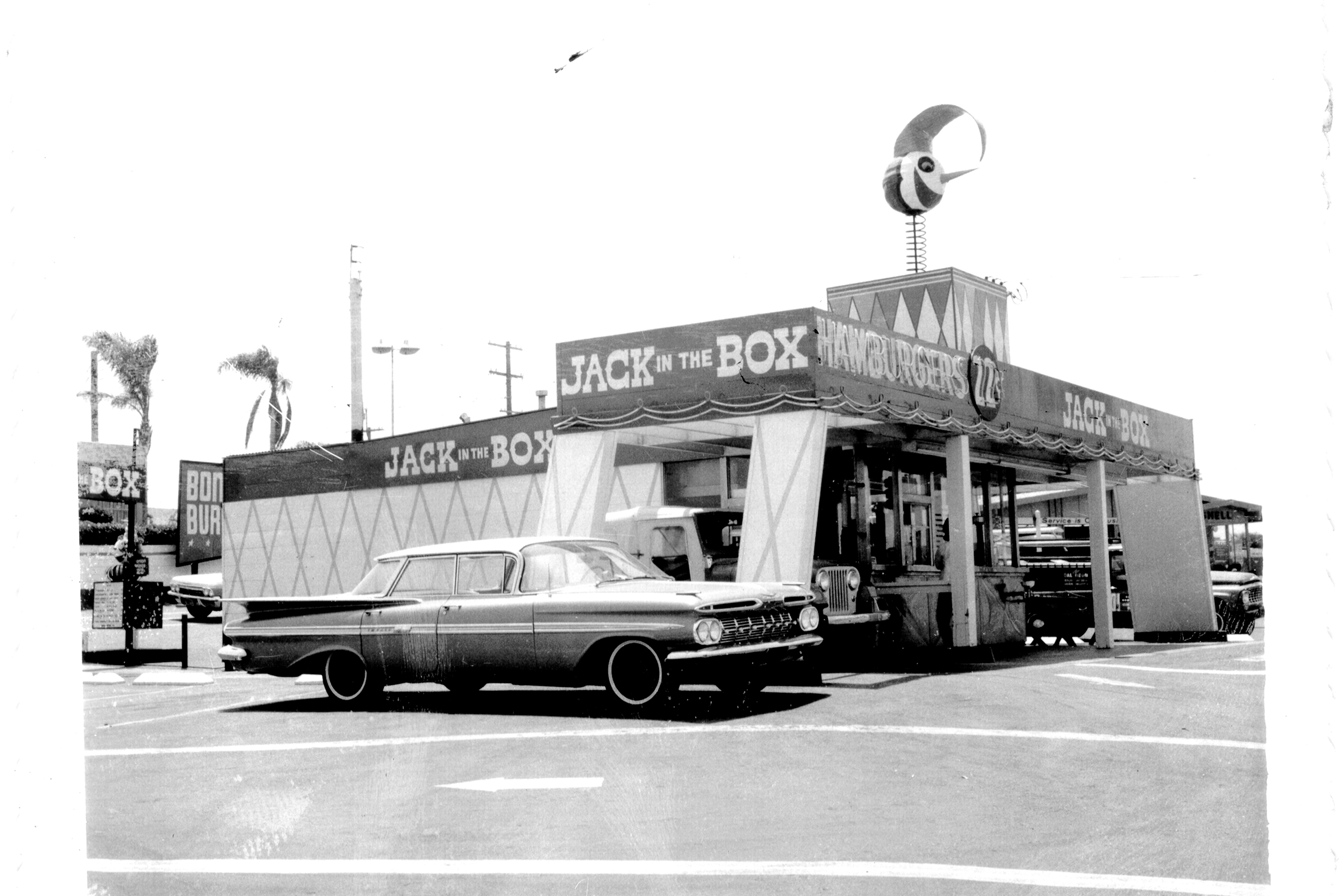
San Diego businessman Robert O. Peterson opened the first Jack in the Box location in 1951, complete with intercom system, a drive-thru window, 18-cent burgers — and a rooftop clown. It spread through California, Arizona, and Texas in its early years.
Jack in the Box Now
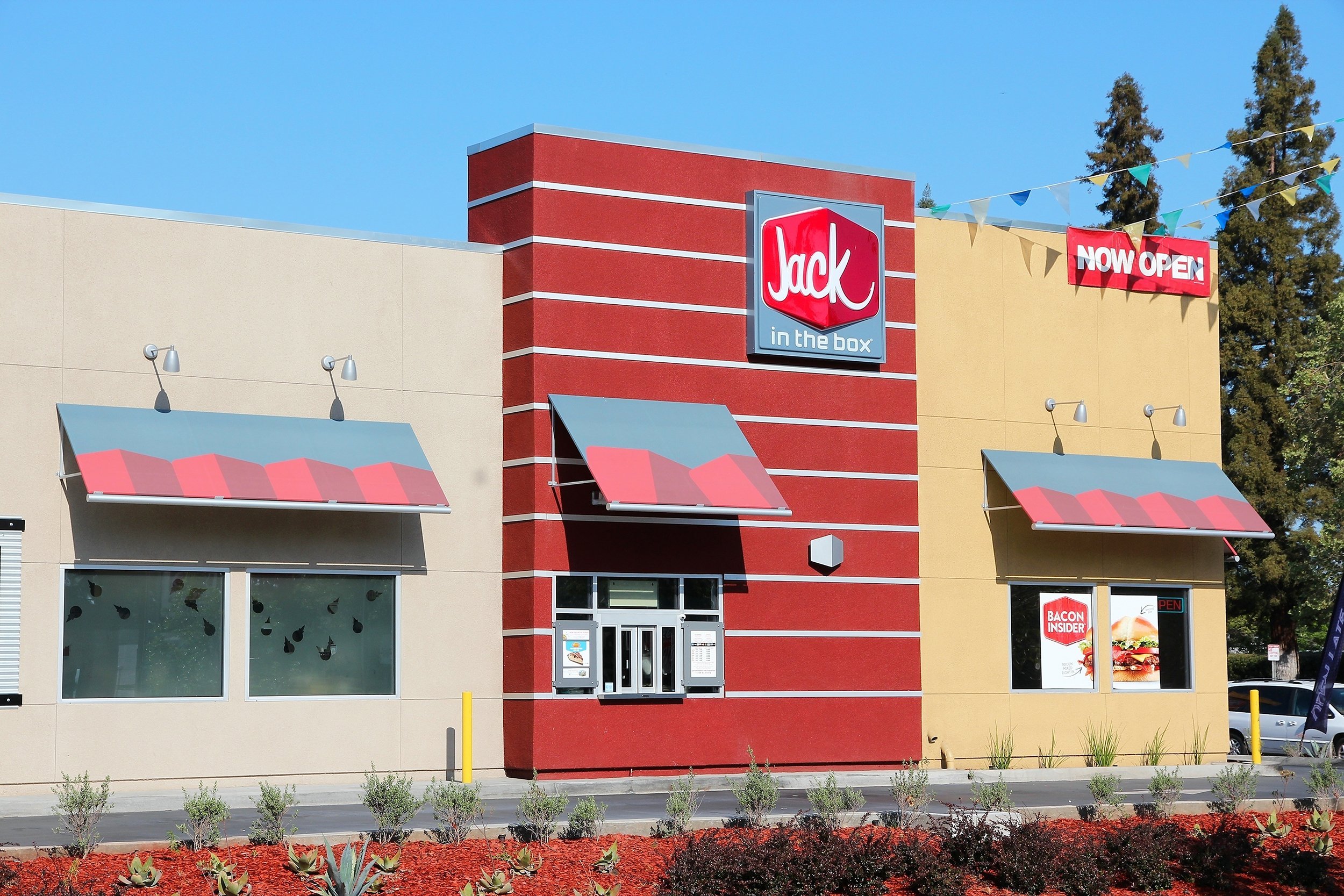
A deadly E. coli outbreak in 1993 led to 171 hospitalizations and four deaths in four states, but the chain slowly won back customers and now has more than 2,200 locations in 21 states. It recently launched an app and offers delivery through Grubhub, DoorDash, or Postmates as it considers ordering and payment kiosks and mobile-enhanced drive-thrus, continuing its push toward younger, hungrier crowds.
Jack in the Box Menu Then
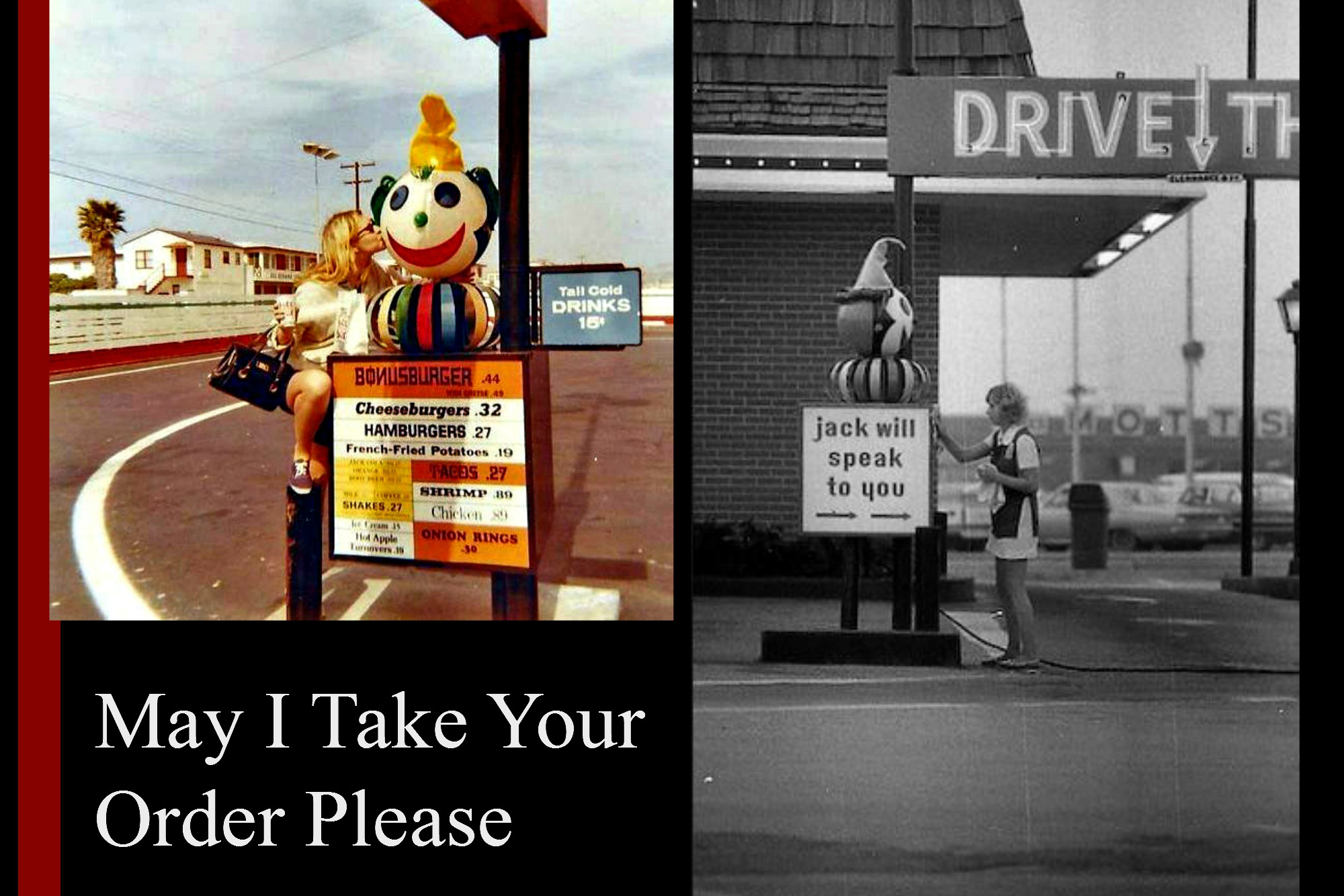
Just remember how small this menu is: Your entrees were a hamburger, cheeseburger, Bonusburger, tacos, shrimp or chicken, with fries and onion rings as sides. There was ice cream, hot apple turnovers, and shakes, too, but the most notable item among the beverages is the chain-branded Jack Cola.
Jack in the Box Menu Now
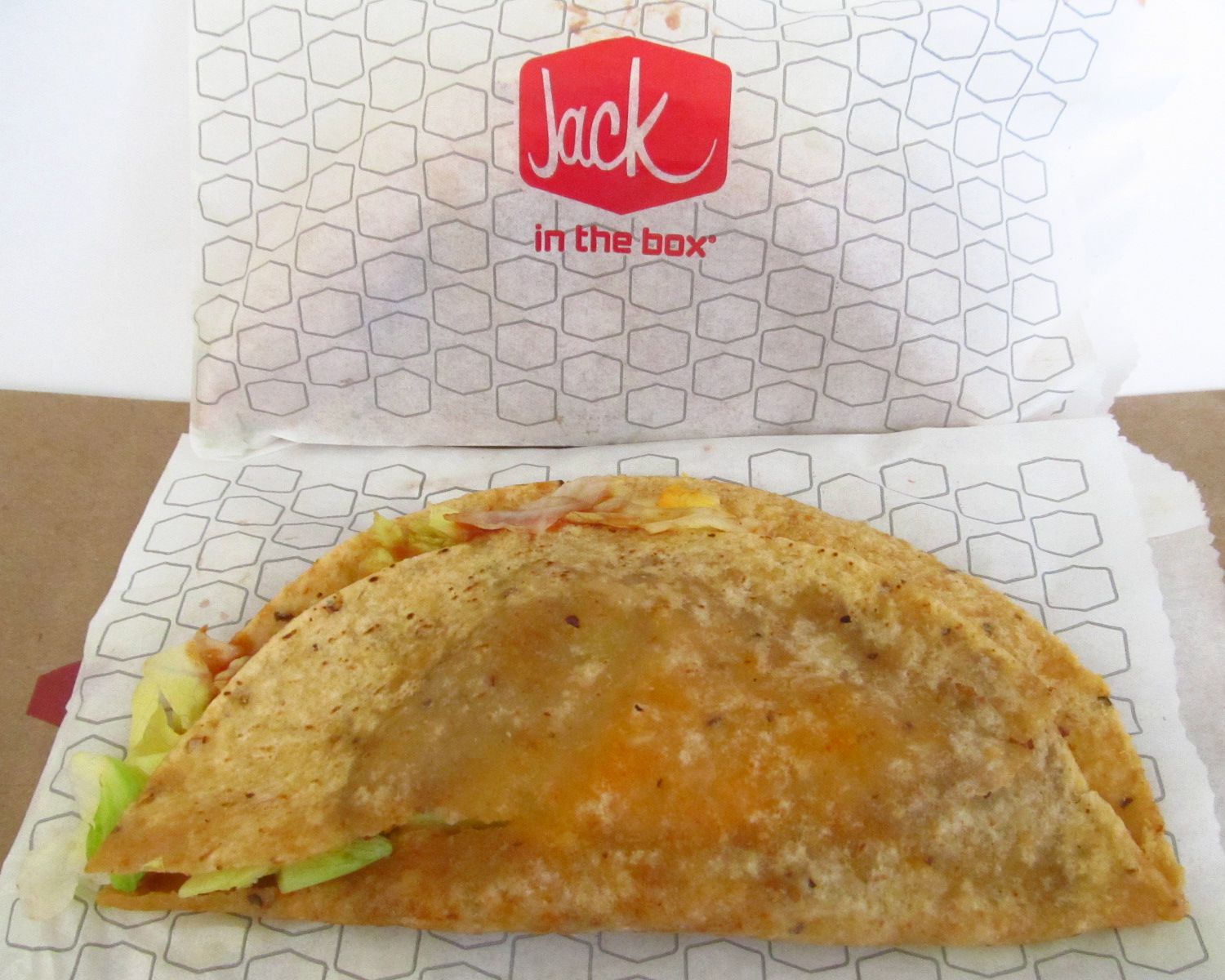
Burgers and sourdough sandwiches are at the center, but buttery burgers, sides (tacos, fries, egg rolls, and stuffed jalapeños), breakfast and “brunchfast” menus and a late-night menu catering to people with the munchies make Jack in the Box one of the few fast-food chains to still embrace its bad-for-you side.
Popeyes Louisiana Kitchen Then
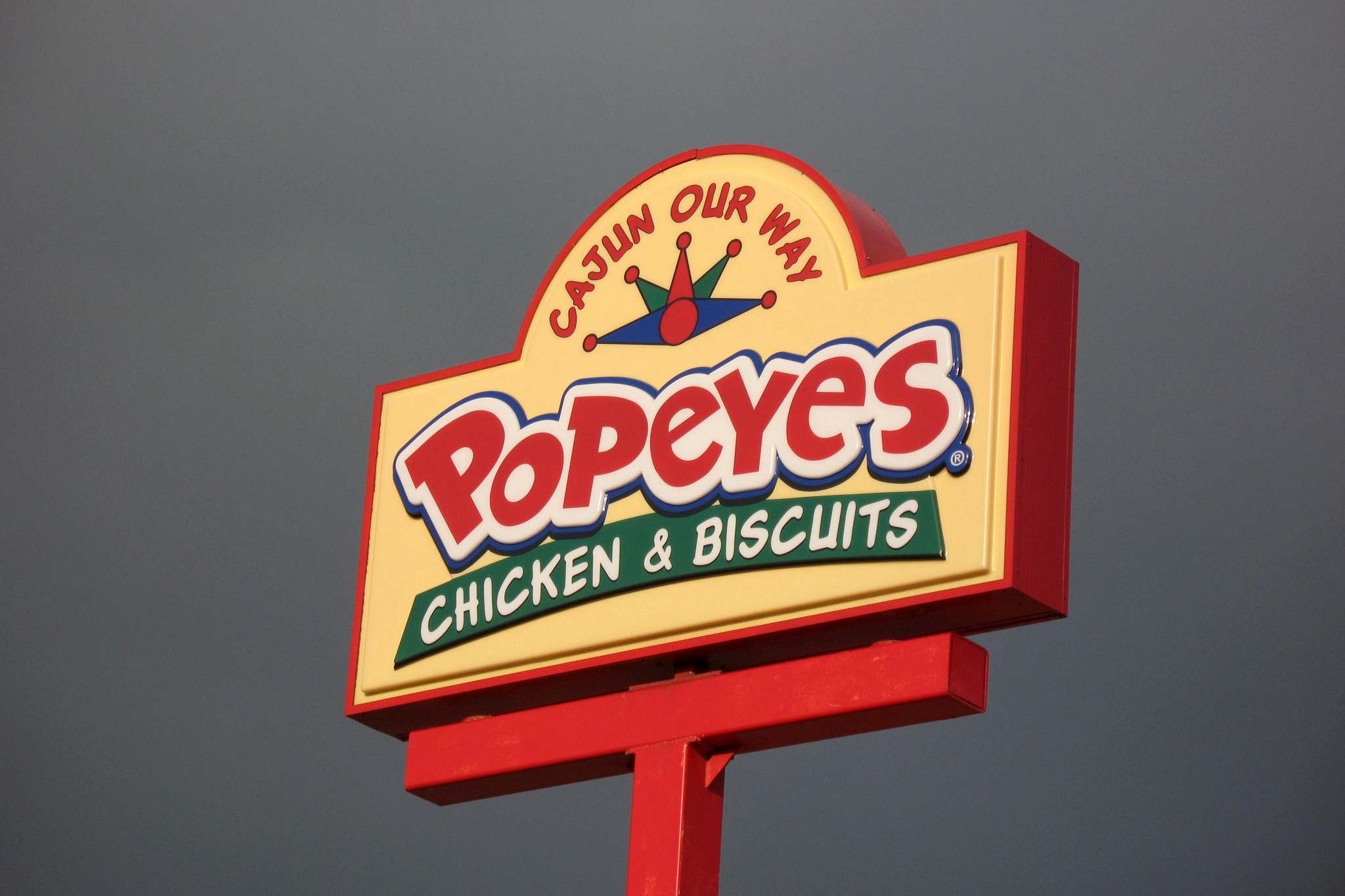
Alvin Copeland didn’t name his New Orleans-area restaurant after a cartoon character in 1972, but after “The French Connection” protagonist Popeye Doyle. Though its famous biscuits wouldn’t be on the menu until 1983, Popeyes was already on its way to becoming a national chicken institution.
Popeyes Louisiana Kitchen Now
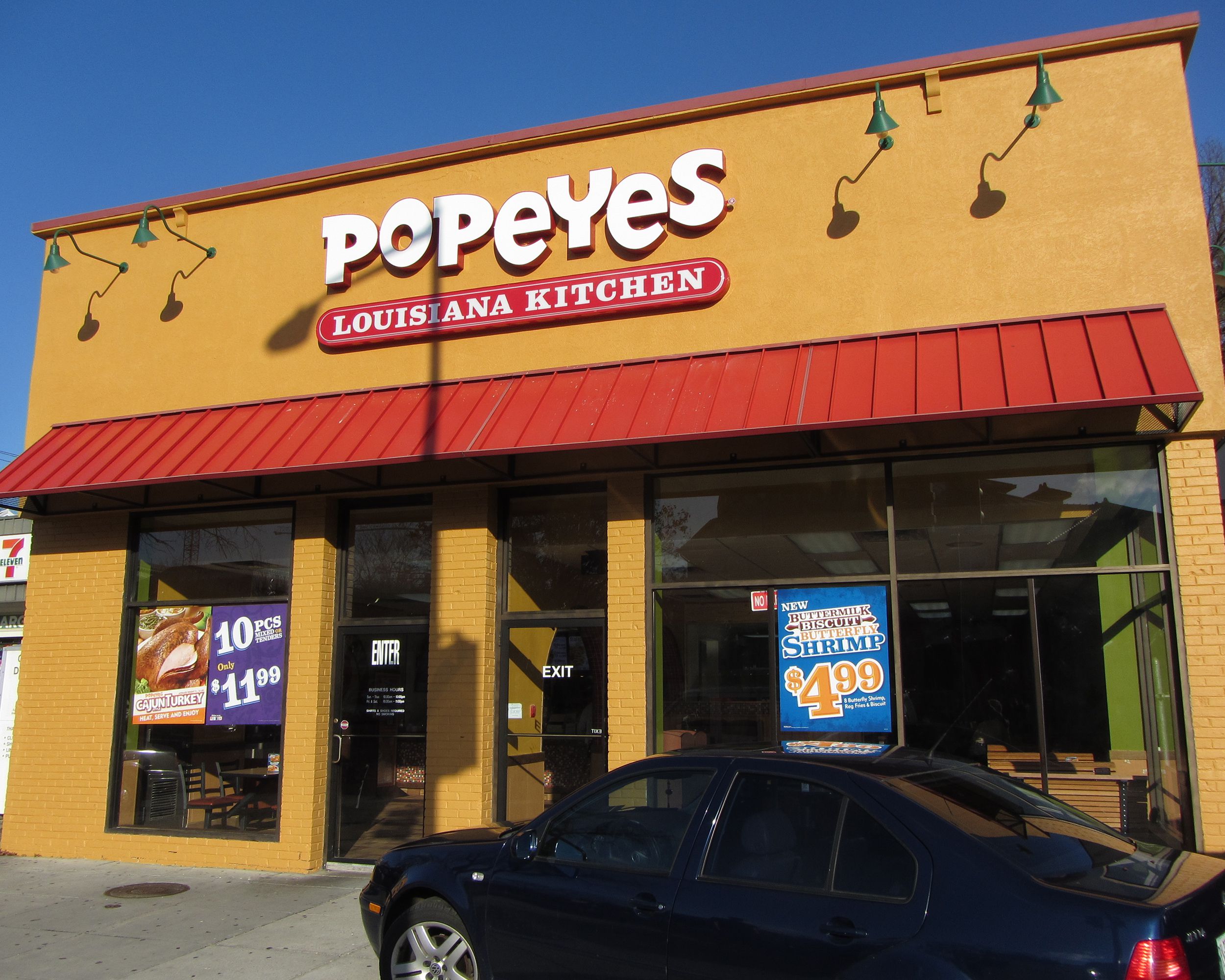
In 2008, Popeyes rebranded into its current “Louisiana Kitchen” format and has since expanded to more than 3.450 locations. But it was a takeover by Burger King and Tim Hortons owner Restaurant Brands for $1.8 billion that will have the biggest impact on Popeyes. The company has appointed a tech czar to oversee its continued foray into mobile apps and ordering kiosks.
Popeyes Louisiana Kitchen Menu Then
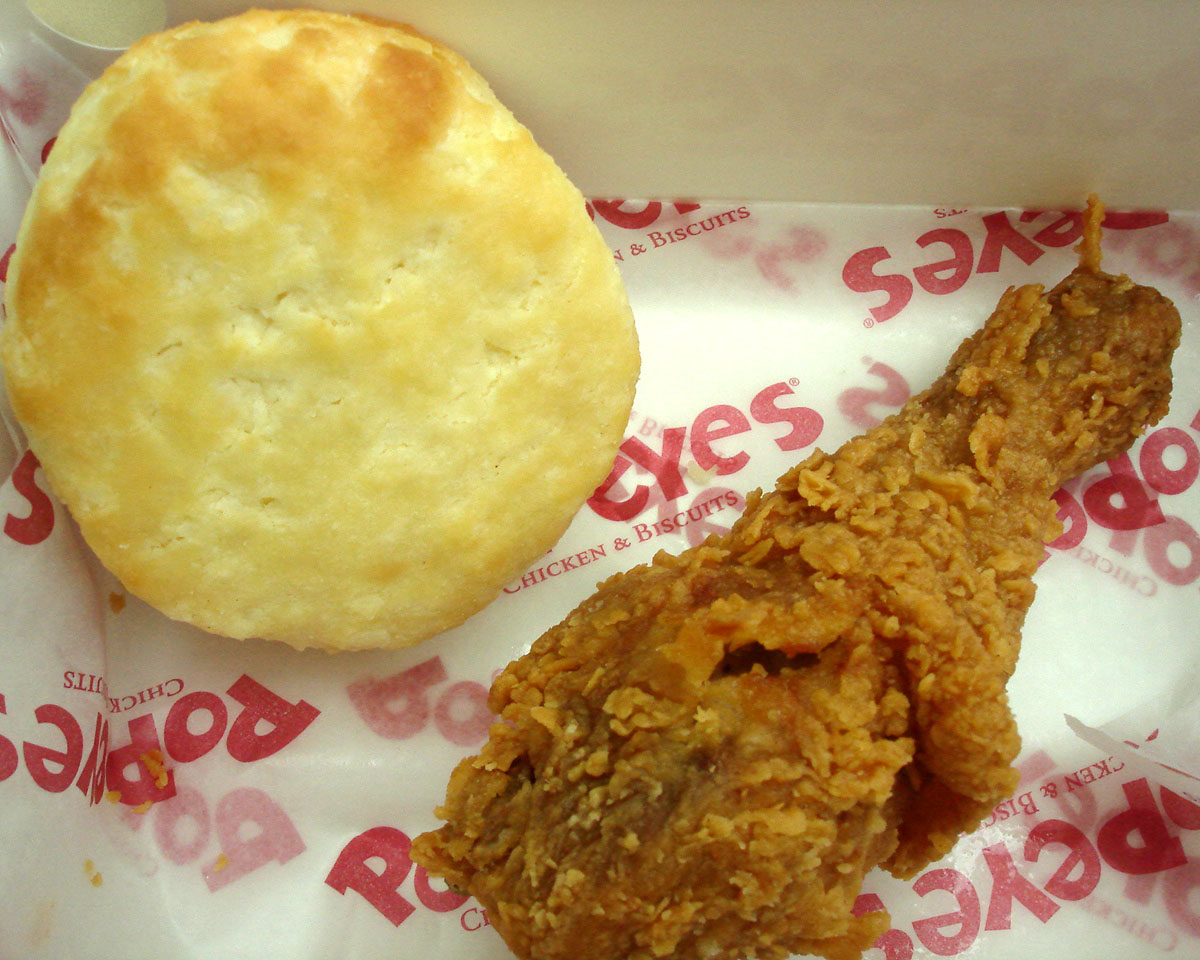
Intellectual property rights weren’t all they could’ve been at the time, so Popeye’s — despite not being named for the cartoon character — featured that character and his friends all over the chicken menu. Louisiana fried chicken was still front and center, but clam dinners, chicken tacos and corn dogs also dotted the menu, along with livers and gizzards.
Popeyes Louisiana Kitchen Menu Now
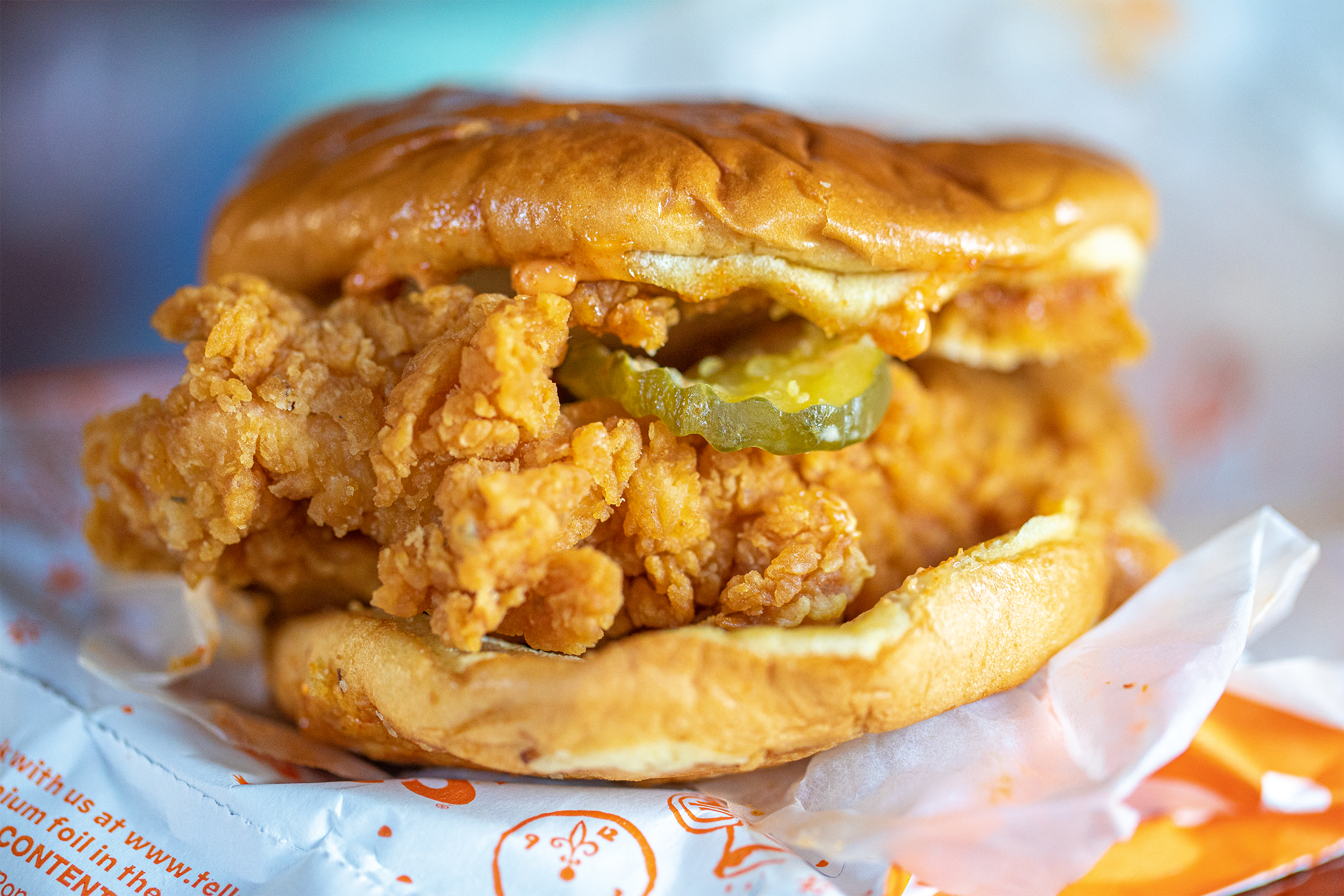
Popeyes lives and dies with its Bonafide Chicken, but shrimp, fish, po’ boys, and down-home sides such as jambalaya, red beans and rice, green beans and cajun rice retain its low-country ties. Still, the launch of its spicy chicken sandwich had people waiting in long, long lines.
Related: The Best (and Worst) Fast-Food Spicy Chicken Sandwiches
Five Guys Then
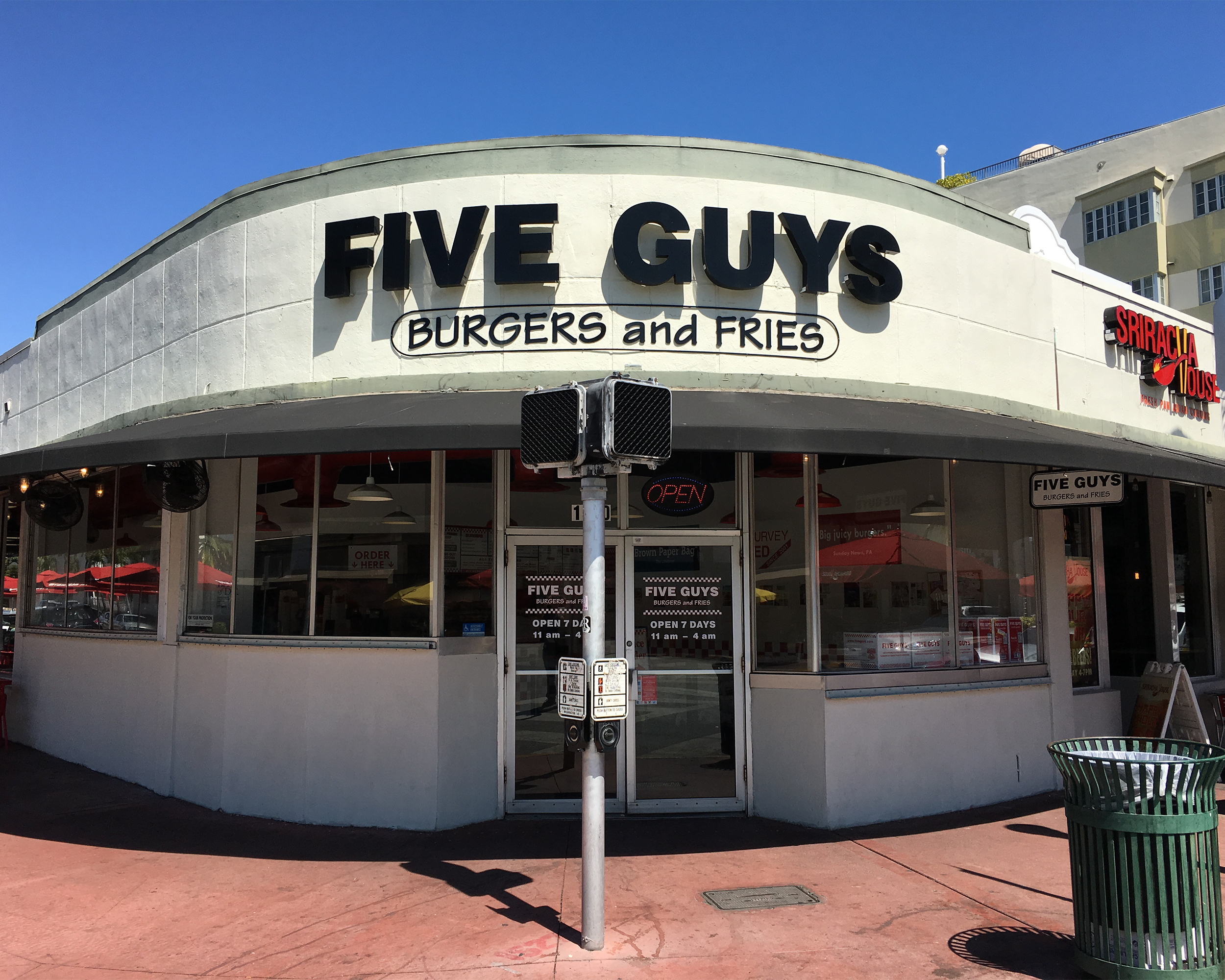
Jerry and Janie Murrell told their kids they could start a business or go to college, and in 1986 the family opened the first Five Guys carry-out burger joint in Arlington, Virginia. The Murrells and their four sons (later five) kept ingredients simple and made it appealing far beyond its D.C. fanbase.
Five Guys Now
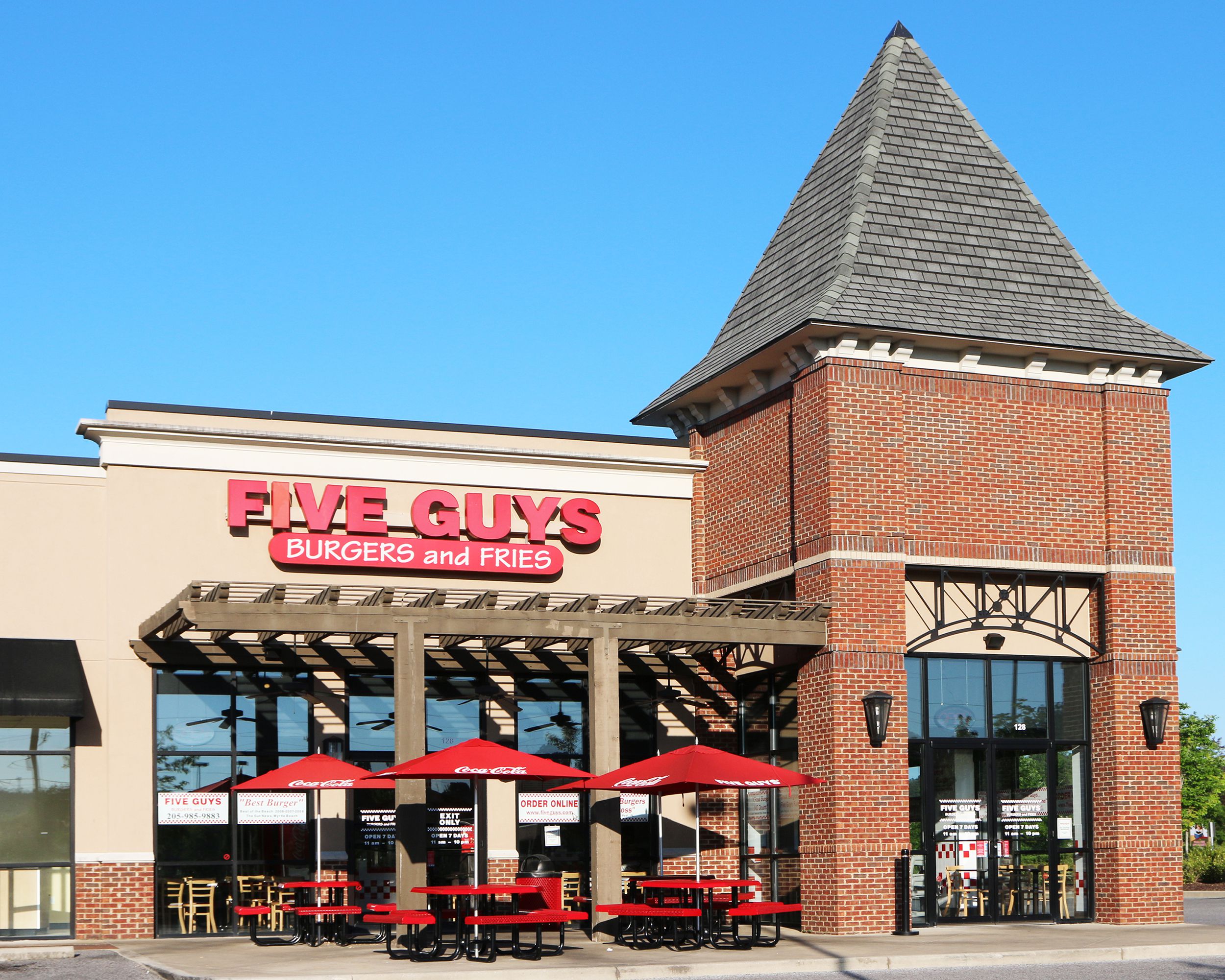
Since opening up for franchising in 2002, Five Guys now has more than 1,700 locations in more than a dozen countries. The menu has stayed simple, sparing the chain from many of the obstacles that have led competitors to blow out menus and throw all sorts of tech toys at customers.
Five Guys Menu Then
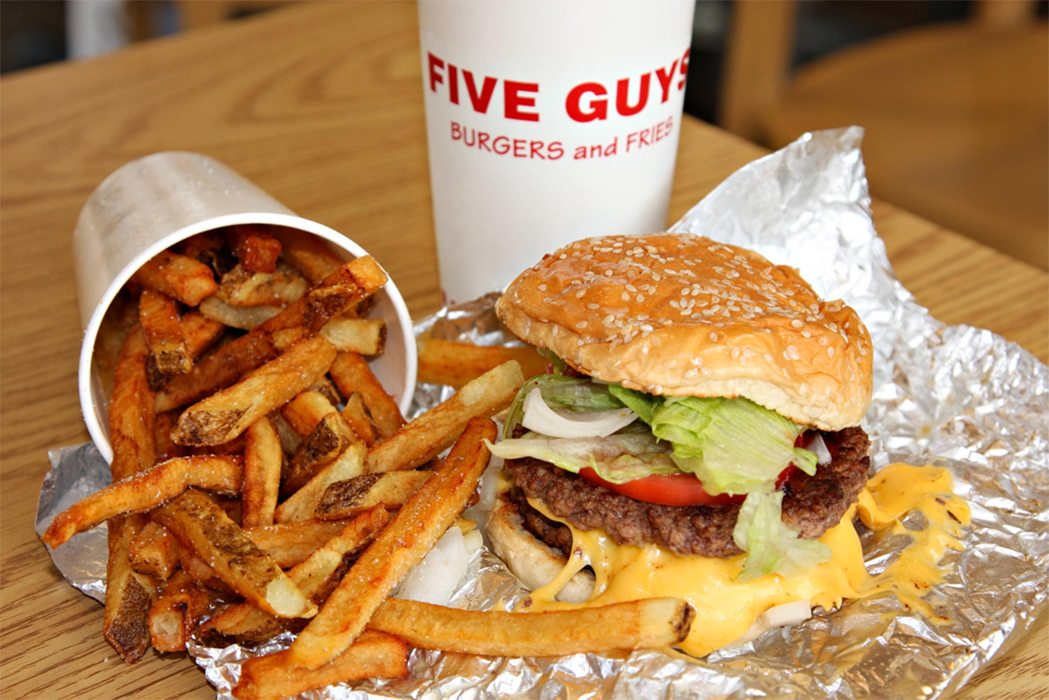
The menu you see today is basically the menu Five Guys started with, boiling down to burgers, hot dogs, fries, and drinks.
Five Guys Menu Now
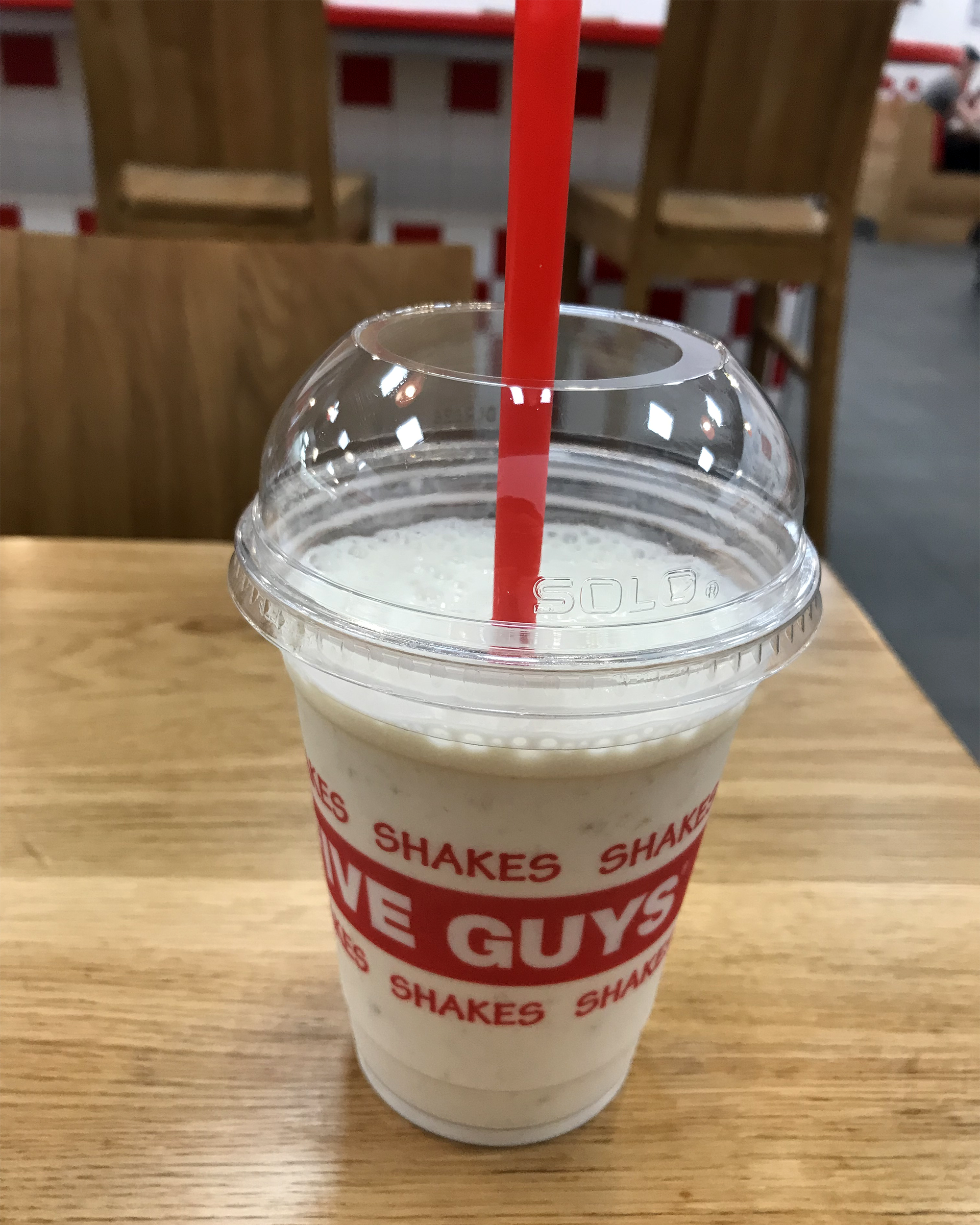
Take the old menu and add a hot dog, veggie sandwich, and grilled cheese. But the change everyone cares about is the milkshake, the capper to the “modernized” Five Guys menu (with a bacon option) that wasn’t made until 2014.
Sonic Drive-In Then
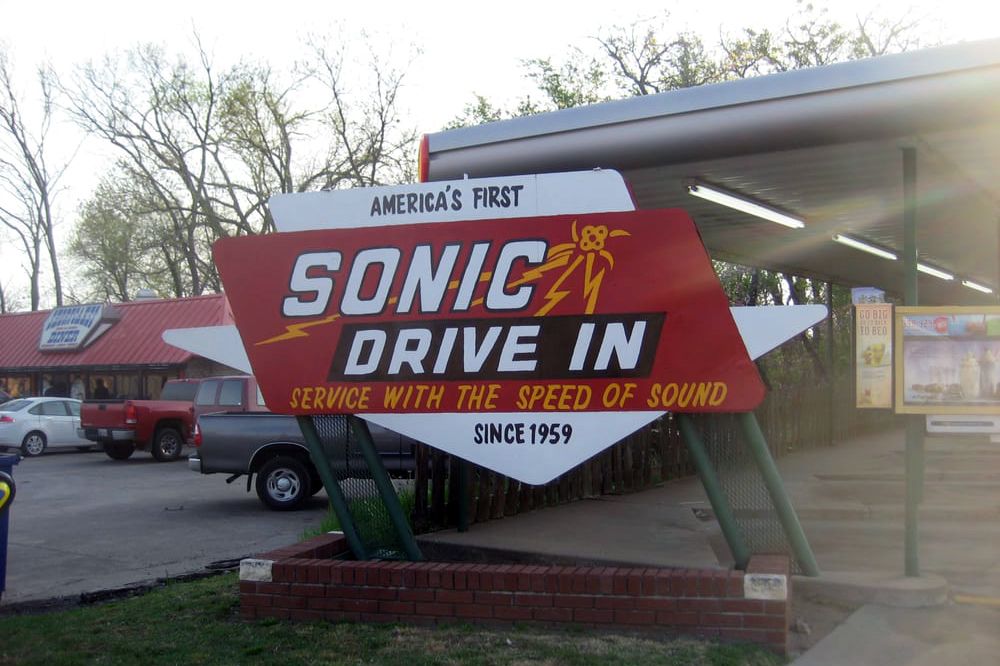
Troy N. Smith Sr. tried two eatery concepts before he and a partner bought five acres with a log house and a walk-up root beer stand in 1953. The stand was so successful selling root beer, hamburgers, and hot dogs that he bought out his partner. He installed an intercom system to process orders “at the speed of sound” and sales tripled. By 1956, he and new partners had franchised the idea.
Sonic Drive-In Now
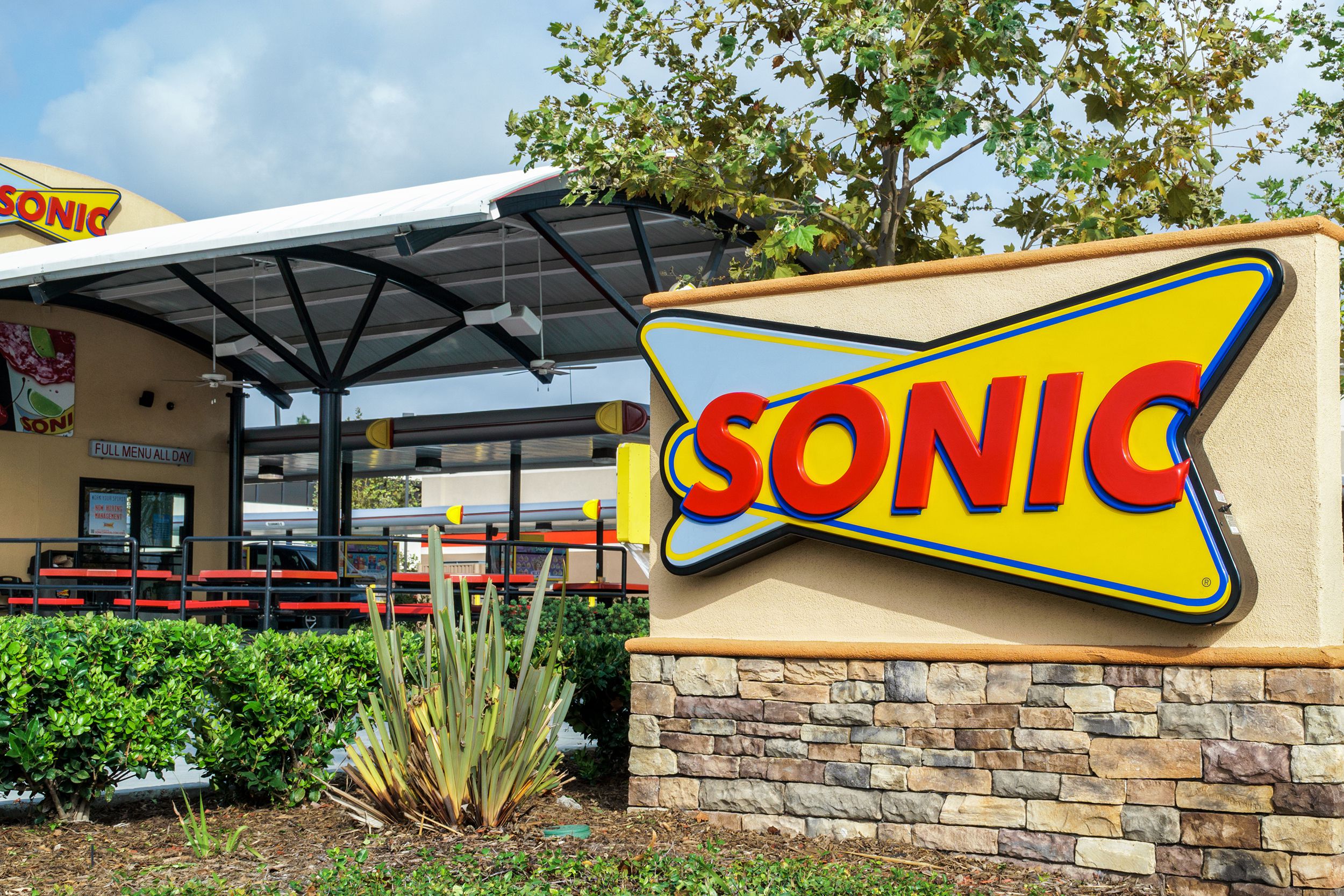
With more than 3,500 locations, Sonic has to adapt to keep growing. Northern locations are getting drive-thrus and dining rooms, and some locations are getting digital menus, LED lighting, and even solar panels.
Related: This Burger Chain Saw the Biggest Pandemic Sales Boost
Sonic Drive-In Menu Then
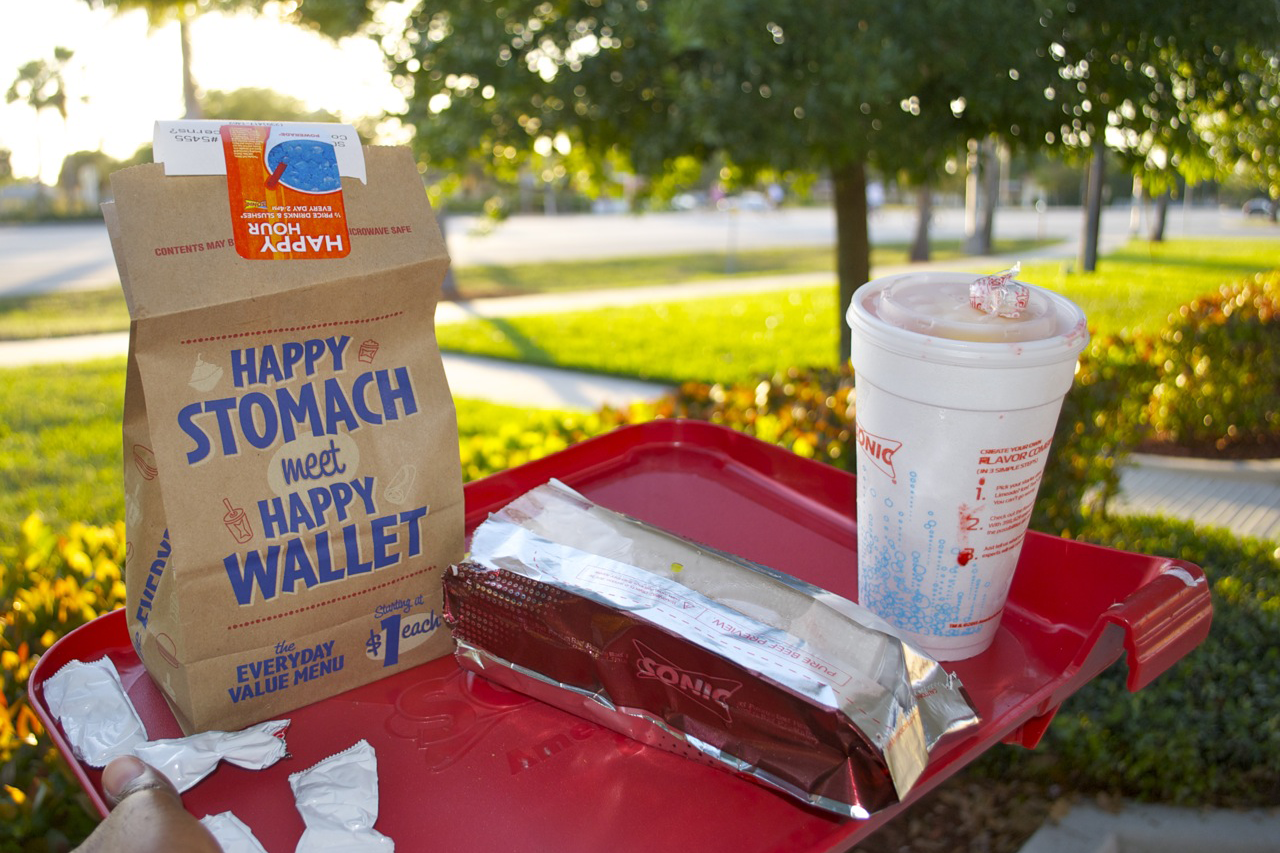
In 1959, there was totally a Whopper on Sonic’s menu, though it was a fish sandwich. Coney dogs, Frito pie, burgers, grilled cheese, barbecue beef, fries, tater tots, onion rings, shakes, Frosties (just more intellectual property disputes), slushes, and fried pie rounded out a menu that is nearly as diverse as the current version.
Sonic Drive-In Menu Now
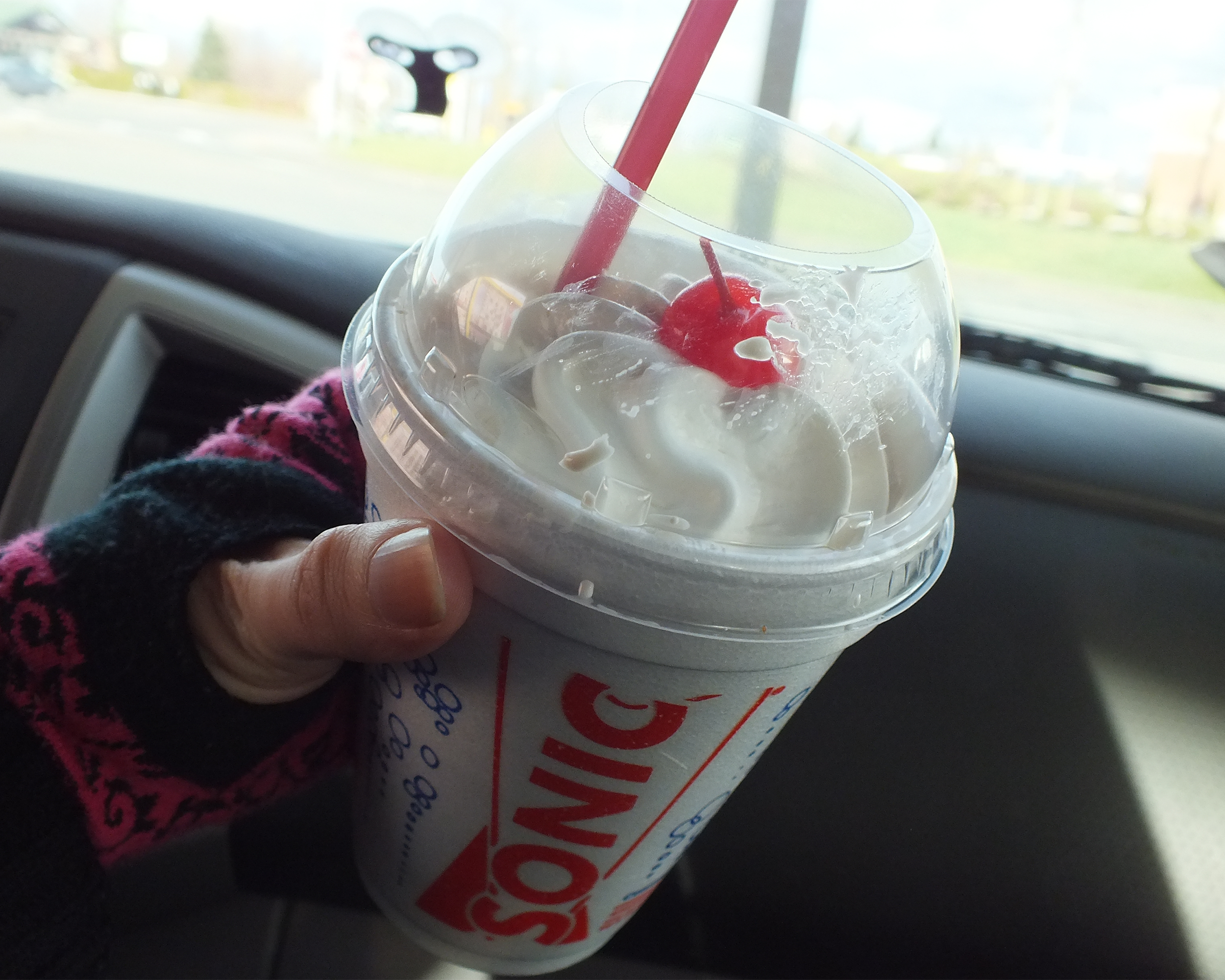
Sonic’s menu is still good for its drink combinations and burgers for breakfast, but new cheesesteaks, chicken offerings, breakfast burritos, and shakes have made an already diverse menu one of the biggest in the industry.
